Forums
- Forums
- Axis And Allies Forum
- General Discussion
- Aviation News
Aviation News
Post a reply
- Go to Next topic
- Go to Welcome
- Go to Introduce Yourself
- Go to General Discussion
- Go to Screenshots, Images and Videos
- Go to Off topic
- Go to Works in Progress
- Go to Skinning Tips / Tutorials
- Go to Skin Requests
- Go to IJAAF Library
- Go to Luftwaffe Library
- Go to RAF Library
- Go to USAAF / USN Library
- Go to Misc Library
- Go to The Ops Room
- Go to Made in Germany
- Go to Campaigns and Missions
- Go to Works in Progress
- Go to Juri's Air-Raid Shelter
- Go to Campaigns and Missions
- Go to Works in Progress
- Go to Skinpacks
- Go to External Projects Discussion
- Go to Books & Resources
-
 Main AdminA Colombian Air Force Kfir assigned to Comando Aereo de Combate No.1 (CACOM 1) prepares to take off during Exercise Relampago VI at Comando Aereo de Combate Number 5 (CACOM 5) in Rionegro, Colombia, July 26, 2021. Relampago VI provides joint training and improves readiness of U.S. and partner nation military personnel through interoperability training. (U.S. Air Force photo by Senior Airman Duncan C. Bevan)
Main AdminA Colombian Air Force Kfir assigned to Comando Aereo de Combate No.1 (CACOM 1) prepares to take off during Exercise Relampago VI at Comando Aereo de Combate Number 5 (CACOM 5) in Rionegro, Colombia, July 26, 2021. Relampago VI provides joint training and improves readiness of U.S. and partner nation military personnel through interoperability training. (U.S. Air Force photo by Senior Airman Duncan C. Bevan)
Colombian Air Force Kfirs fly over Colombia during Exercise Relampago VI, July 26, 2021. Relampago VI is a combined Colombian and U.S. exercise taking place in the U.S. Southern Command (SOUTHCOM) theater that focuses on techniques, tactics and procedures to strengthen the longstanding partnership between our armed forces. (U.S. Air Force photos by Senior Airman Duncan C. Bevan)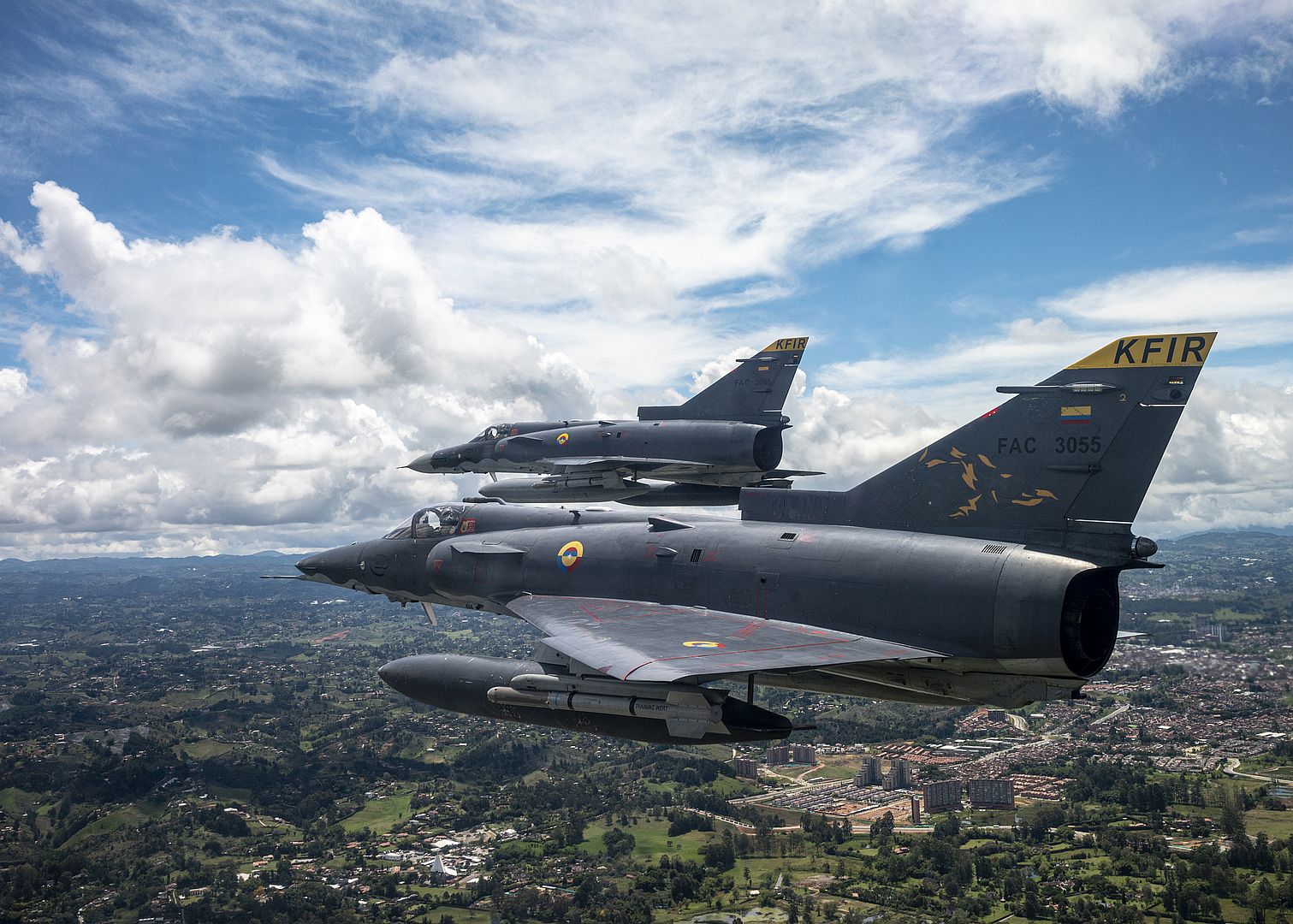
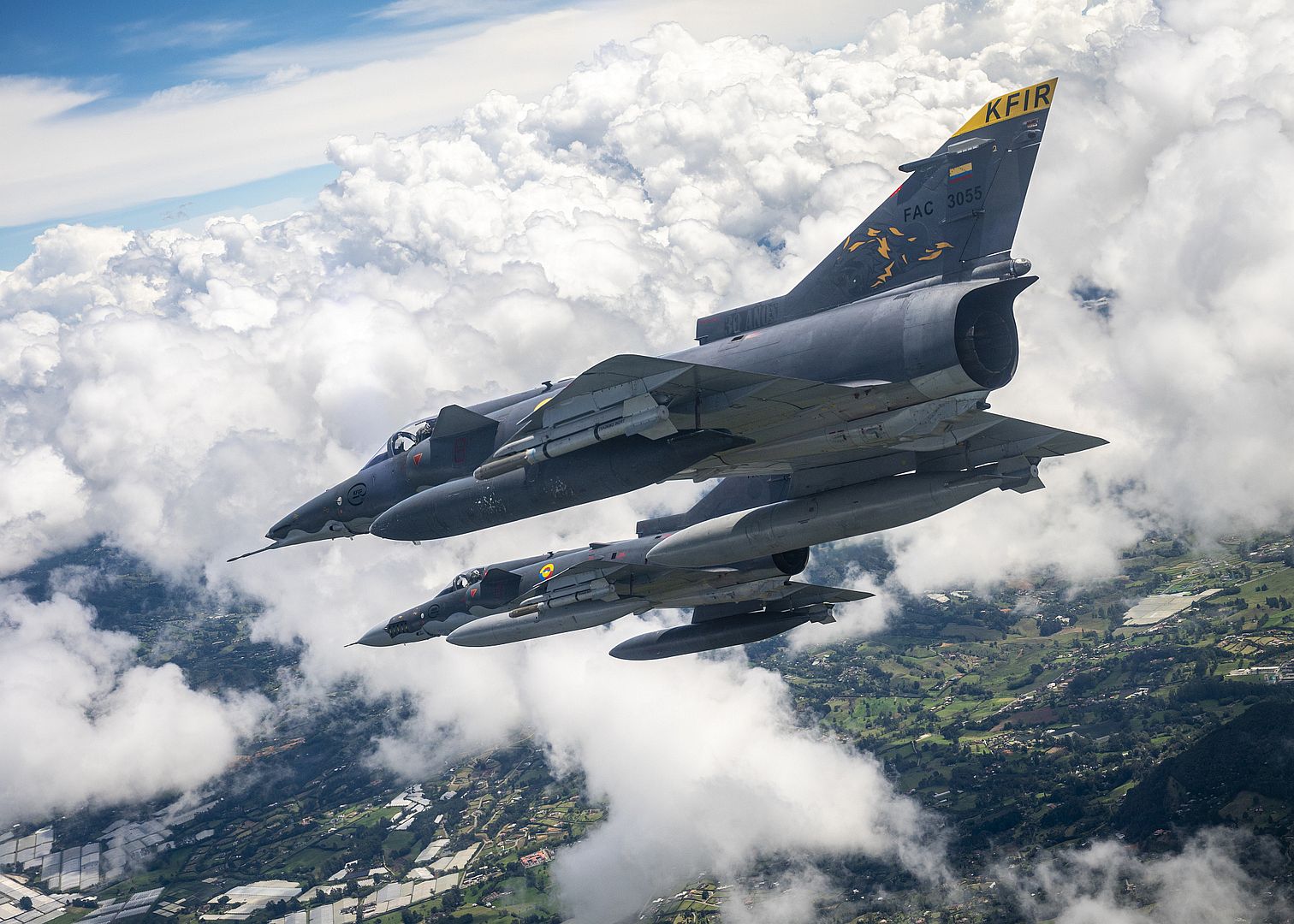
A U.S. Air Force F-16 Fighting Falcon assigned to the 79th Expeditionary Fighter Squadron flies over Colombia during Exercise Relampago VI, July 26, 2021. The United States is an enduring, reliable partner with a shared stake in the security and prosperity of the region, and this exercise will improve Colombian and U.S. forces’ capabilities to rapidly deploy and employ forces anywhere around the globe at any moment. (U.S. Air Force photo by Senior Airman Duncan C. Bevan)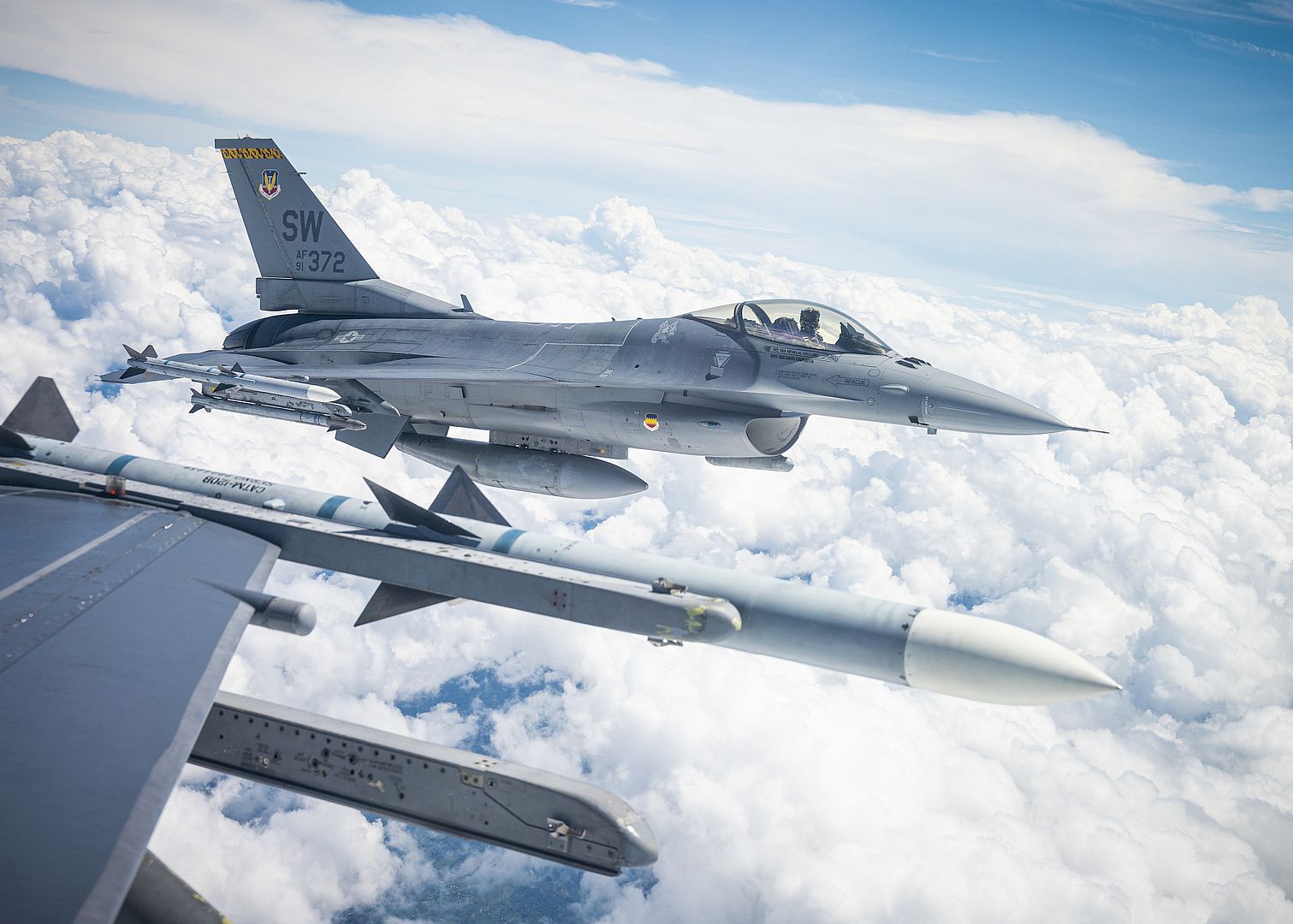
U.S. Air Force F-16 Fighting Falcons assigned to the 79th Expeditionary Fighter Squadron and Colombian Air Force Kfirs fly in formation over Colombia during Exercise Relampago VI, July 27, 2021. Relampago VI is a combined Colombian and U.S. exercise taking place in the U.S. Southern Command (SOUTHCOM) theater that focuses on techniques, tactics and procedures to strengthen the longstanding partnership between our armed forces. (U.S. Air Force photos by Senior Airman Duncan C. Bevan)
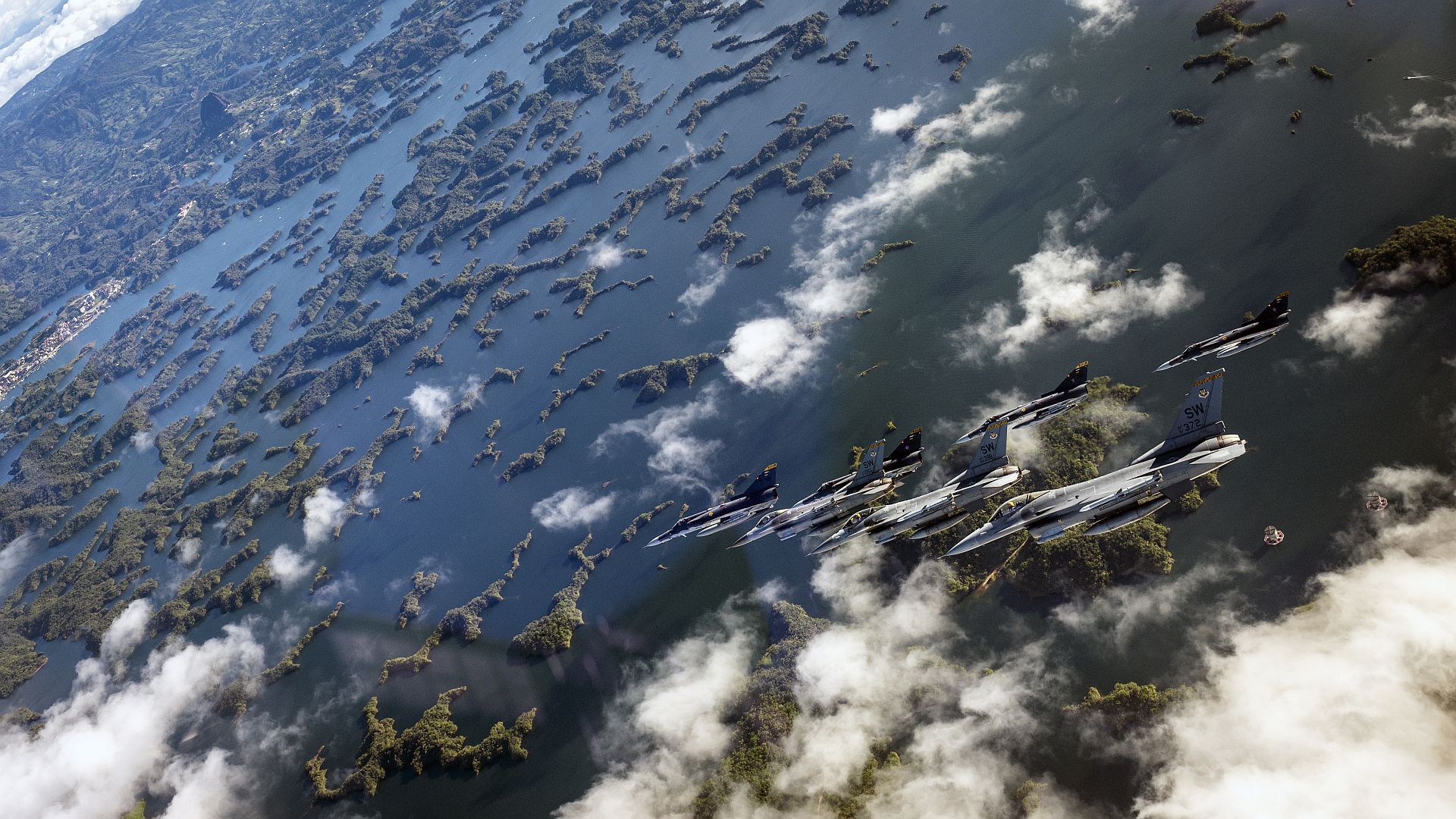

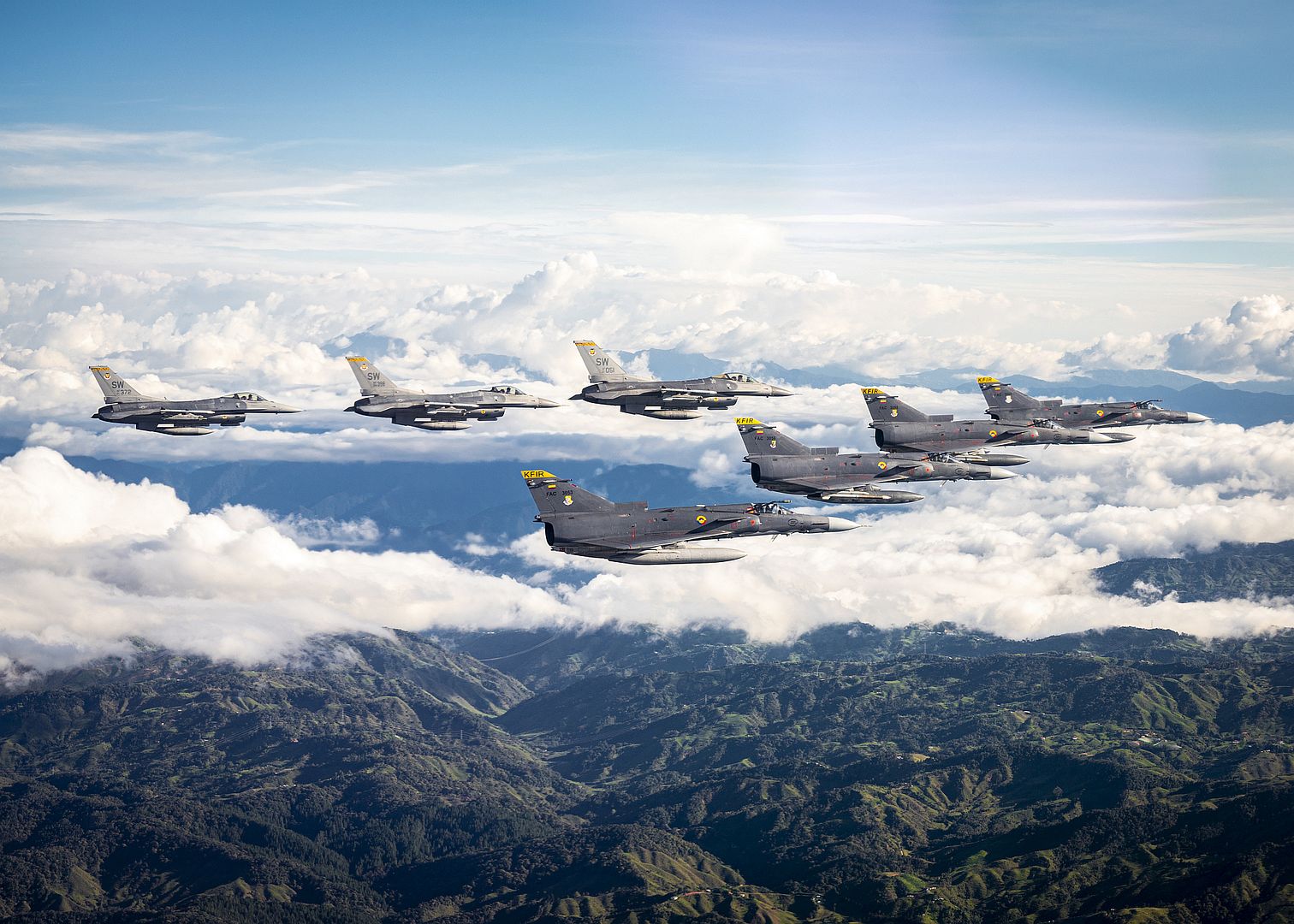

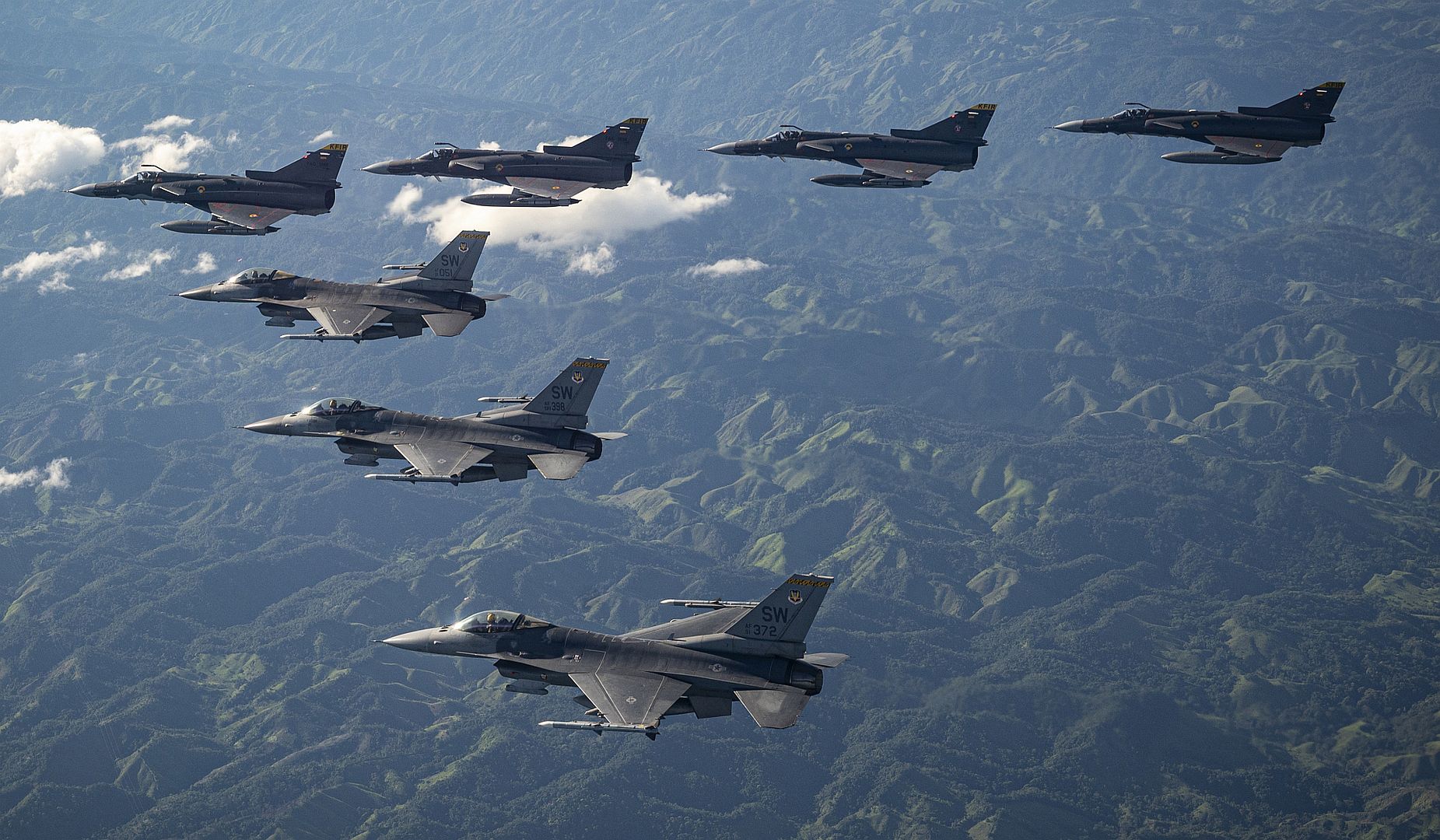
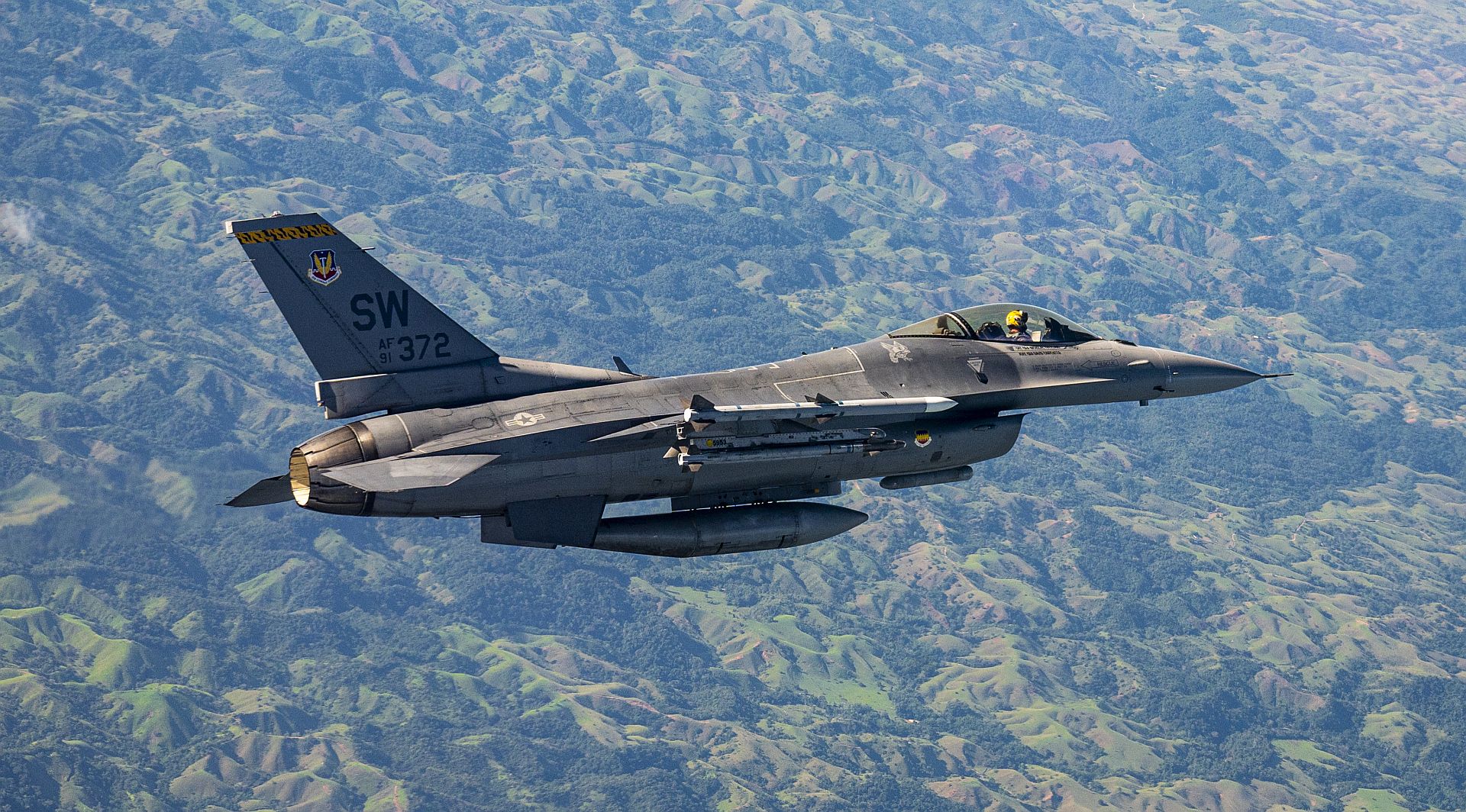
U.S. Air Force, 1Lt. Mathew Correa, an F-16 Fighting Falcon pilot assigned to the Ohio National Guard’s 180th Fighter Wing, takes off for a routine training mission, from the 180FW in Swanton, Ohio,, July 28, 2021. The 180FW is the Ohio National Guard’s premier fighter unit, providing protection of the homeland, effective combat power and defense support to civil authorities, while developing Airmen, supporting their families and serving in our community. U.S. Air National Guard photo by Senior Master Sgt. Beth Holliker.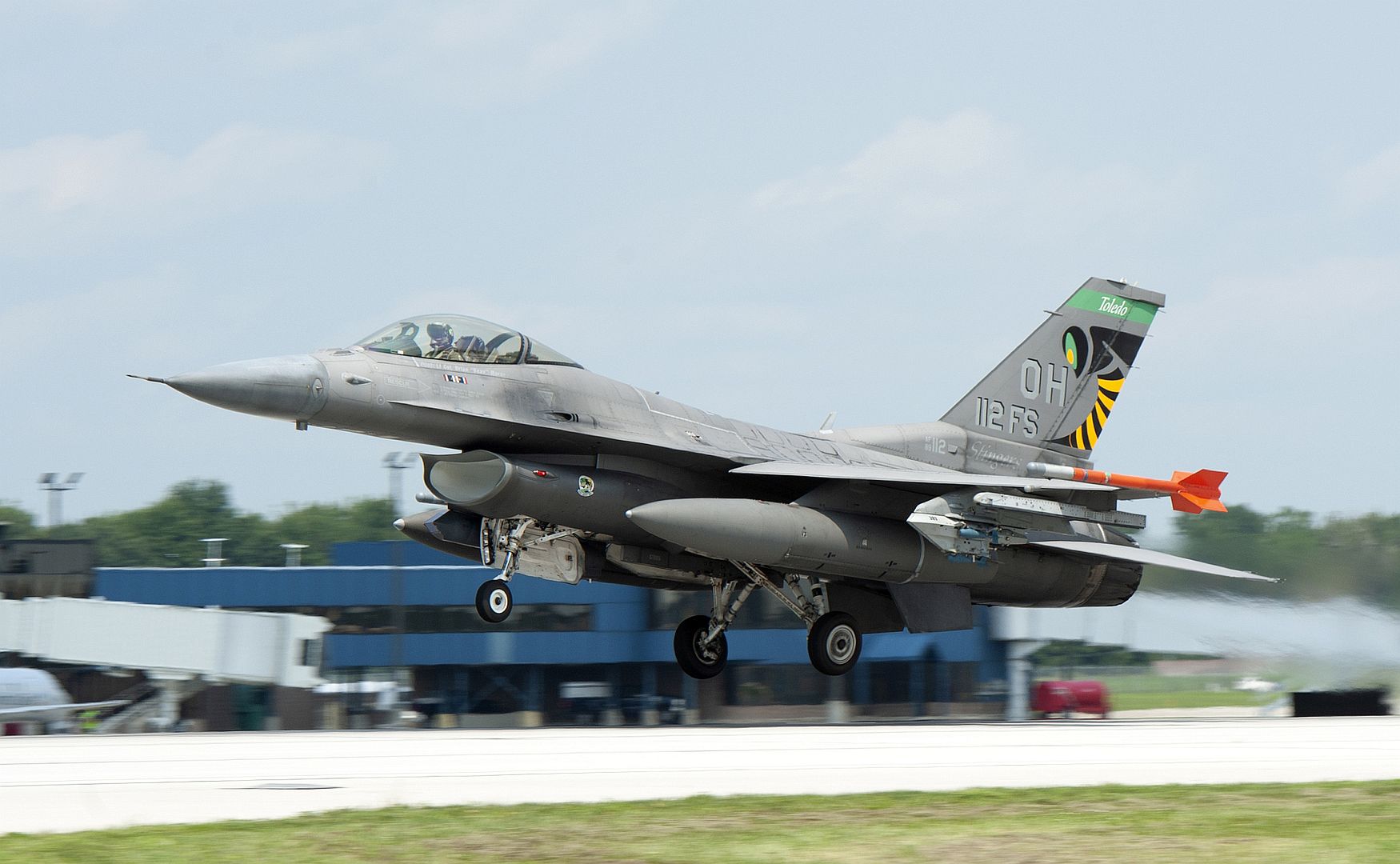
U.S. Air Force, Lt. Col. Curt Voltz, an F-16 Fighting Falcon pilot assigned to the Ohio National Guard’s 180th Fighter Wing, takes off for a routine training mission, from the 180FW in Swanton, Ohio,, July 28, 2021. The 180FW is the Ohio National Guard’s premier fighter unit, providing protection of the homeland, effective combat power and defense support to civil authorities, while developing Airmen, supporting their families and serving in our community. U.S. Air National Guard photo by Senior Master Sgt. Beth Holliker.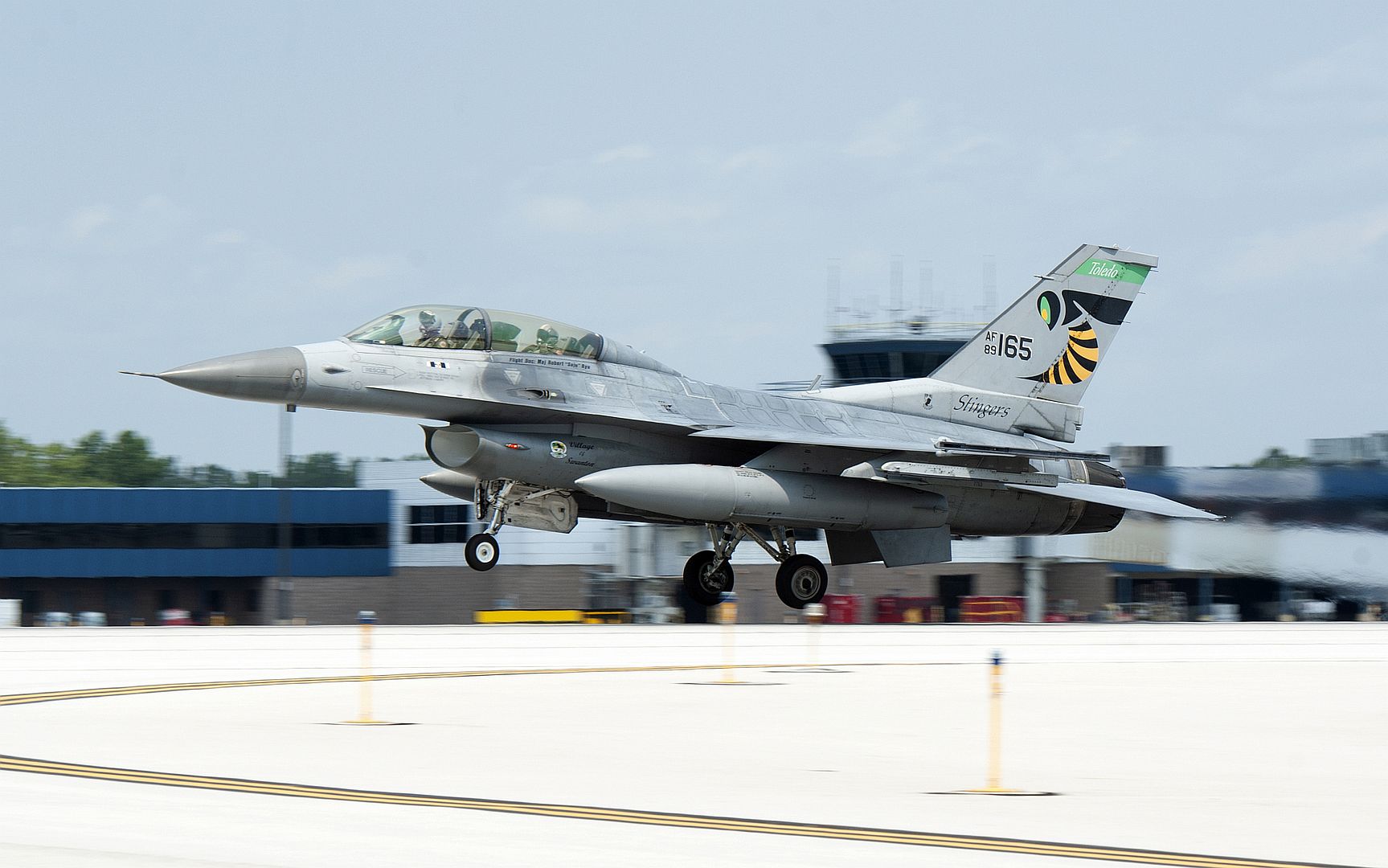
An A-10 Thunderbolt II, from the 124th Fighter Wing, Idaho Air National Guard, flies next to a KC-135R Stratotanker, from the 151st Air Fueling Wing, Utah Air National Guard on July 28, 2021. The Air National Guard provides almost half of the Air Force's tactical airlift support, combat communications functions, aero medical evacuations and aerial refueling. (U.S. Air National Guard photo by Tech. Sgt. Colton Elliott)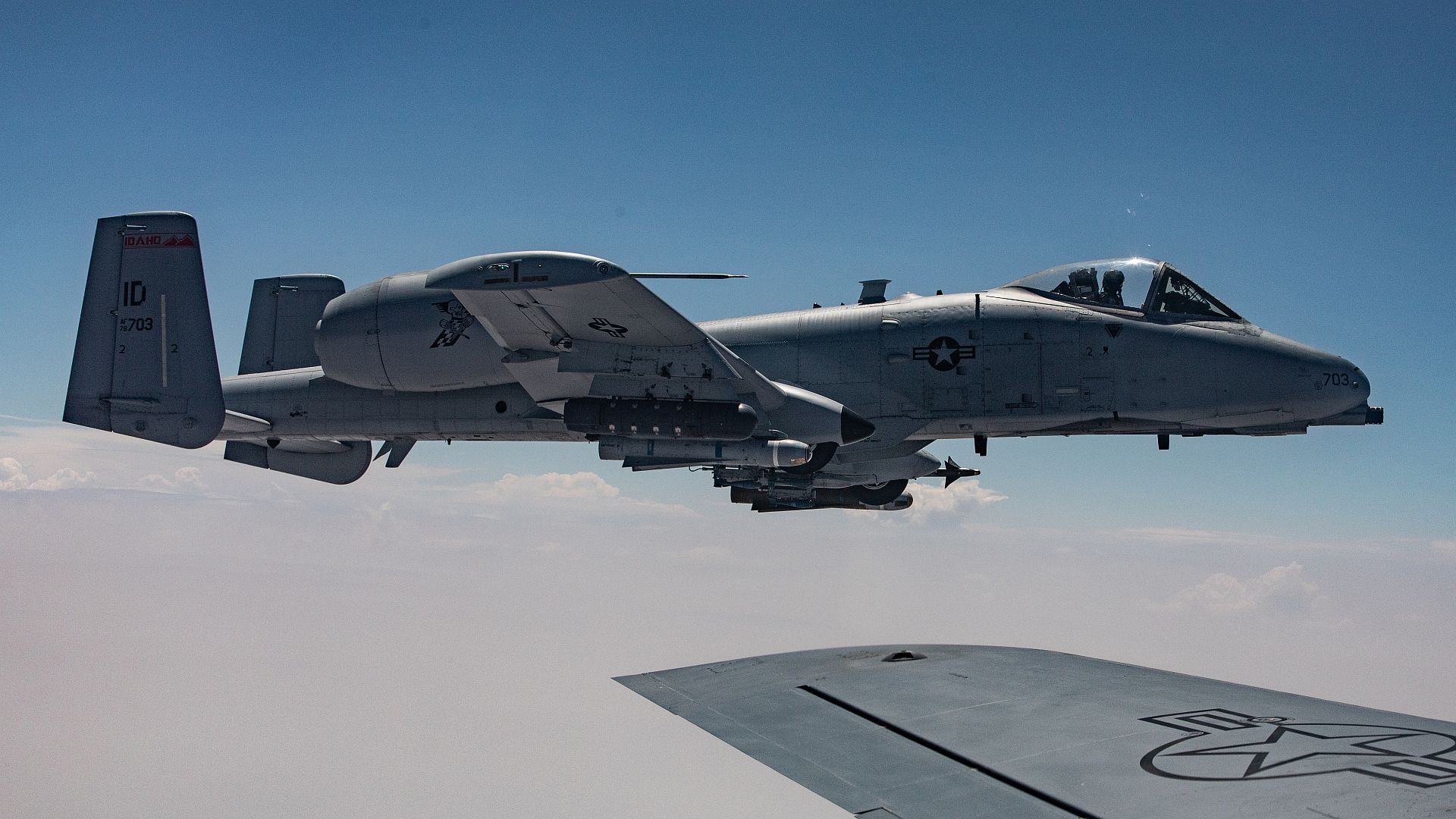
ARABIAN SEA (July 27, 2021) An F/A-18E Super Hornet fighter jet, attached to the �Royal Maces� of Strike Fighter Squadron (VFA) 27, lands on the flight deck of aircraft carrier USS Ronald Reagan (CVN 76) in the Arabian Sea. Ronald Reagan is deployed to the U.S. 5th Fleet area of operations in support of naval operations to ensure maritime stability and security in the Central Region, connecting the Mediterranean Sea and Pacific Ocean through the western Indian Ocean and three strategic choke points. (U.S. Navy photo by Mass Communication Specialist Seaman Eric Stanton).jpg?width=1920&height=1080&fit=bounds)
Toulouse, 29 July 2021 – German airline Condor Flugdienst GmbH has chosen the A330neo to renew its long-haul fleet with plans to introduce 16 aircraft of this new and more efficient type. The airline has signed an agreement with Airbus for the purchase of seven Airbus A330neo, and intends to lease a further nine.
Condor is the latest airline to order Airbus’ state-of-the-art A330neo widebody aircraft, bringing a step-change in performance and economics. The airline will operate the A330neo on its international long-haul network to the Americas, Africa, the Caribbean and Asia.
“Condor excels in operating profitably many routes no other carrier is able to; we are proud to see a demanding airline such as Condor selecting our latest-technology A330neo as the aircraft of choice, building the future of their widebody fleet in the relentless pursuit of lowest operating costs and passenger comfort,” said Christian Scherer, Airbus Chief Commercial Officer and Head of International. “By operating the A320 and A330neo aircraft side by side, the airline will benefit from all the commonality economics these two premium products offer, with the embedded flexibility to address new and existing markets with the right-sized, right-efficiency aircraft.”
Christian Scherer added, “The A330neo has won a thorough competition yet again, as it has in the vast majority of competitive evaluations these last three years. The decision by Condor to modernise its long-haul fleet with A330neos will also set a new benchmark on the airline’s trajectory towards more sustainable flying. We thank and applaud Condor for confirming the competitive value of the A330neo.”
Condor CEO Ralf Teckentrup said: "We are proud to be the German launch customer for the A330neo. Thanks to the latest technology and maximum efficiency of the aircraft, we will be taking off with our new plane from Autumn 2022 with fuel consumption of just 2.1 litres per passenger per 100 kilometres. With this value, we are the front-runner in Germany and, as the most popular leisure airline, we will consistently continue to interweave the themes of sustainability and holidays.”
Ralf Teckentrup added, "On board, our customers can expect the highest levels of comfort in a brand new Business Class, Premium Economy Class and Economy Class. We are looking forward to our new aircraft and to the successful cooperation with Airbus as a strong partner by our side.”
The Airbus A330neo is a true next-generation aircraft, incorporating the latest A350 technologies, with A330 profitability and Airbus commonality. Equipped with the stunning Airspace cabin, the A330neo offers a unique passenger experience, brimming with the latest in-flight entertainment systems and connectivity.
The A330neo is powered by Rolls-Royce Trent 7000 engines and features a new wing with increased span and A350-inspired winglets. The aircraft also provides an unprecedented level of efficiency, with 25% lower fuel-burn and CO2 emissions per seat than previous-generation competitors. Thanks to its tailored, mid-sized capacity and excellent range versatility, the A330neo is considered the ideal aircraft to support operators in their post-COVID-19 recovery.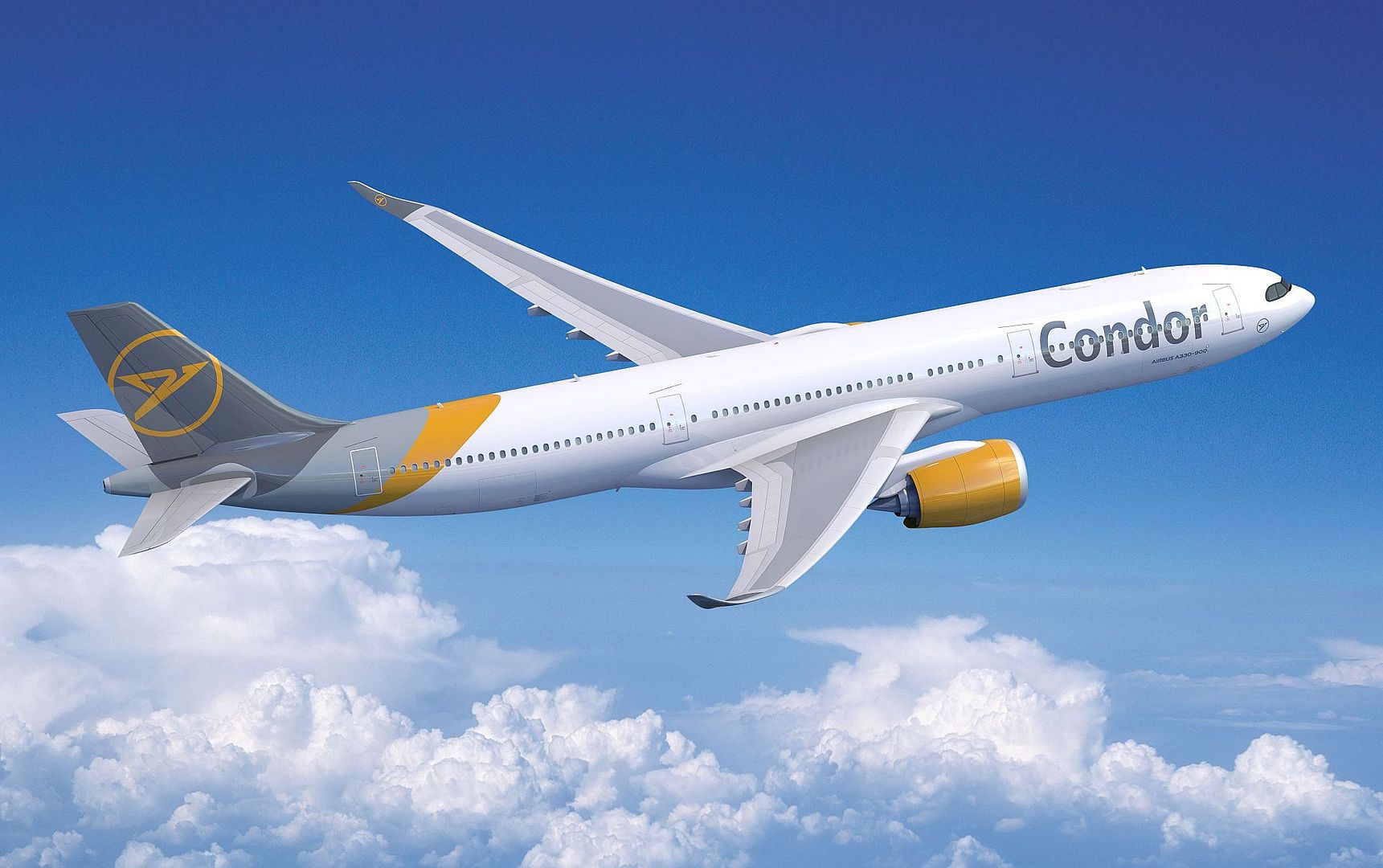
The Ministry of Defence has signed a £250 million contract with British industry 'Team Tempest' partners, driving forward the next phase of the major national and international endeavour to develop the next generation of combat air, the Defence Secretary has today announced.
Known as Tempest, the Future Combat Air System is expected to combine a core aircraft with a whole network of capabilities such as uncrewed aircraft and advanced data systems to form a next generation mix designed to enter service from the mid-2030s.
International collaboration, with the UK, Italy and Sweden signing a Memorandum of Understanding last year, could support around 62,000 jobs per year and contribute in the region of £100 billion to the UK economy between 2021 and 2050.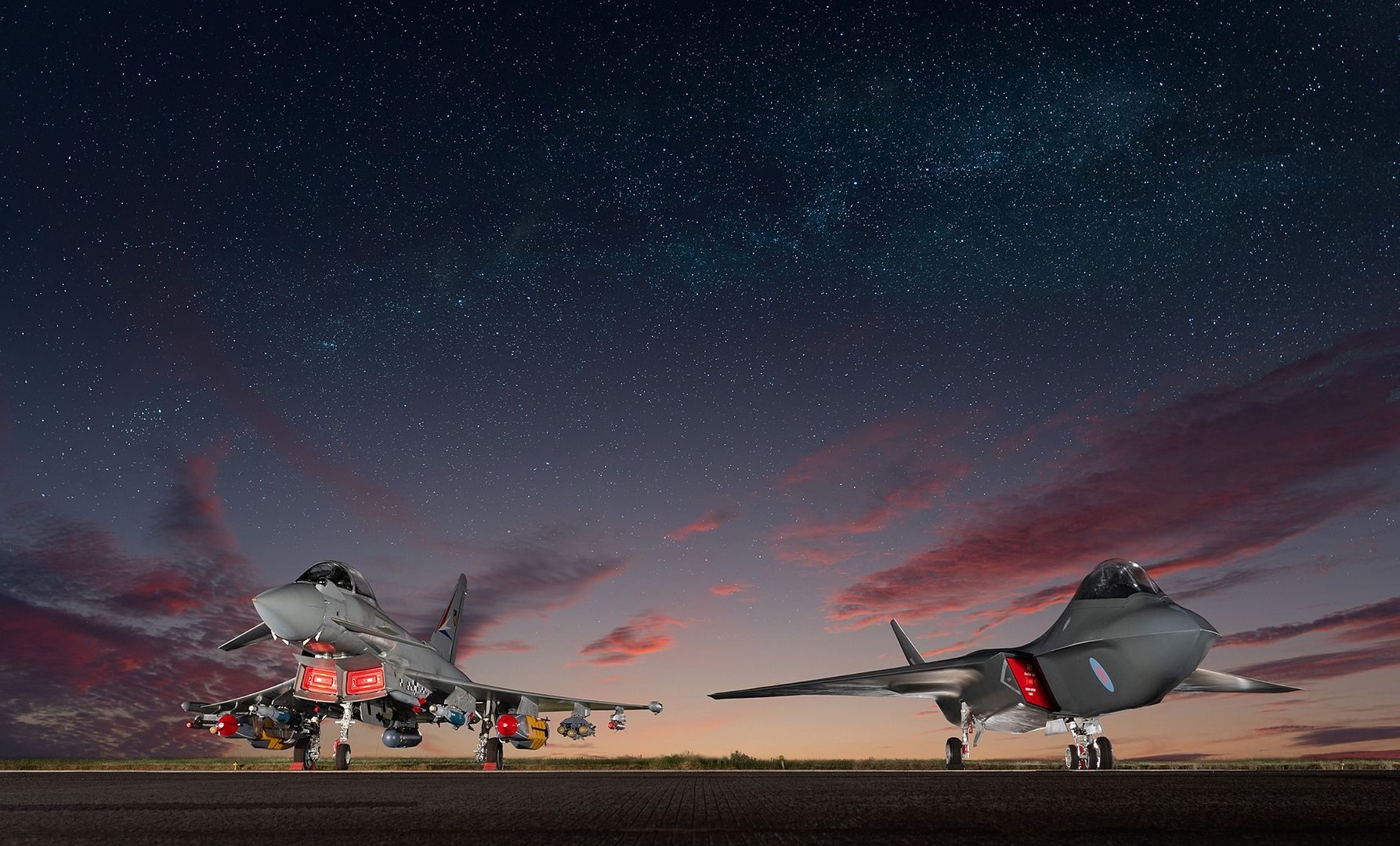
One of the last F/A-18 A/B Classic Hornet aircraft to grace the skies over the Northern Territory will be a distinctive magpie Hornet.
F/A-18A Hornet A21-018 now sports a bold black-and-white livery, the last commemorative paint scheme that Boeing Defence Australia will apply to a Royal Australian Air Force F/A-18A/B Hornet ahead of No. 75 Squadron’s transition to the F-35A Lightning II next year.
The paint scheme depicts the centerpiece of No. 75 Squadron’s crest, the magpie.
Reflecting on what it meant to be a member of No. 75 Squadron, Warrant Officer Graham Docking, the unit’s warrant officer engineering, said it provided a sense of importance and feeling involved in "something bigger than yourself".
“It’s about a sense of purpose and creating experiences and memories that will last a lifetime," Warrant Officer Docking said.
“When you’re posted to 75 Squadron, it’s not about being in just another squadron; you’re a magpie."
The squadron adopted the magpie as it is a belligerent defendant of its young with the courage to attack, symbolic of the squadron’s wartime activities since World War II, and it embodies the squadron's motto which is to Seek and Strike.
“The aircraft has been painted predominately black; with flecks of white on its wings and tail and a pronounced white patch on the back of its neck," Warrant Officer Docking said.
“It’s bold and when you look at it; you know it is a No. 75 Squadron aircraft.
“That reflects the pride of our personnel, and it’s for everyone who has ever served at No. 75 Squadron.”
(Photos courtesy of the RAAF)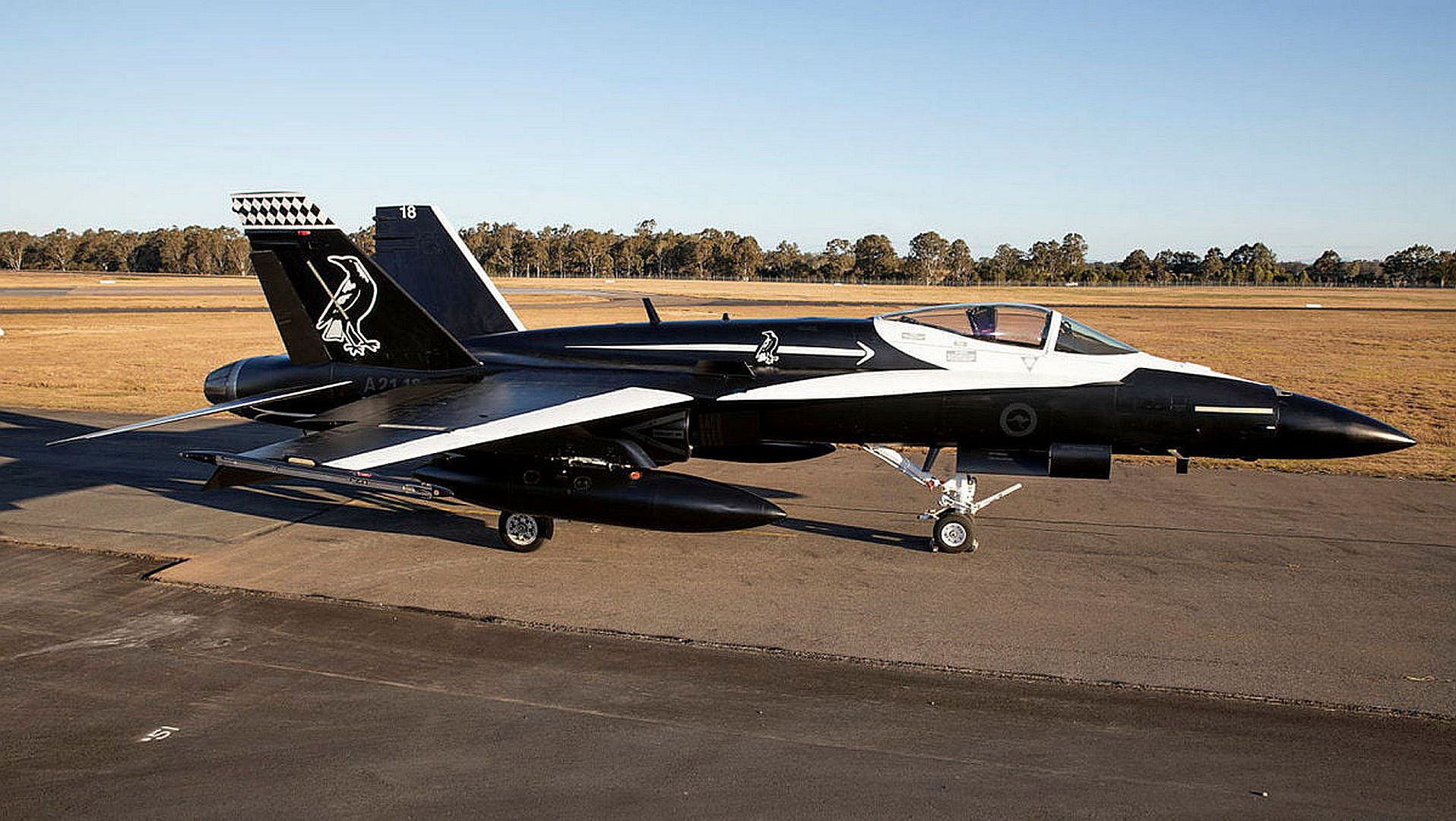

-
 Main AdminU.S. Air Force F-15C Eagles taxi at Kadena Air Base, Japan, before departing in support of Red Flag-Alaska, July 29, 2021. Red Flag-Alaska is a two-week long training exercise designed to provide joint offensive counter-air, interdiction, close air support and large force employment training in a simulated combat environment. (U.S. Air Force photo by Airman 1st Class Anna Nolte)
Main AdminU.S. Air Force F-15C Eagles taxi at Kadena Air Base, Japan, before departing in support of Red Flag-Alaska, July 29, 2021. Red Flag-Alaska is a two-week long training exercise designed to provide joint offensive counter-air, interdiction, close air support and large force employment training in a simulated combat environment. (U.S. Air Force photo by Airman 1st Class Anna Nolte)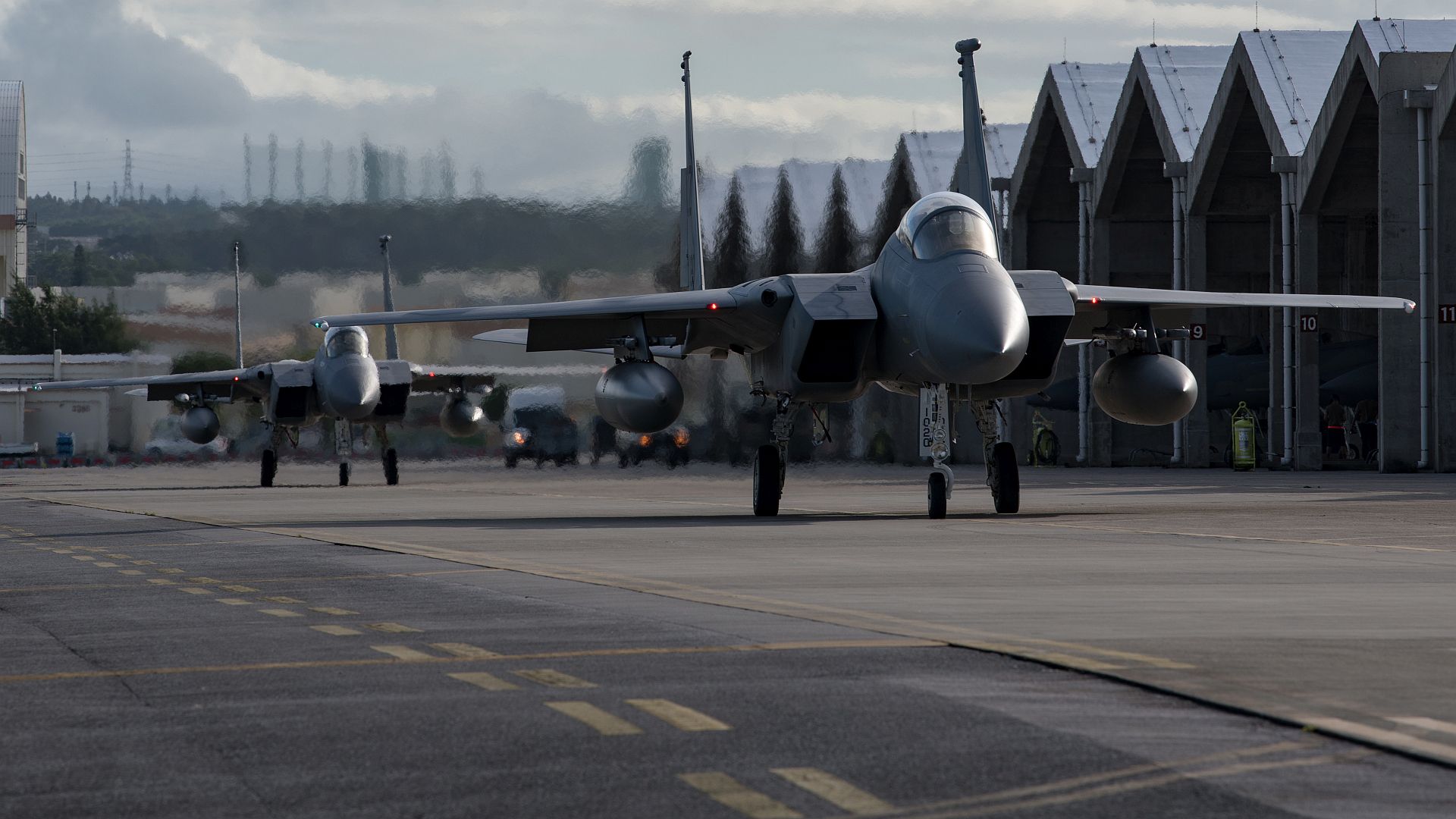
U.S. Air Force F-15C Eagles take off from Kadena Air Base, Japan, in support of Red Flag-Alaska, July 29, 2021. Red Flag-Alaska is a Pacific Air Forces-sponsored exercise held several times a year to deliver realistic training in a simulated combat environment. (U.S. Air Force photos by Airman 1st Class Anna Nolte)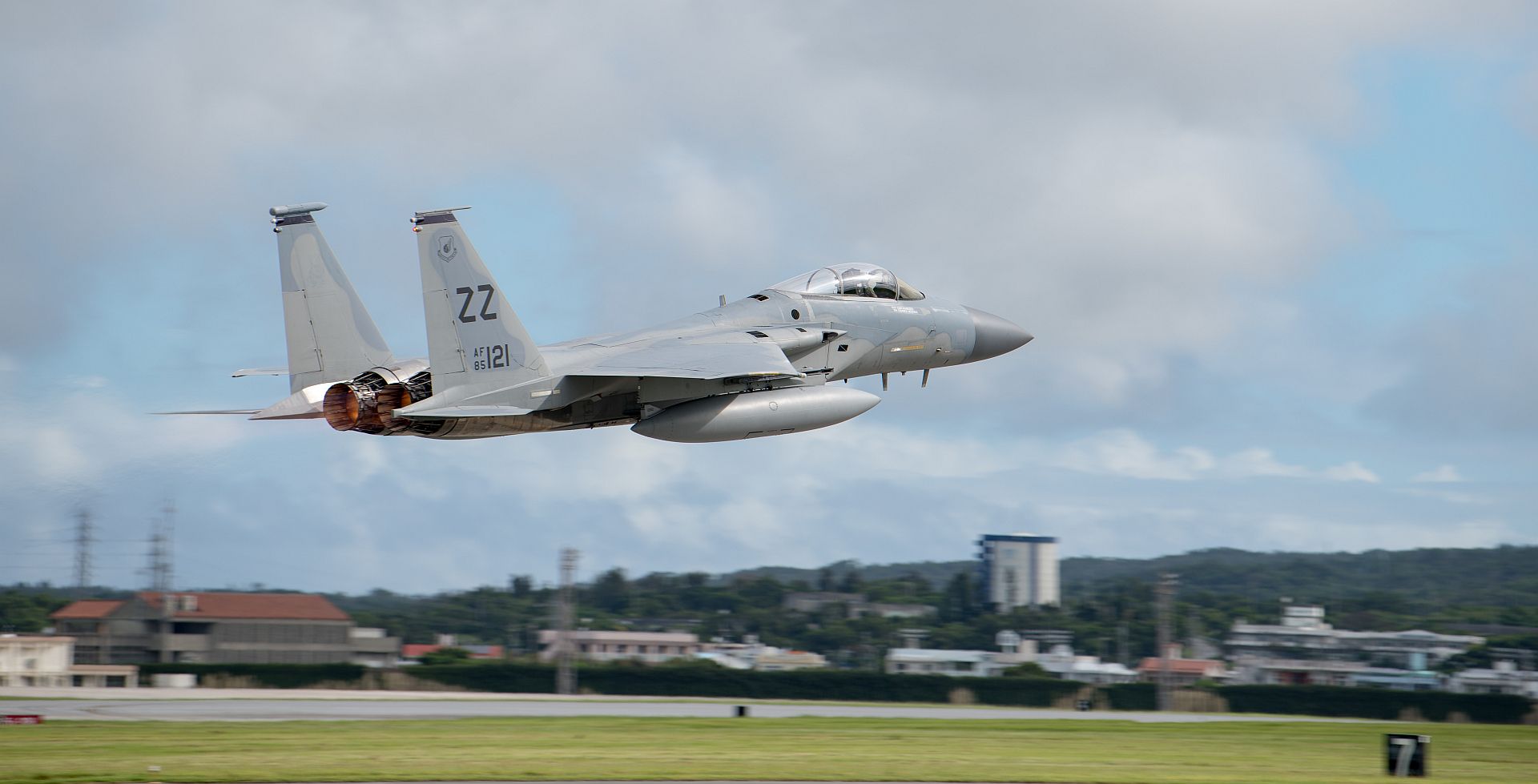
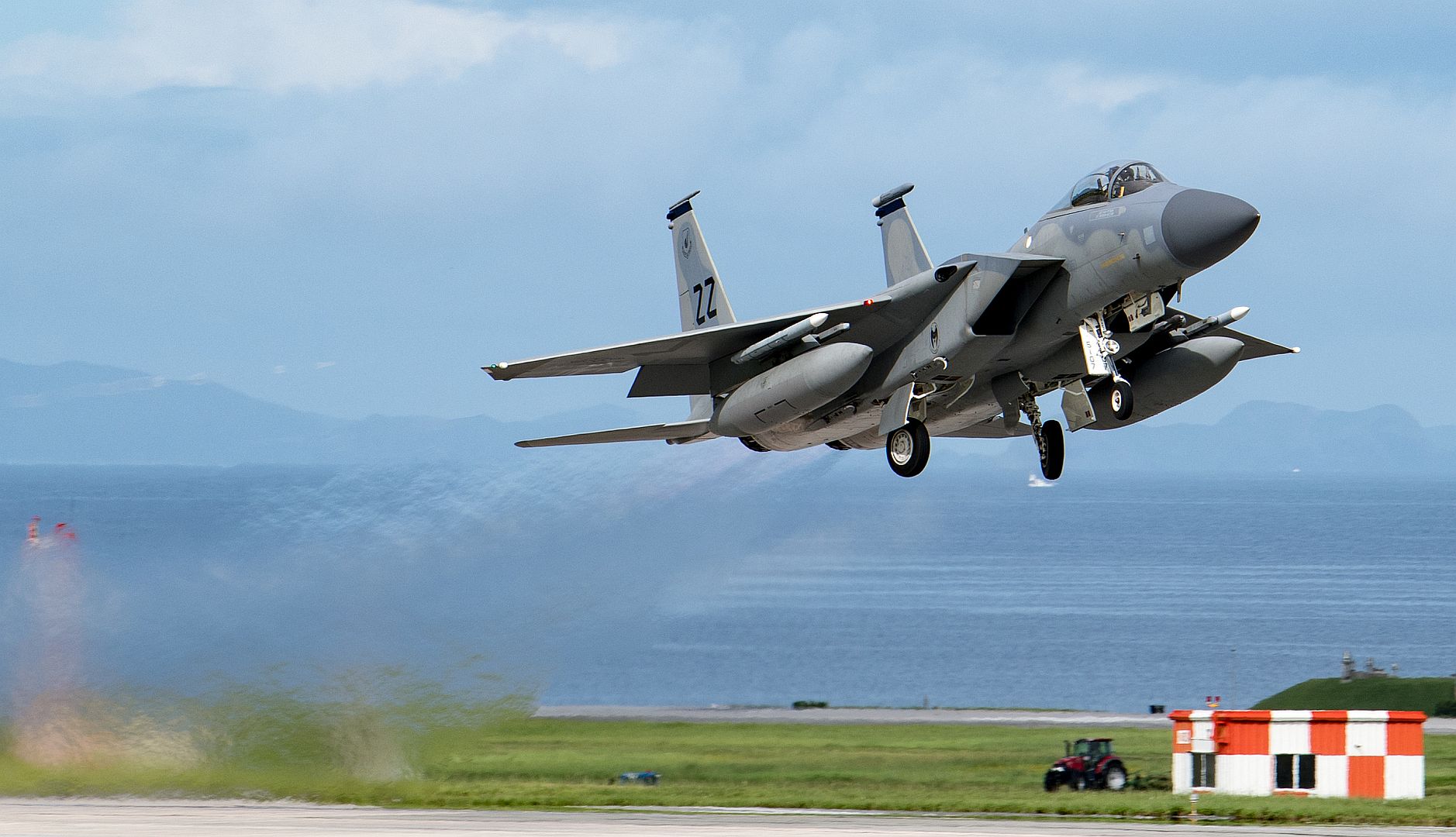
B-52H Stratofortresses land after flying a mission as part of Exercise Talisman Sabre 21 at Andersen Air Force Base, Guam, 29 July 2021. Talisman Sabre supports the Indo-Pacific Pathways initiative to advance a free and open Indo-Pacific by strengthening relationships and bolstering interoperability with allies and partners. (U.S. Air Force photos by 1st Lt. Ryan Walsh)
A KC-46A Pegasus departs Selfridge Air National Guard Base, Michigan, on July 30, 2021 after receiving cargo from the 127th Logistics Readiness Squadron. The KC-46A is the first phase in recapitalizing the U.S. Air Force's aging tanker fleet. With greater refueling, cargo, and aeromedical evacuation capabilities providing next generation aerial refueling support to Air Force, Navy, Marine Corps and partner-nation receivers.
(U.S. Air National Guard photo by Terry L. Atwell)
Travis Air Force Base maintenance crews service a C-5M Super Galaxy during sunrise July 28, 2021, at Travis AFB, California. Aircraft maintenance specialists ensure that every component of these aircraft is maintained to the most exacting standards. These experts ensure that the aircraft in their care are ready to fly at a moment’s notice so that pilots can safely and effectively complete their mission. (U.S. Air Force photo by Heide Couch)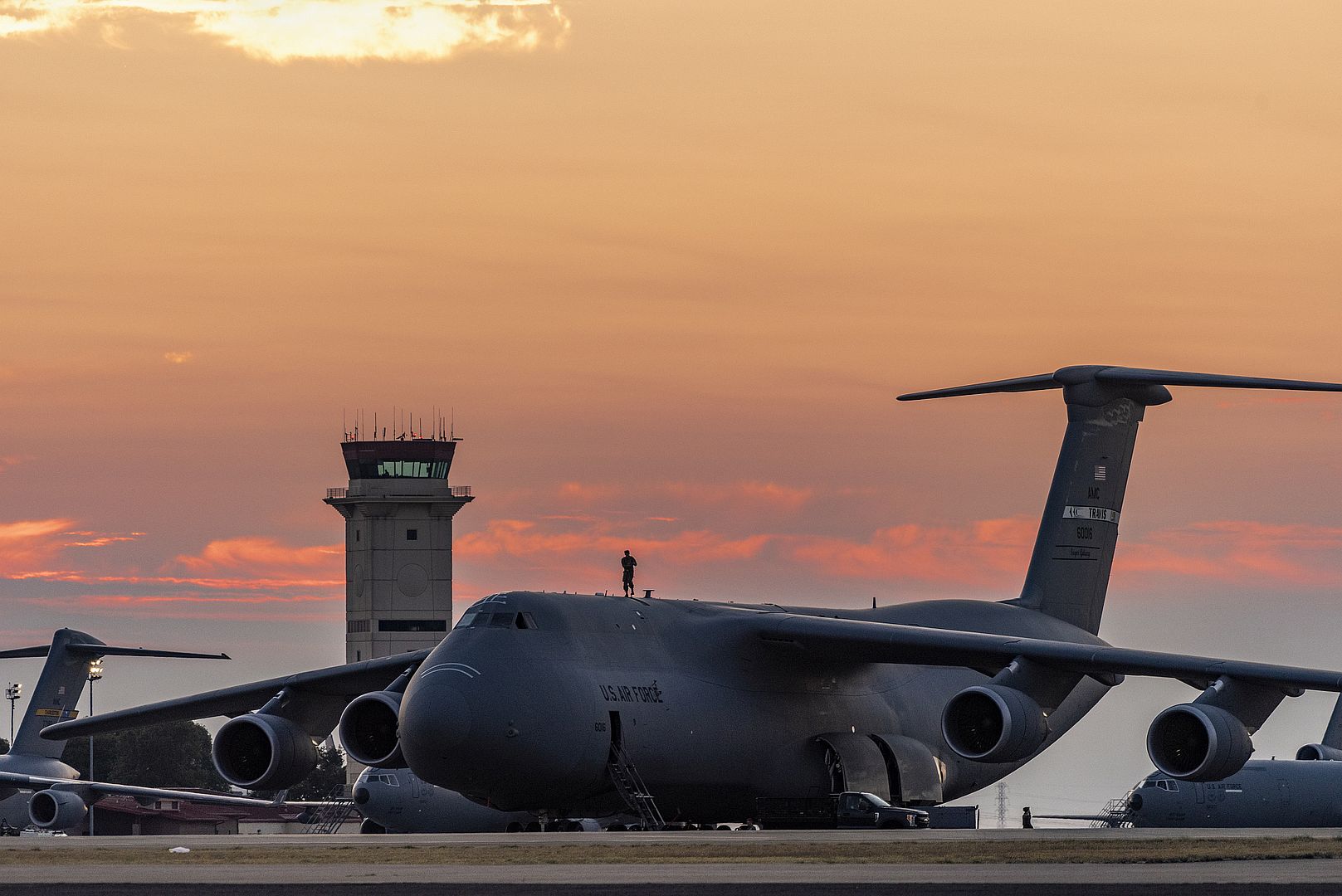
A KC-10 Extender is parked in a hanger for routine maintenance July 28, 2021, Travis Air Force Base, California. Aircraft maintenance specialists ensure that every component of these aircraft is maintained to the most exacting standards. These experts ensure that the aircraft in their care are ready to fly at a moment’s notice so that pilots can safely and effectively complete their mission. (U.S. Air Force photo by Heide Couch)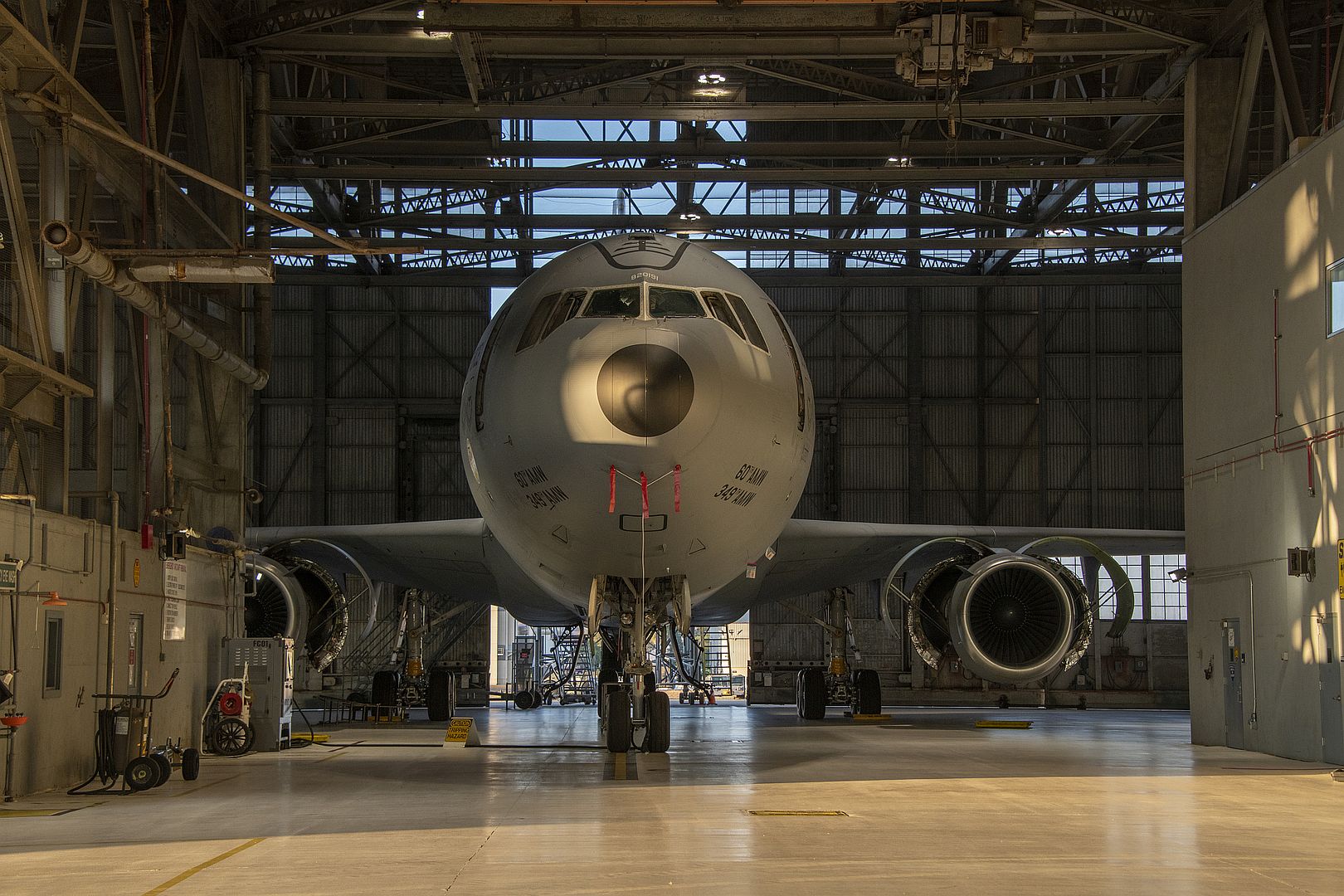
A KC-10 Extender is parked on the flight line July 28, 2021, at Travis Air Force Base, California. This aircraft has a cargo compartment that can accommodate loads ranging from 27 pallets to a mix of 17 pallets and 75 passengers. Using either an advanced aerial refueling boom, or a hose and drogue centerline refueling system, the KC-10 can refuel a wide variety of U.S. and allied military aircraft within the same mission. (U.S. Air Force photo by Heide Couch)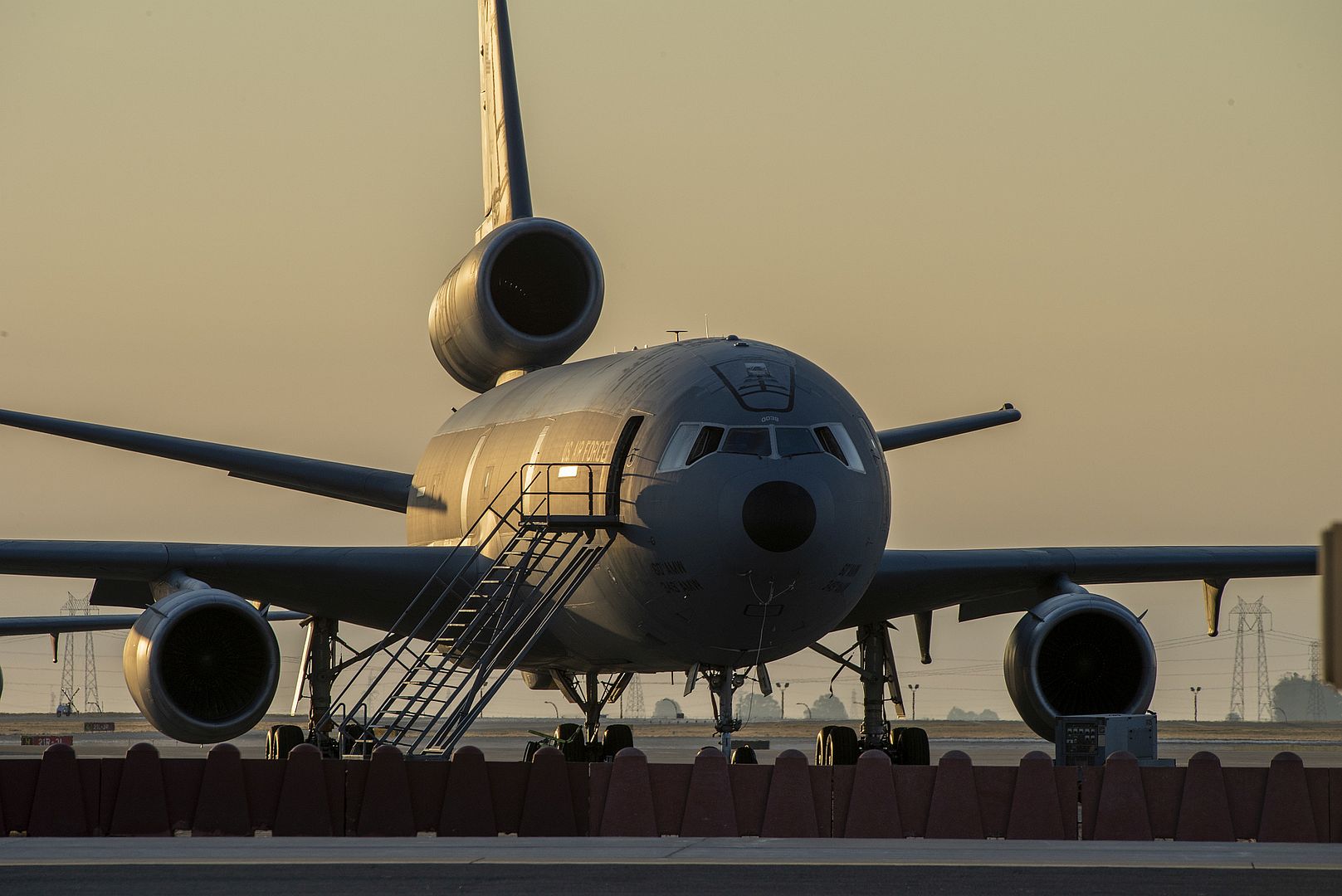
An AC-47 from Topeka, Kansas, conducts a gunship legacy flight during EAA AirVenture Oshkosh 2021, around Wittman Regional Airport, Wis., July 30, 2021. Air Force Special Operations Command Airmen and aircraft were one of the featured programs at AirVenture, giving attendees the opportunity to learn about recruitment opportunities, specialized airpower, military aviation heritage, and humanitarian capabilities. (U.S. Air Force photos by Staff Sgt. Peter Reft)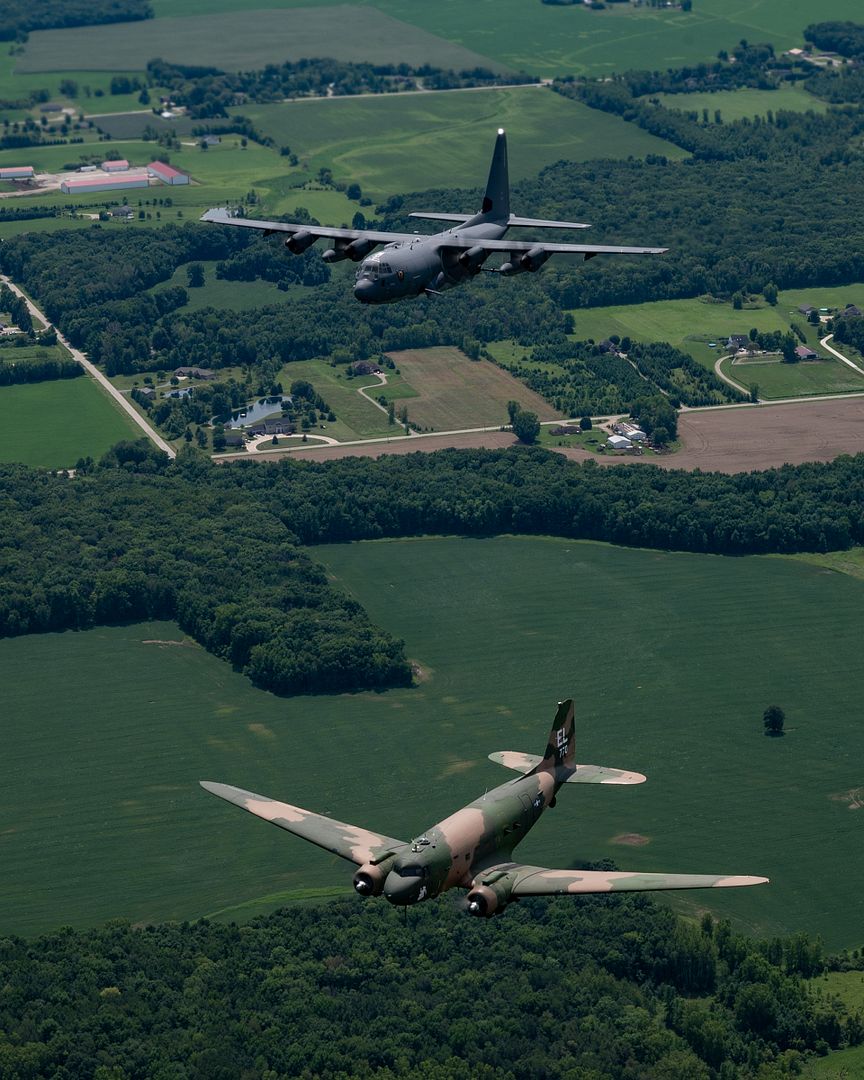

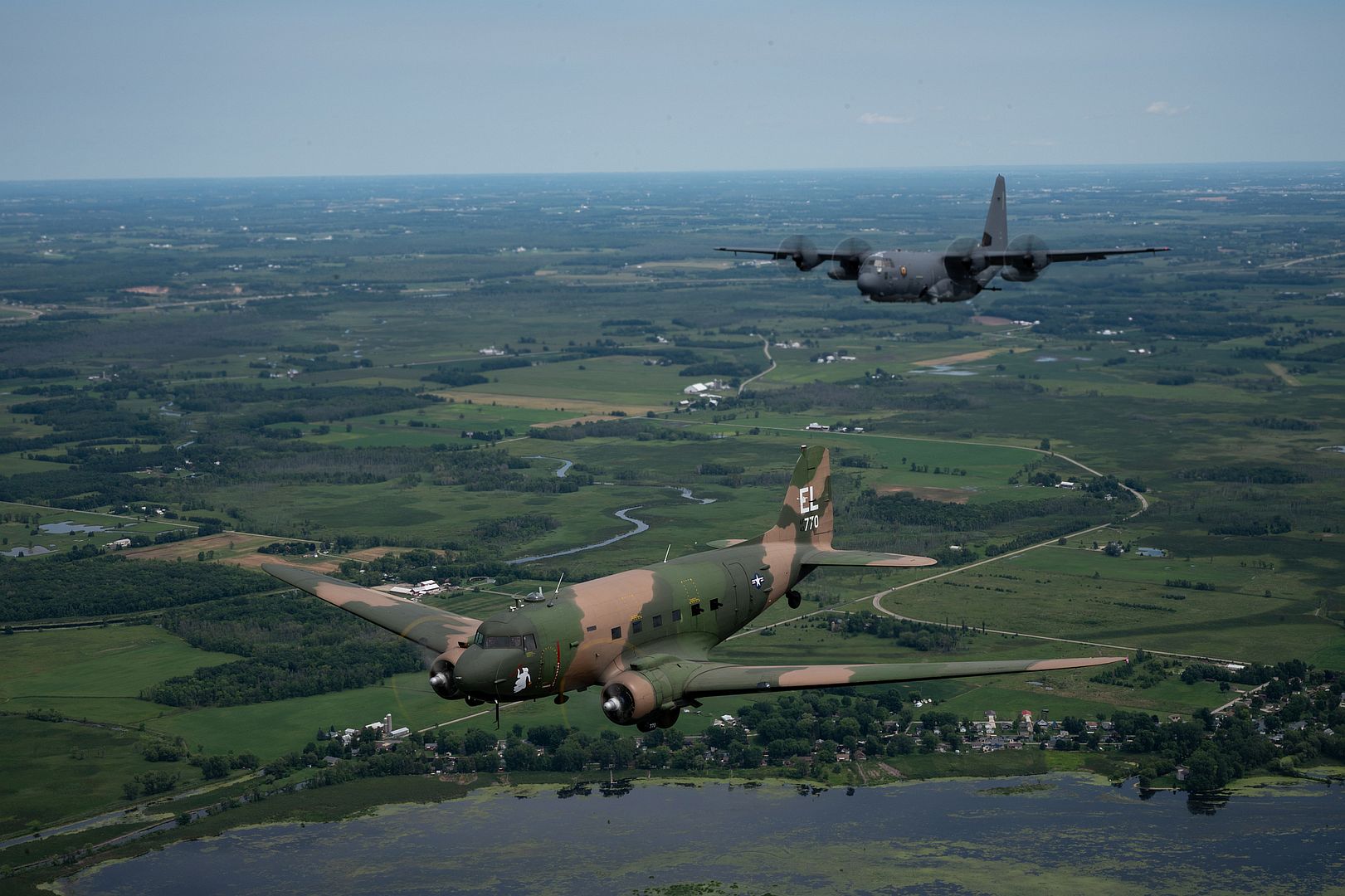
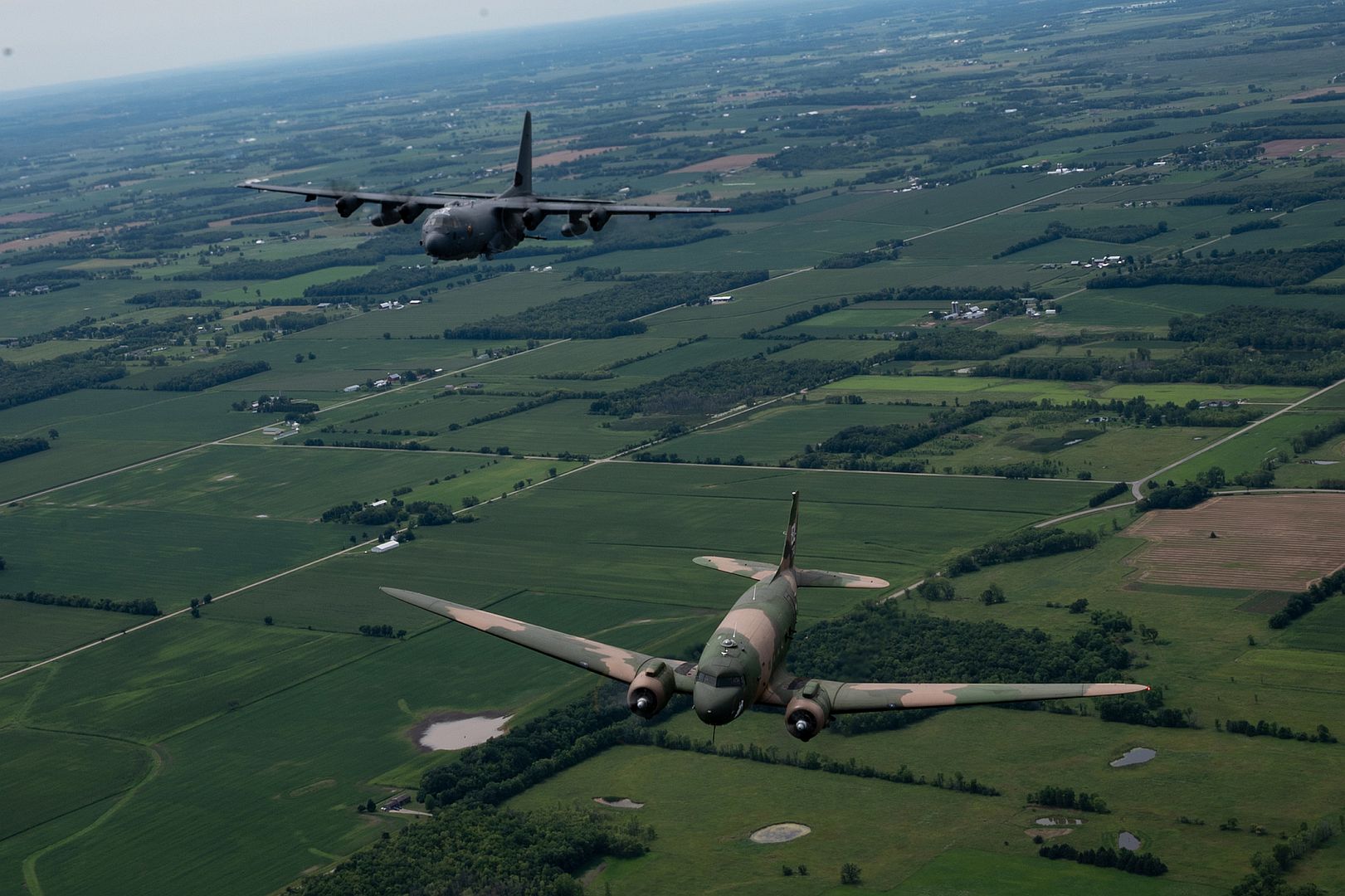
COMALAPA, EL SALVADOR – (July 29, 2021) -- A P-8A Poseidon aircraft, attached to the “Red Lancers” of Patrol Squadron (VP) 10, waits in standby for a potential ready launch on the runway at the Cooperative Security Location (CSL) in Comalapa, El Salvador. VP-10 is deployed to U.S. Naval Forces Southern Command/U.S. 4th Fleet supporting Commander, Task Force (CTF) 47 performing maritime patrol and reconnaissance (MPRA) missions throughout the Caribbean, and Central and South America. (U.S. Navy photo by Lt. Daniel Lemay/Released)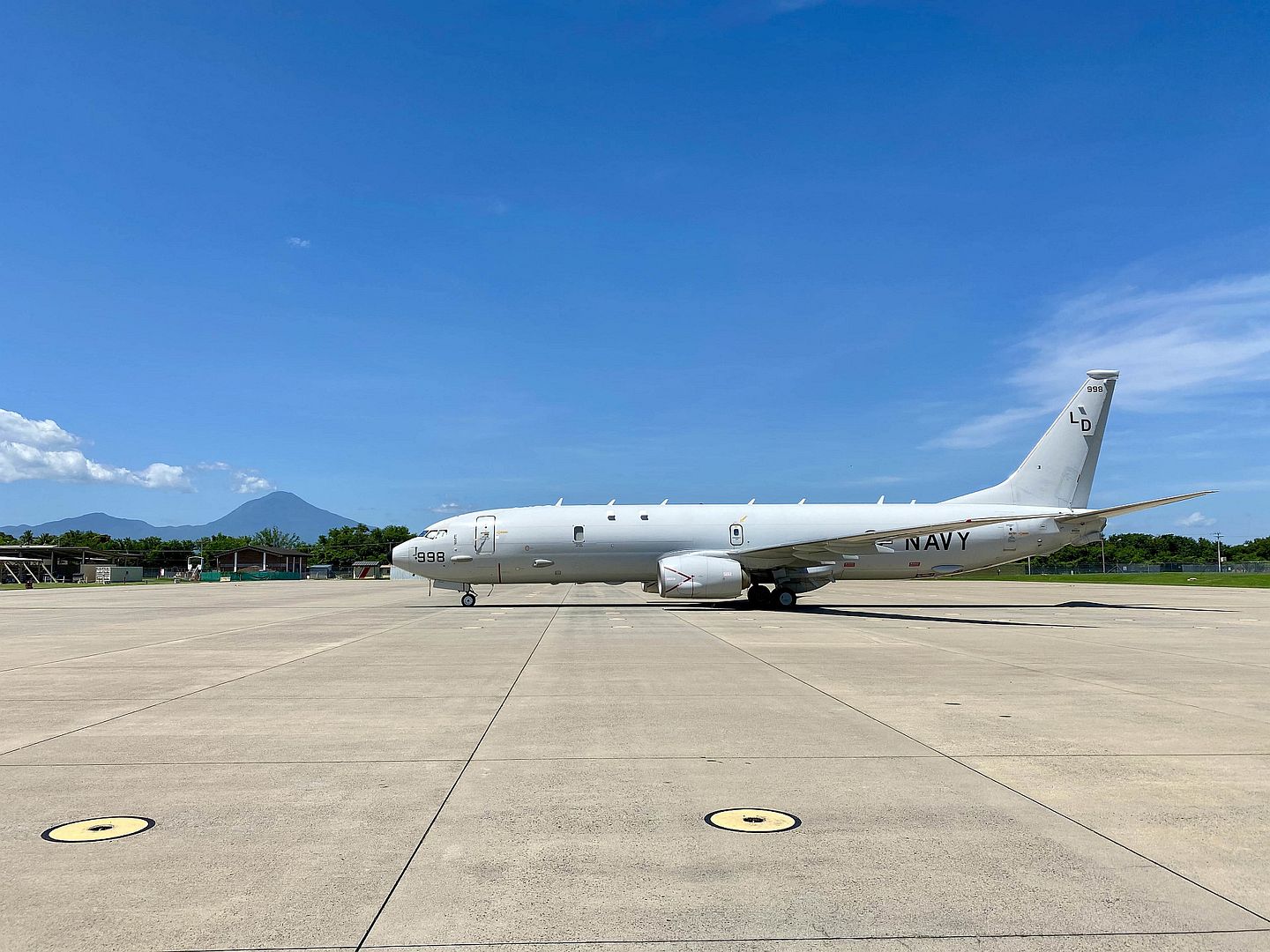
Several F-16 Fighting Falcons assigned to the 64th Aggressor Squadron, are prepared for the daily missions during Red Flag 21-3 at Nellis Air Force Base, Nevada, July 21, 2021. During RF 21-3, the 414th Combat Training Squadron works hand-in-hand with the 64th AGRS to create agile problem-solvers, who are capable of correct decision-making under incredible pressure from joint partners from the U.S. Air Force, Navy, Marines, Space Force, Air National Guard and U.S. Air Force Reserves. (U.S. Air Force photo by Tech. Sgt. Alexandre Montes)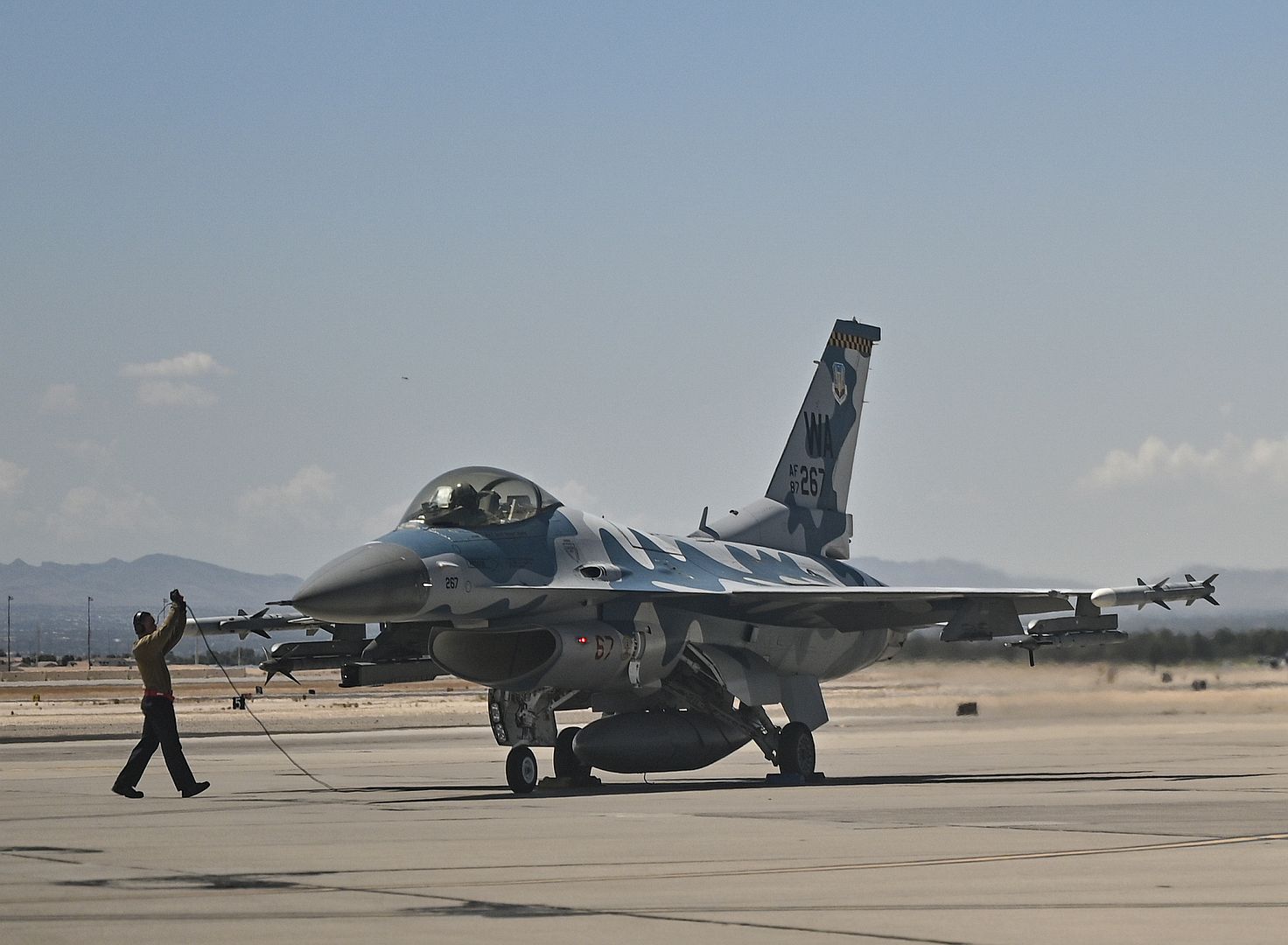
The B-2 Spirit known as the Spirit of Washington, performs a touch and go at Whiteman Air Force Base, Missouri, on July 20, 2021. The Spirit of Washington had just arrived back from Palmdale, CA, where it received routine maintenance and software updates from Northrop Grumman. (U.S. Air Force photo by Airman 1st Class Devan Halstead)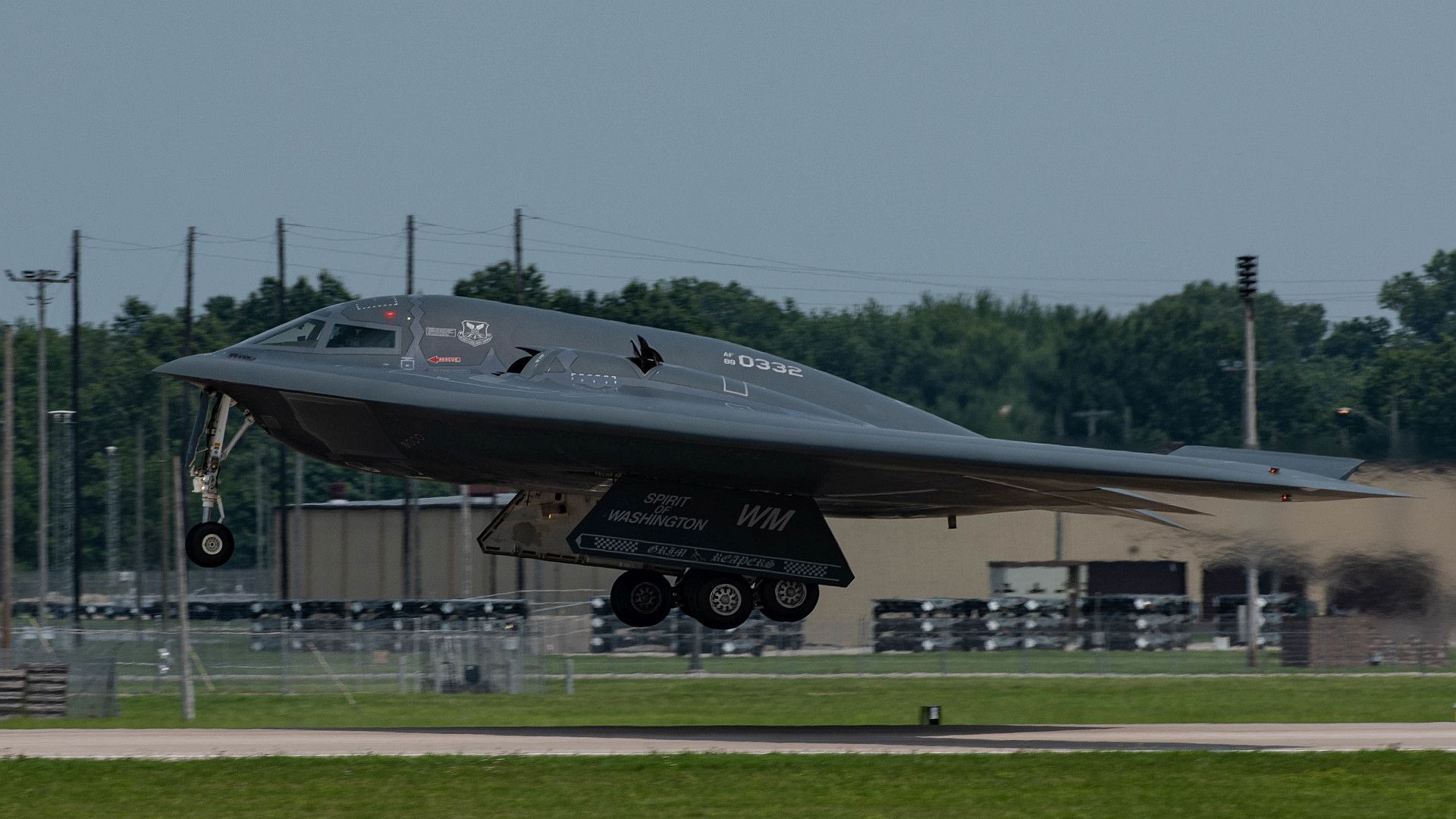
An F-16C Falcon fighter jet assigned to the 64th Aggressor Squadron, takes-off for a Red Flag 21-3 mission, at Nellis Air Force Base, Nevada, July 23, 2021. The Aggressor’s primary mission is to prepare the combat air forces, joint, and allied aircrews with realistic and challenging threat replication, training and feedback. (U.S. Air Force photo by William R. Lewis)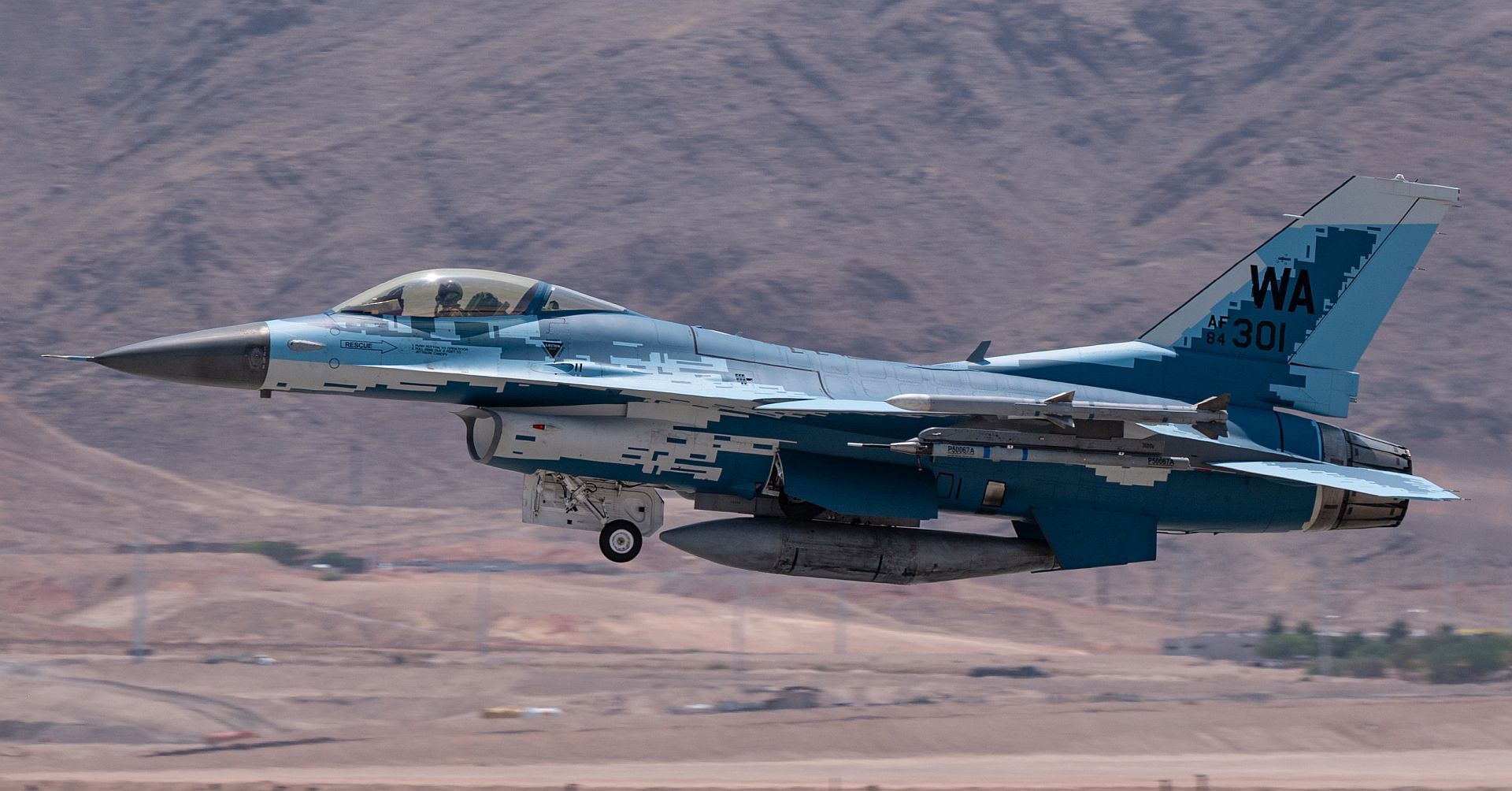
An F-35A Lightning II fighter jet, assigned to the 134th Fighter Squadron, Vermont Air National Guard, takes-off for a Red Flag 21-3 mission at Nellis Air Force Base, Nevada, July 23, 2021. Red Flag takes place over the Nevada Test and Training Range and provides the warfighter a flexible, realistic and multi-dimensional battle space to conduct advanced training of U.S. military services and coalition forces throughout the year. (U.S. Air Force photo by William R. Lewis)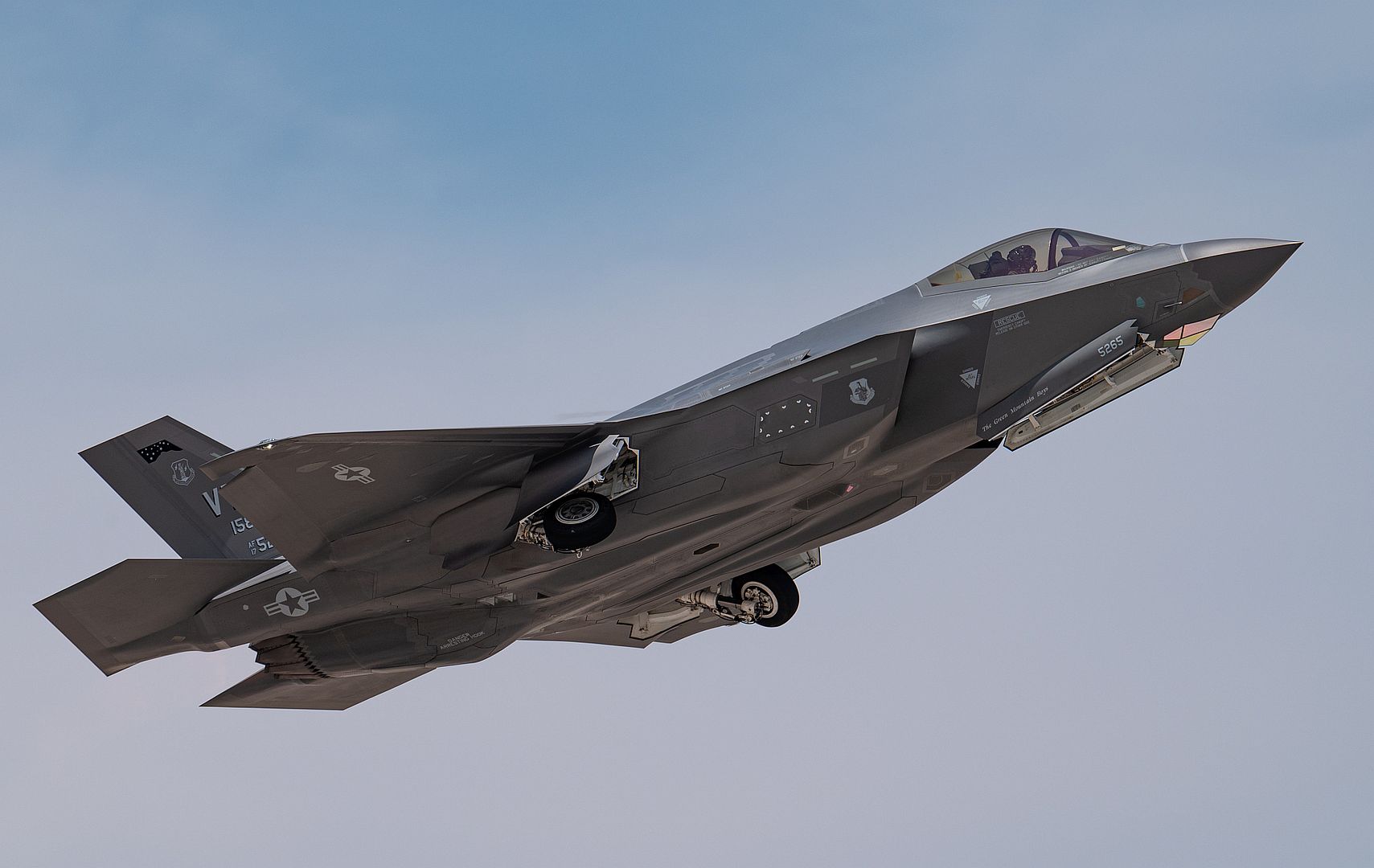
An F-22 Raptor assigned to Joint Base Langley-Eustis, Virginia, takes off for a Red Flag 21-3 mission at Nellis Air Force Base, Nevada, July 23, 2021. The F-22 Raptor performs both air-to-air and air-to-ground missions providing threat replication to maximize training over the Nevada Test and Training Range. (U.S. Air Force photo by William R. Lewis)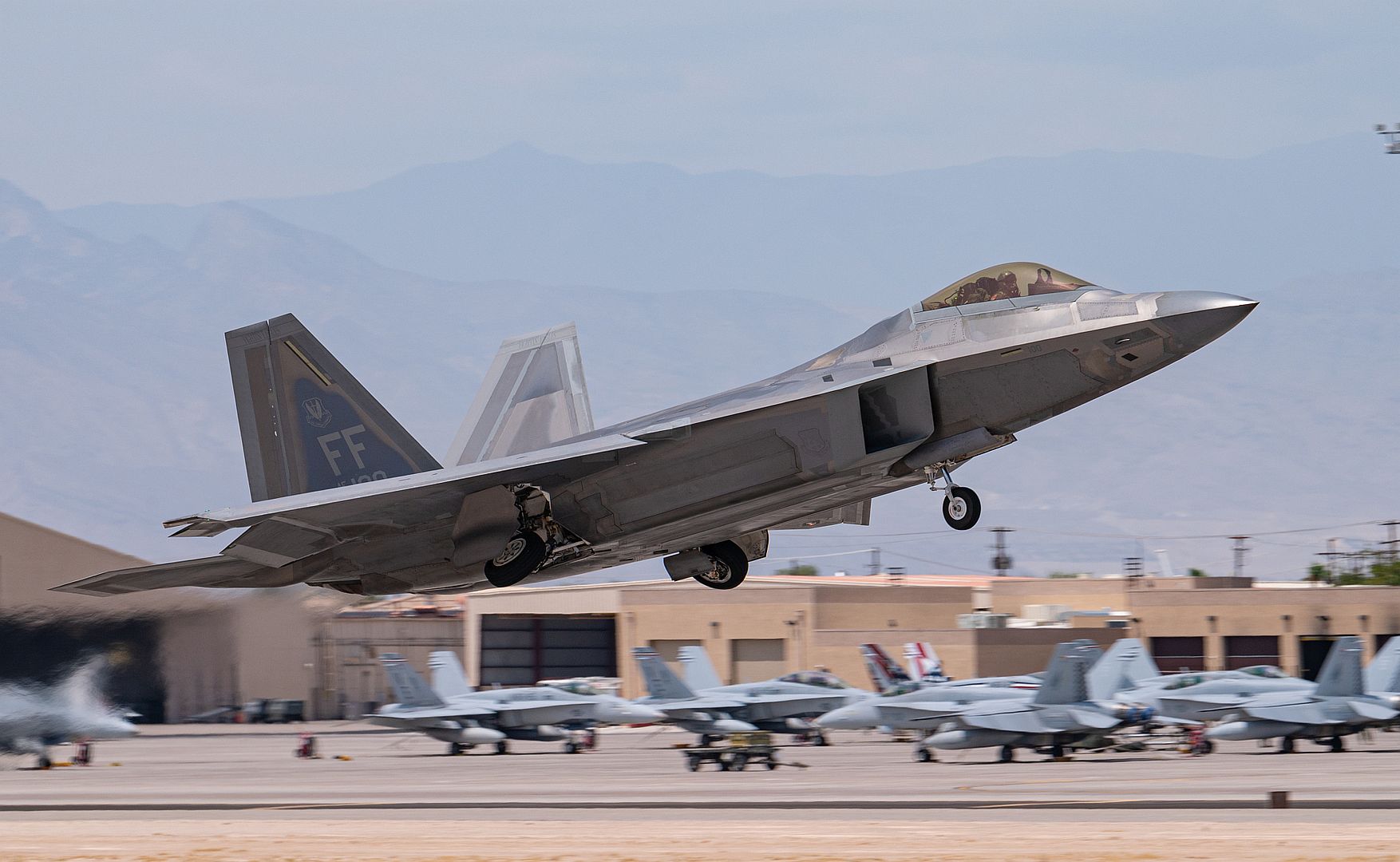
NAVAL AIR STATION PATUXENT RIVER, Md. – July 30, 2021 – A Northrop Grumman Corporation (NYSE: NOC)-built MQ-4C Triton took to the skies for the first time in the highly upgraded multi-intelligence configuration known as integrated functional capability four (IFC-4). Triton is the U.S. Navy’s premier high-altitude, long-endurance (HALE), maritime intelligence, surveillance and reconnaissance (ISR) platform.
“The multi-intelligence configuration of Triton will completely revolutionize how the U.S. Navy and Royal Australian Air Force conduct maritime patrol and reconnaissance missions,” said Doug Shaffer, vice president and program manager, Triton programs, Northrop Grumman. “Multi-intelligence capabilitiies, coupled with Triton’s long-range sensors and 24-hour endurance, will enable an unprecedented amount of maritime situational awareness to inform real-time decision making at tactical to strategic levels.”
Northrop Grumman is working closely with the Navy to progress Triton toward initial operating capability (IOC) and world-wide deployments. The multi-intelligence configuration will also enable the Navy to retire the EP-3E Aries as Triton will be able to assume the intelligence collection missions currently conducted by the Aries.
“This hugely important milestone for our Triton Multi-INT program is the culmination of over five years of intense engineering, integration and test, and represents the efforts of the hundreds of team members who have worked so tirelessly to achieve this Herculean task,” said Capt. Dan Mackin, Persistent Maritime Unmanned Aircraft Systems program manager. “The Multi-INT capability that the U.S. Navy and Royal Australian Air Force have procured through Northrop Grumman, our Naval Warfare Centers and our GFE partners is like no other – 360 degree AESA maritime radar, full-motion EO/IR video streaming, high-altitude, long-endurance, full-spectrum signals intelligence and the pipes to send multiple data types to ships, aircraft and intelligence community ground stations allow our forces to hold adversaries at risk and protect the peace which is so vital to our national interest.”
The U.S. Navy is currently operating two Tritons in the Pacific region in the baseline configuration as part of an early operational capability deployment. The Triton program expects to achieve IOC in 2023, and the Navy will eventually maintain five 24/7 operational orbits with a planned 68-aircraft program of record.
Northrop Grumman’s family of autonomous high-altitude, long-endurance systems perform critical wide-area ISR collection. Today, autonomous HALE systems operate across the globe, with greater than 24-hour endurance, collecting essential ISR data over land and sea to enable rapid, informed decision-making. In the future, these systems will connect the joint force, implementing advanced autonomy and artificial intelligence/machine learning while delivering indispensable capabilities with fewer people to provide information at the speed of relevance.
Northrop Grumman solves the toughest problems in space, aeronautics, defense and cyberspace to meet the ever evolving needs of our customers worldwide. Our 90,000 employees define possible every day using science, technology and engineering to create and deliver advanced systems, products and services.
-
 Main AdminNELLIS AIR FORCE BASE, Nev. (AFNS) --
Main AdminNELLIS AIR FORCE BASE, Nev. (AFNS) --
For the first time, an F-16 Fighting Falcon’s Electronic Warfare System received an in-flight software update as part of an Advanced Battle Management System (ABMS) demonstration during a recent test sortie at Nellis Air Force Base.
An F-16 updated its Mission Data File with information transmitted from hundreds of miles away using an existing Beyond Line of Sight F-16 satellite communication system. The airborne F-16 Block 50C was able to receive an MDF update from the Hill Software Integration Lab, process it using custom developed Center Display Unit software, and load the new data into the ALQ-213 Countermeasures Signal Processor.
This technology was made possible using the F-16 System Program Office’s organic subject matter experts, the 309th Software Engineering Group, the 53rd Test Wing, and associated agencies. This proof-of-concept test demonstrated the ability for a pilot to properly correlate a previously unknown electronic threat in near real-time.
“The ingenuity and skills of the Flight Test and Program Teams enabled a Viper to land with better capabilities than it took off with,” said Col. Tim Bailey, F-16 System program manager, speaking about the successful test. “This techno-marvel was done with existing systems in much of the Viper fleet, with no hardware mod. required. This is a significant first step!”
“We believe this is the first time a fighter aircraft has received a software update and gained new capability all while in flight,” added Lt. Col. Zachary Probst, a flight test pilot and commander of the 84th Test and Evaluation Squadron. “This is a big deal. There’s a tactical need to be able to rapidly update software, especially mission data files because that’s what ties into our ability to identify, find, and defend ourselves against enemy threat systems.”
What began as a bar-napkin idea — real-time software updates to F-16s — is developing into a program that could one day field across the F-16 fleet. The next step is to integrate high-speed internet into the F-16 thereby allowing F-16 pilots access to data from a classified cloud.
Ultimately the program’s goal is full ABMS integration into the F-16, which will improve long-term relevance of the aircraft and greatly enhance capabilities to the warfighter. In addition, it will connect and integrate DoD, U.S. Air Force, and U.S. Space Force capabilities.
“We are focused on capability development and proving things,” Probst said. “We are working on building the ‘highway’. Once we build the ‘highway', the possibility of places to go are endless.”
(U.S. Air Force photo by Tech. Sgt. John Raven)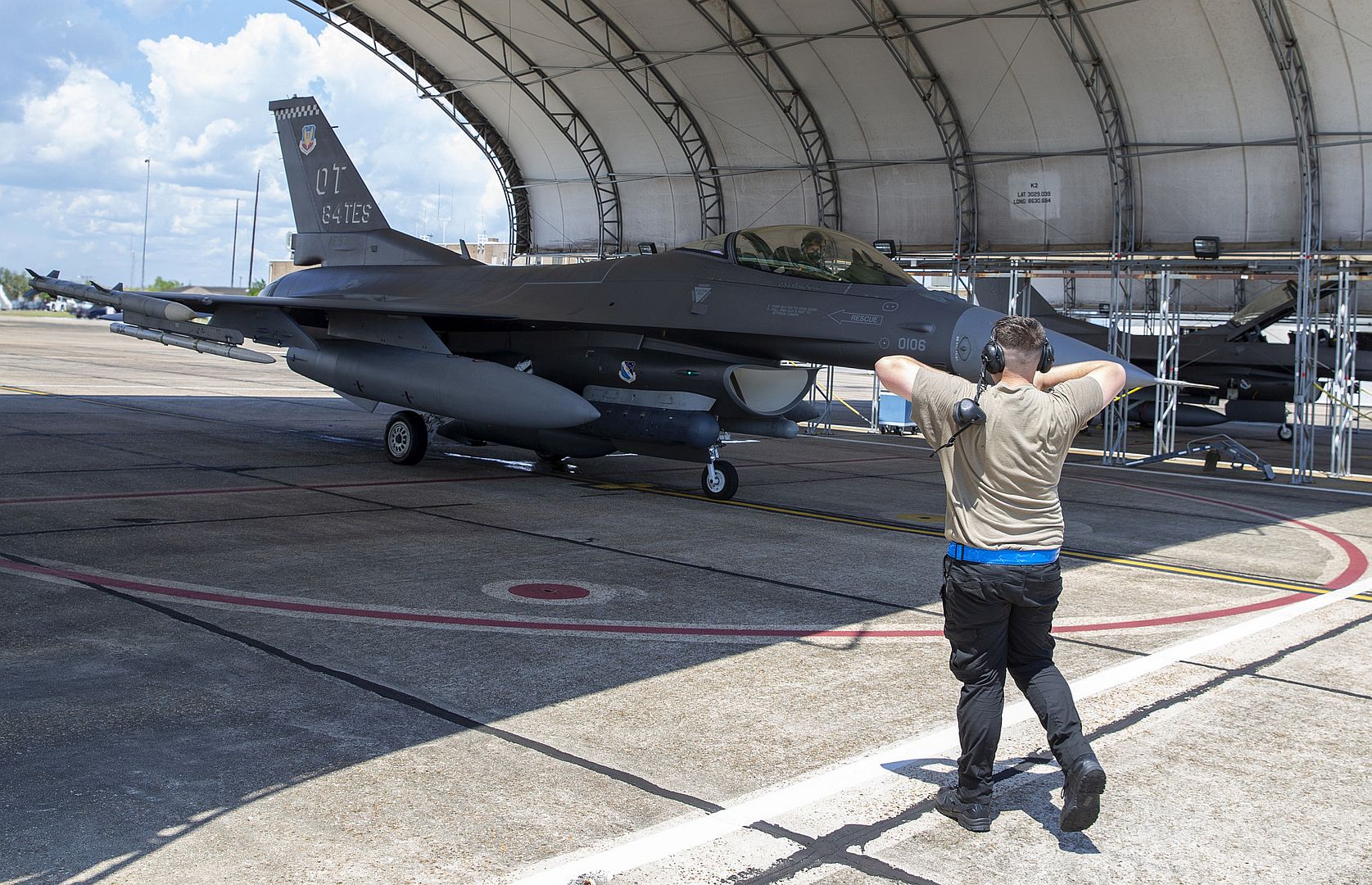
An F-35 Lightning II assigned to the 421st Fighter Squadron from Hill Air Force Base, Utah, taxis down the flight line at Nellis Air Force Base Nevada, July 27, 2021. Red Flag Nellis 21-3 has welcomed around 2,200 U.S participants from 17 states, from the U.S. Air Force, Navy, Marines, Space Force, Air National Guard and U.S. Air Force Reserves. The introduction of low-visibility conditions presents aircrews with a number of challenges that test their ability to perform the mission at anytime, day or night. (U.S. Air Force photo by Airman 1st Class Zachary Rufus)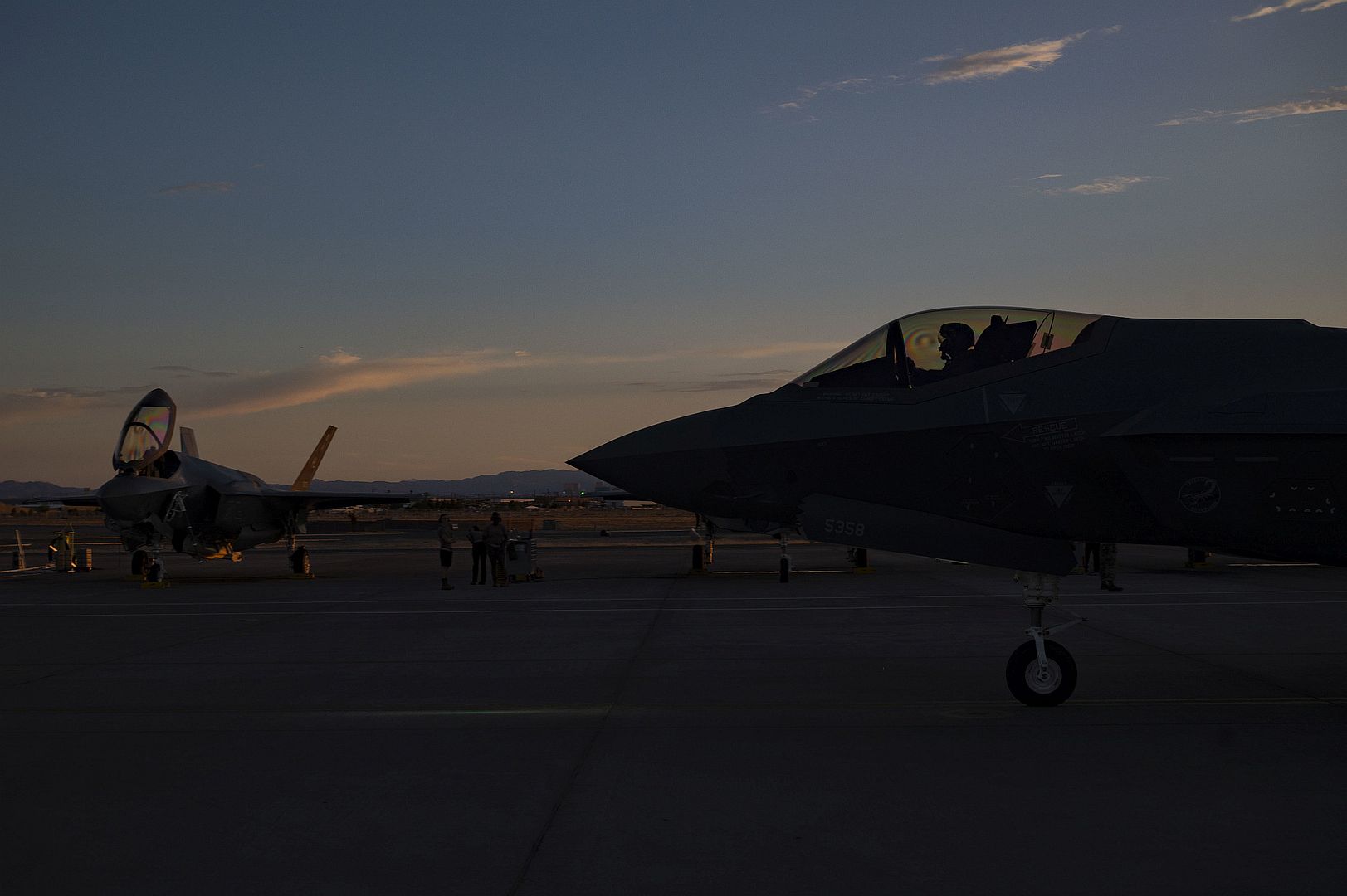
A U.S. Air Force F-16 Fighting Falcon taxis on the flightline upon arrival at Łask Air Base, Poland, July 30, 2021. A contingent of F-16s and support personnel assigned to the 480th Expeditionary Fighter Squadron are in Poland to participate in Aviation Detachment Rotation 21.3. (U.S. Air Force photo by Tech. Sgt. Anthony Plyler)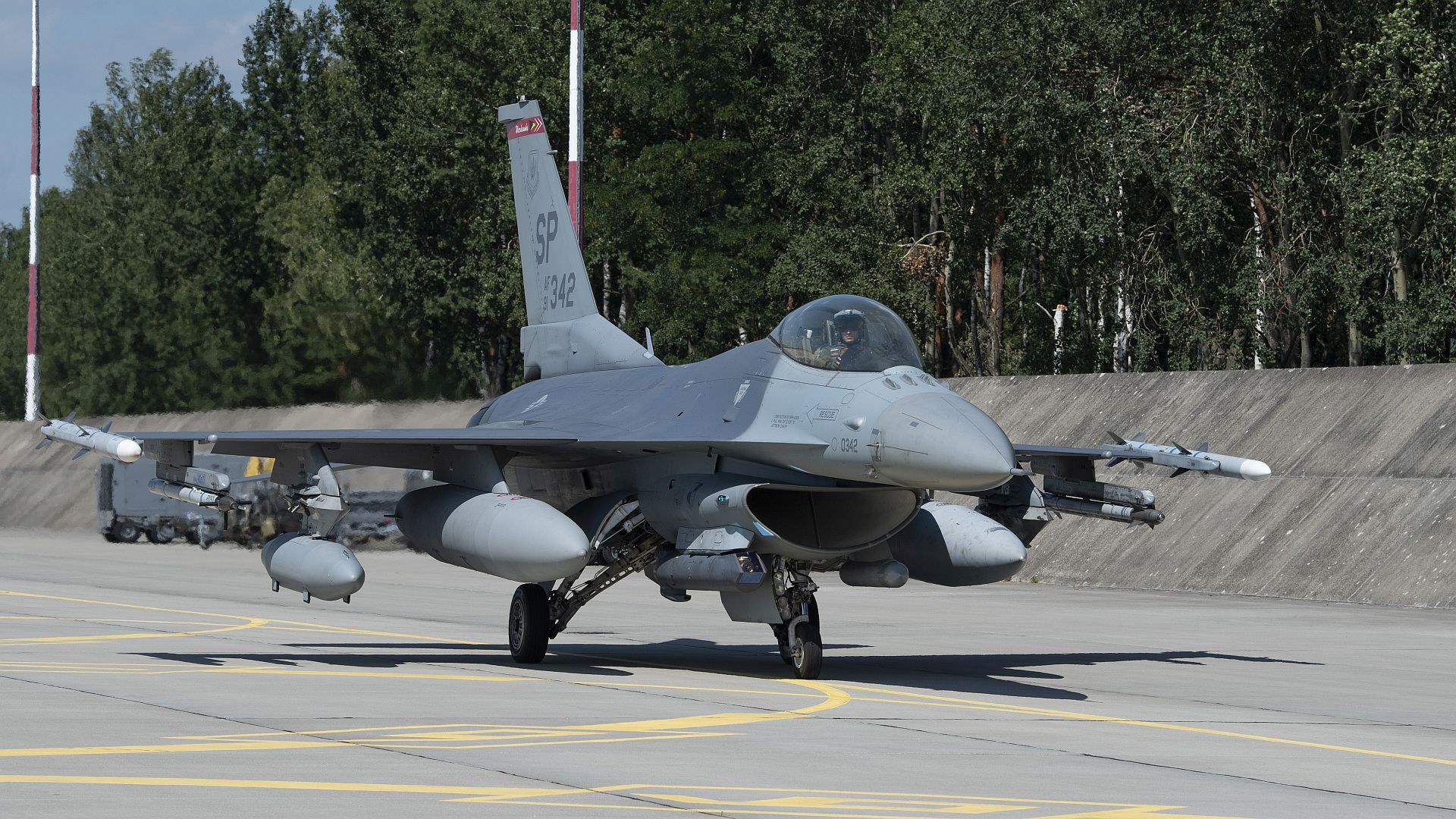
EDWARDS AIR FORCE BASE, California --
The NF-16D Variable In-flight Simulator Aircraft (VISTA) has been redesignated as the X-62A, effective June 14, 2021.
The VISTA, which is operated by the Air Force Test Pilot School with the support of Calspan and Lockheed Martin, first flew in 1992 and has been a staple of the TPS curriculum. It has provided TPS students the ability to experience various flying conditions including simulation of other aircrafts’ characteristics.
“For more than two decades VISTA has been a vital asset for the USAF TPS and the embodiment of our goal to be part of the cutting edge of flight test and aerospace technology,” said William Gray, VISTA and TPS chief test pilot. “It has given almost a thousand students and staff members the opportunity to practice testing aircraft with dangerously poor flying qualities, and to execute risk-reduction flight test programs for advanced technologies.”
The VISTA is currently in the midst of an upgrade program which will fully replace the VISTA Simulation System (VSS). The upgrade program will also add a new system called the System for Autonomous Control of Simulation (SACS) to support autonomy testing for the Air Force Research Laboratory’s Skyborg program.
“The redesignation reflects the research done on the aircraft over the past almost 30 years, as well as acknowledges the major upgrade program that is ongoing to support future USAF autonomy testing,” said Dr. Chris Cotting, USAF TPS director of research.
Skyborg is an autonomy-focused capability that will enable the Air Force to operate and sustain low-cost, teamed aircraft that can thwart adversaries with quick, decisive actions in contested environments. The program will enable airborne combat mass by building a transferable autonomy foundation for a family of layered, unmanned air vehicles. This foundation will deliver unmatched combat capability per dollar by lowering the barriers to entry for industry and allowing continuous hardware and software innovation in acquisition, fielding and sustainment of critical mission systems. During this effort, AFRL will prototype a suite of autonomy and unmanned system technologies equipped with capabilities that can support a range of Air Force missions.
Skyborg will not replace human pilots. Instead, it will provide them with key data to support rapid, informed decisions. In this manner, Skyborg will provide manned teammates with greater situational awareness and survivability during combat missions.
The VISTA started life as a Block 30 F-16D. Throughout its life, it has received numerous upgrades and modifications. VISTA was originally given the N prefix to denote its status as Special Test, Permanent. The N prefix indicates aircraft on a special test program whose configuration is so drastically changed that return to its original configuration or conversion to standard operational configuration is beyond practicable or economic limits.
“We have found ways to use VISTA that were not envisioned by the original designers, so we were running into frustrating limitations,” Gray said. “The modifications will address these limitations and profoundly improve our ability to quickly and safely test an almost unlimited variety of radical control law configurations. Even so, the X-62A will continue to serve as a curriculum aircraft, and will be an even brighter symbol of our aspirations.”
The X designation denotes aircraft that are designed for testing configurations of a radical nature. X aircraft are not normally intended for use as tactical aircraft. Following its redesignation to X-62A, VISTA now joins a storied family of aircraft such as the Bell X-1, the first airplane to break the sound barrier, and the hypersonic, rocket-powered North American X-15, which holds the record as the fastest manned aircraft.
“VISTA will serve as one of the main assets of the newly-created Research Division at USAF TPS,” Cotting said. “As part of the upgrade program, VISTA has been redesignated from the NF-16D VISTA to the X-62A VISTA, making USAF TPS the only test pilot school with an active X plane supporting its curriculum.”
(Air Force photo by Christian Turner)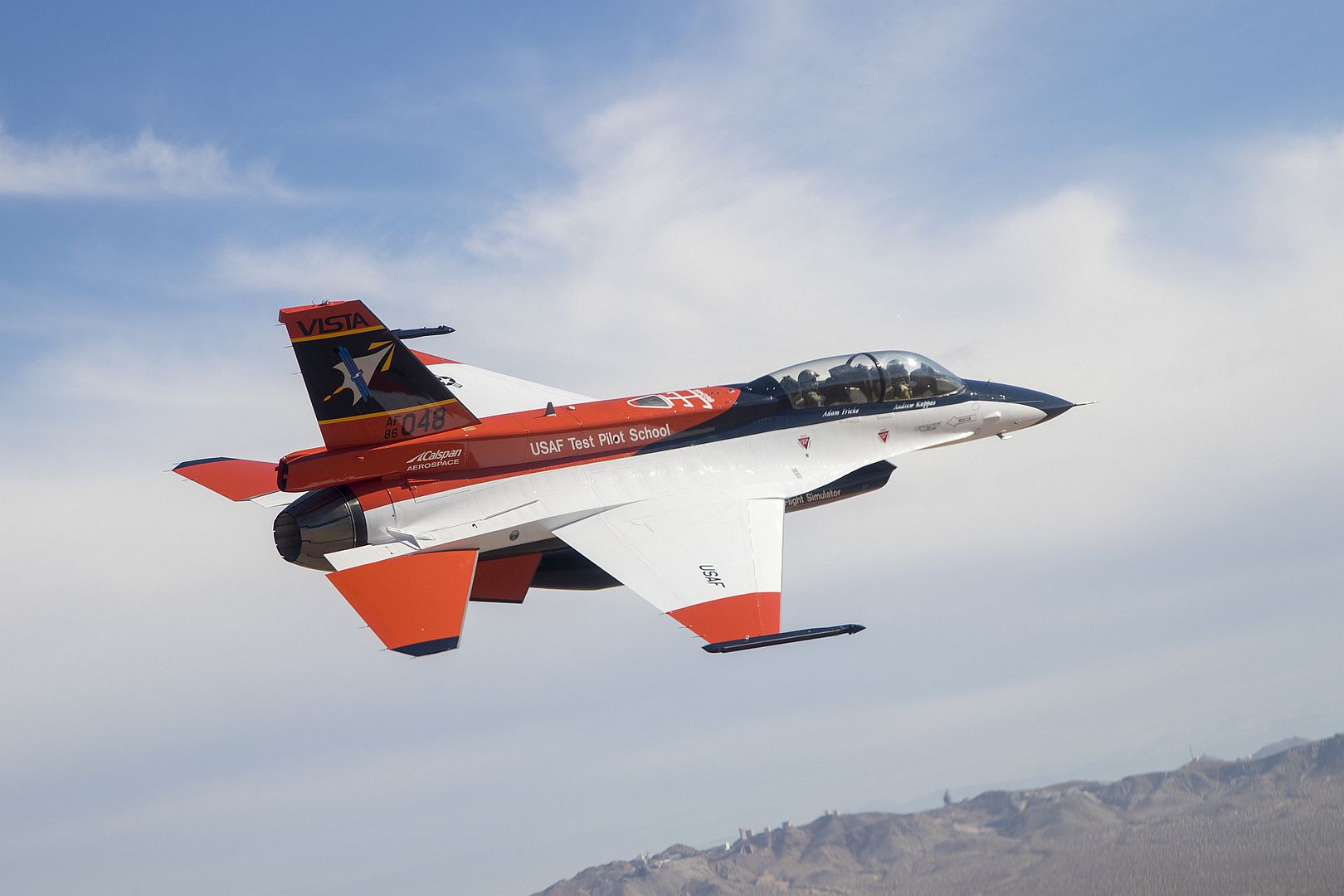
SOUTH CHINA SEA (July 29, 2021) A U.S. Marine with Marine Fighter Attack Squadron (VMFA) 211 launches an F-35B from the Royal Navy aircraft carrier HMS Queen Elizabeth (R 08) while she conducts a double replenishment with the British Royal Fleet Auxiliary Tide-class replenishment tanker RFA Tidespring (A 136) and the Royal Netherlands Navy De Zeven Provincien-class frigate HNLMS Evertsen (F 805) in the South China Sea. VMFA-211 is attached to the United Kingdom's Carrier Strike Group 21, a UK-led international strike group including support from the U.S. Navy Arleigh Burke-class guided-missile destroyer USS The Sullivans (DDG 68) and Evertsen. A free and open Indo-Pacific region that is peaceful and stable is vital to ensuring greater prosperity for the region and the world. (U.S. Navy photo courtesy of Royal Navy PO Jay Allen)
-
 Main AdminARABIAN SEA (Aug. 1, 2021) – A C-2A Greyhound fleet logistics plane, attached to the “Providers” of Fleet Logistics Support Squadron (VRC) 30, prepares for launch on the flight deck of aircraft carrier USS Ronald Reagan (CVN 76) in the Arabian Sea, Aug. 1. Ronald Reagan is deployed to the U.S. 5th Fleet area of operations in support of naval operations to ensure maritime stability and security in the Central Region, connecting the Mediterranean and Pacific through the western Indian Ocean and three strategic choke points. (U.S. Navy photo by Mass Communication Specialist Seaman Santiago Navarro)
Main AdminARABIAN SEA (Aug. 1, 2021) – A C-2A Greyhound fleet logistics plane, attached to the “Providers” of Fleet Logistics Support Squadron (VRC) 30, prepares for launch on the flight deck of aircraft carrier USS Ronald Reagan (CVN 76) in the Arabian Sea, Aug. 1. Ronald Reagan is deployed to the U.S. 5th Fleet area of operations in support of naval operations to ensure maritime stability and security in the Central Region, connecting the Mediterranean and Pacific through the western Indian Ocean and three strategic choke points. (U.S. Navy photo by Mass Communication Specialist Seaman Santiago Navarro)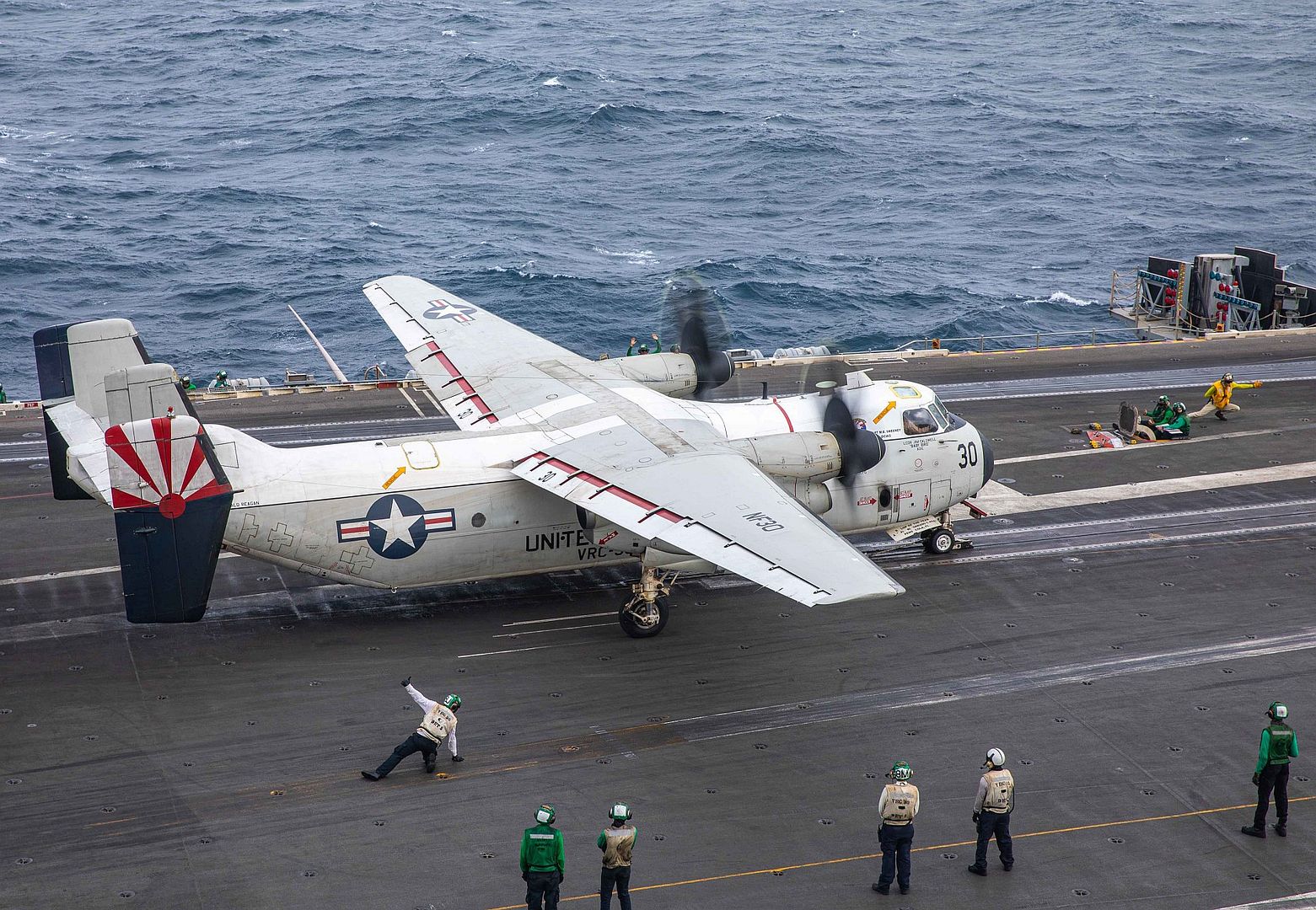
A U.S. Air Force RC-26B Metroliner aircraft assigned to the 162nd Fighter Wing, Arizona Air National Guard, sits on the flight line prior to departing on a wildland fire mapping and detection mission in support of the U.S. Forest Service at the Eugene Airport, Eugene, Ore., August 1, 2021. The RC-26 is tasked with utilizing its highly mobile platform by making infrared images and video of the fires from above in order to map and detect wildland fires and hotspots in the western region of the United States. The RC-26 crews can detect hotspots before they become fires and help direct teams to those locations. First Air Force (Air Forces Northern), U.S. Northern Command’s Air Component, is the DoD’s operational lead for the aerial military wildland fire fighting response. (U.S. Air National Guard photo by Airman 1st Class Thomas Cox)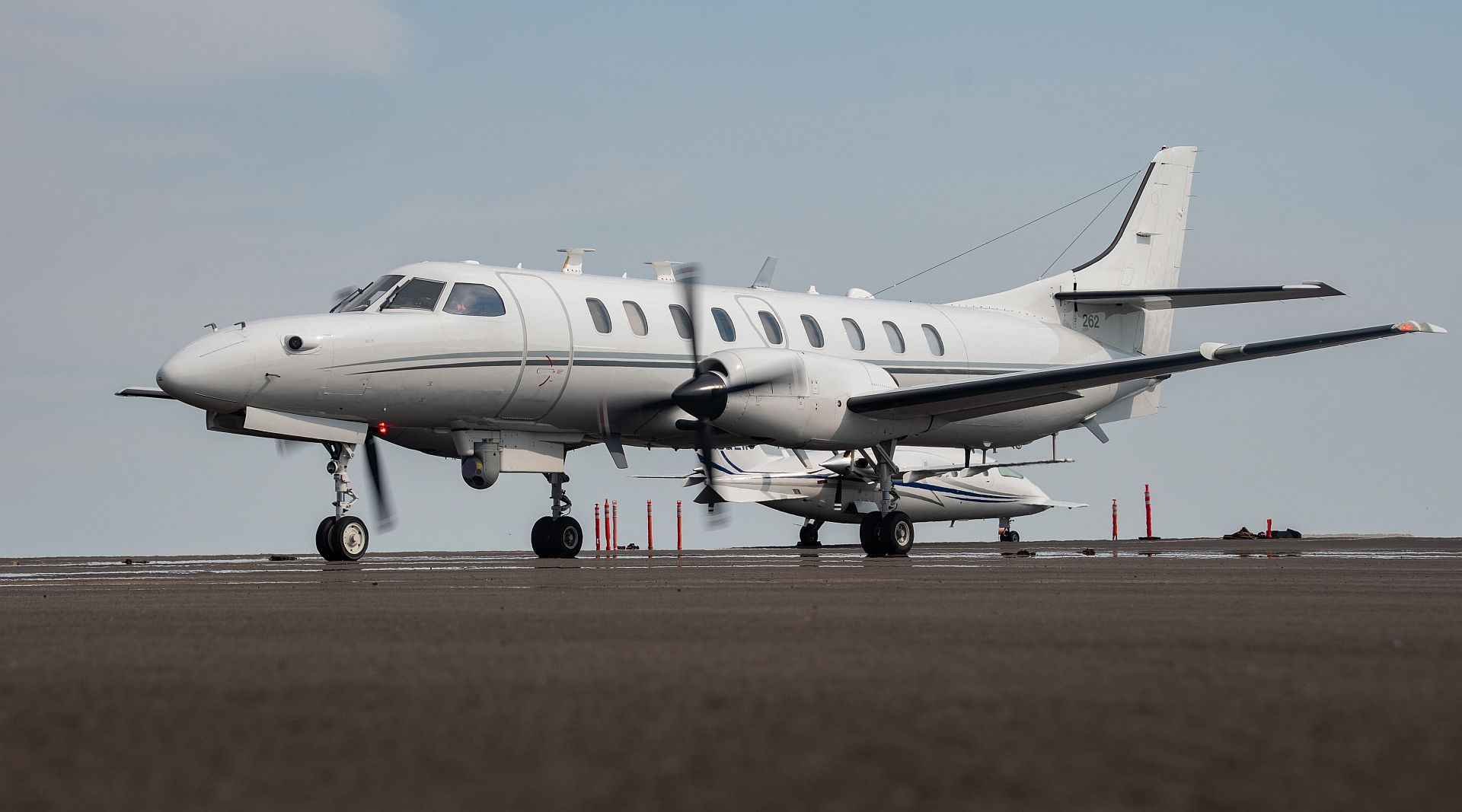
A 33rd Fighter Wing F-35A Lightning II gets refueled by a 6th Air Refueling Wing KC-135 Stratotanker Aug. 2, 2021 at Eglin Air Force Base, Florida. The F-35 has 18,498 pounds of internal fuel capacity. (U.S. Air Force photo by Senior Airman Heather LeVeille)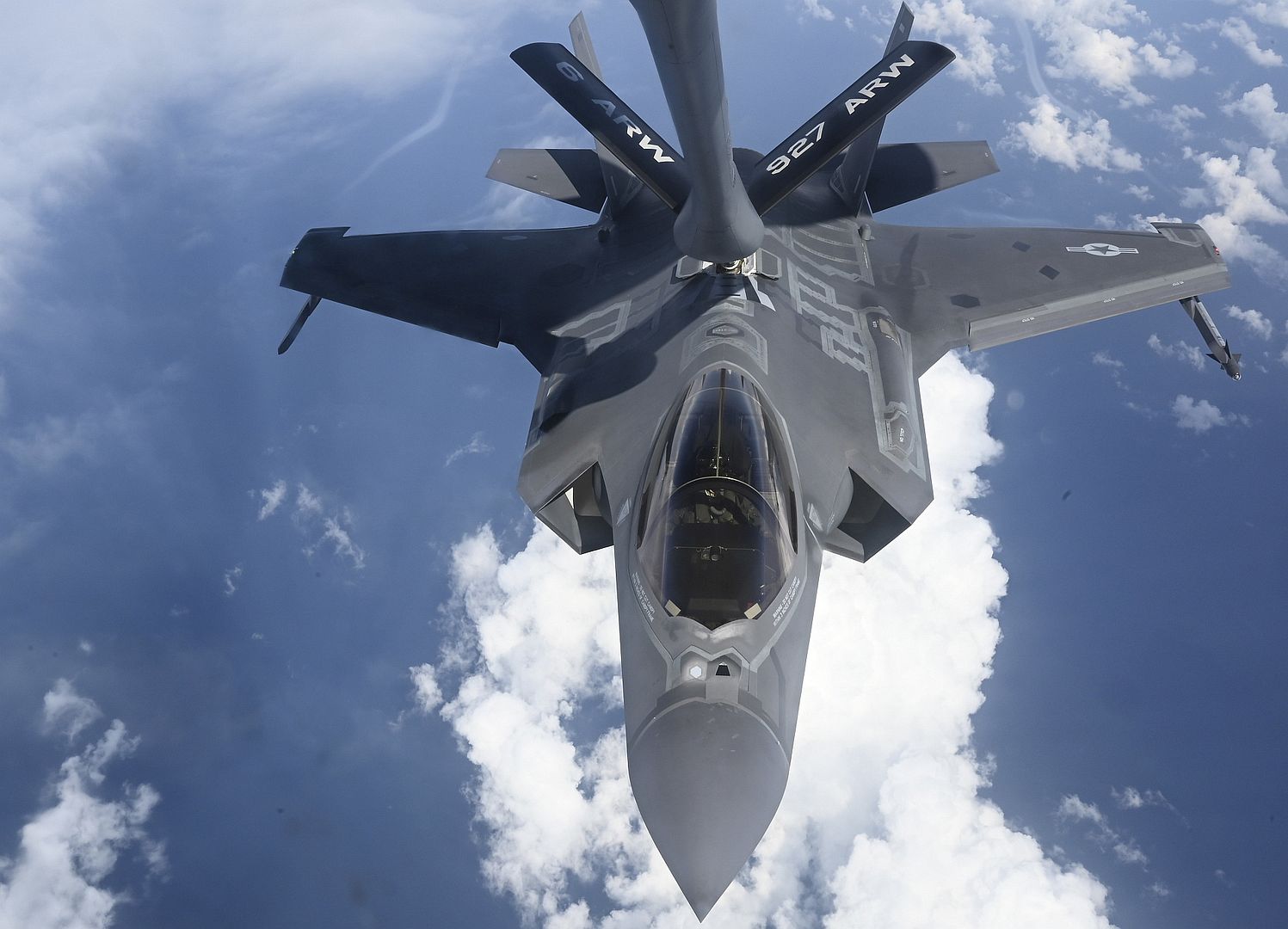
An F-35 Lightning II based at Nellis Air Force Base, Nevada, taxis for Red Flag 21-3 Aug. 3, 2021. Red Flag takes place over the Nevada Test and Training Range, which has the largest contiguous ground space available for military operations, and is home to the most advanced aerial test and training environment. (U.S. Air Force photo by Airman 1st Class Zachary Rufus)
The last 130th Airlift Wing C-130H3 mission takes off from McLaughlin Air National Guard Base, Charleston, West Virginia, on August 3, 2021. The Air Force selected the 130th Airlift Wing to convert to the C-130J- 30 Super Hercules on May 19, 2021. The wing has flown a version of the C-130 since 1971. (U.S. Air National Guard photo by Master Sgt. De-Juan Haley)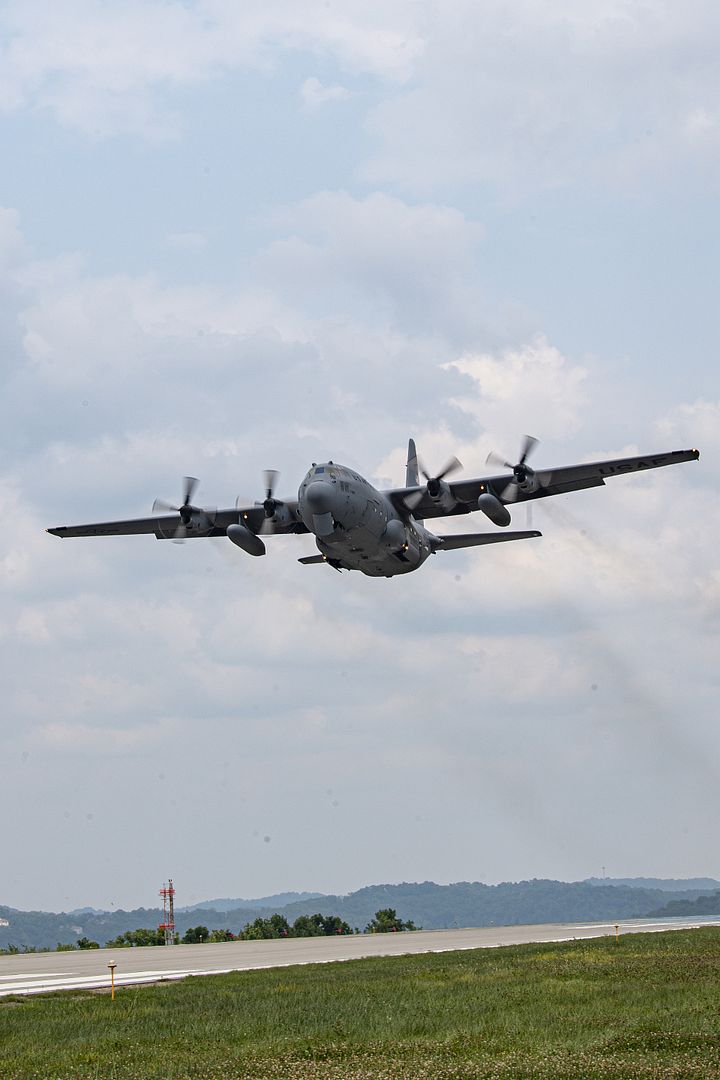
The Grand Forks Air Force Base fire crew awaits the final approach of the EQ-4 Block-20 Global Hawk to ceremoniously greet it with a water arc on Grand Forks Air Force Base, N.D., July 29, 2021. The water arc is a traditional send-off for aircraft that are being retired after completing their final flight. (U.S. Air Force photo by Airman 1st Class Jack LeGrand)
SOUTH CHINA SEA (July 29, 2021) A US Marine with Marine Fighter Attack Squadron 211 prepares to land an F-35B aboard HMS Queen Elizabeth while she conducts a double replenishment with RFA Tidespring and HNLMS Evertsen in the South China Sea on 29 July, 2021. VMFA-211 is attached to the United Kingdom's Carrier Strike Group 21, a UK-led international strike group including support from the U.S. Navy Arleigh Burke guided-missile destroyer USS The Sullivans (DDG 68) and The Royal Netherlands Navy HNLMS Evertsen. A free and open Indo-Pacific region that is peaceful and stable is vital to ensuring greater prosperity for the region and the world. (Royal Navy photography by PO Jay Allen)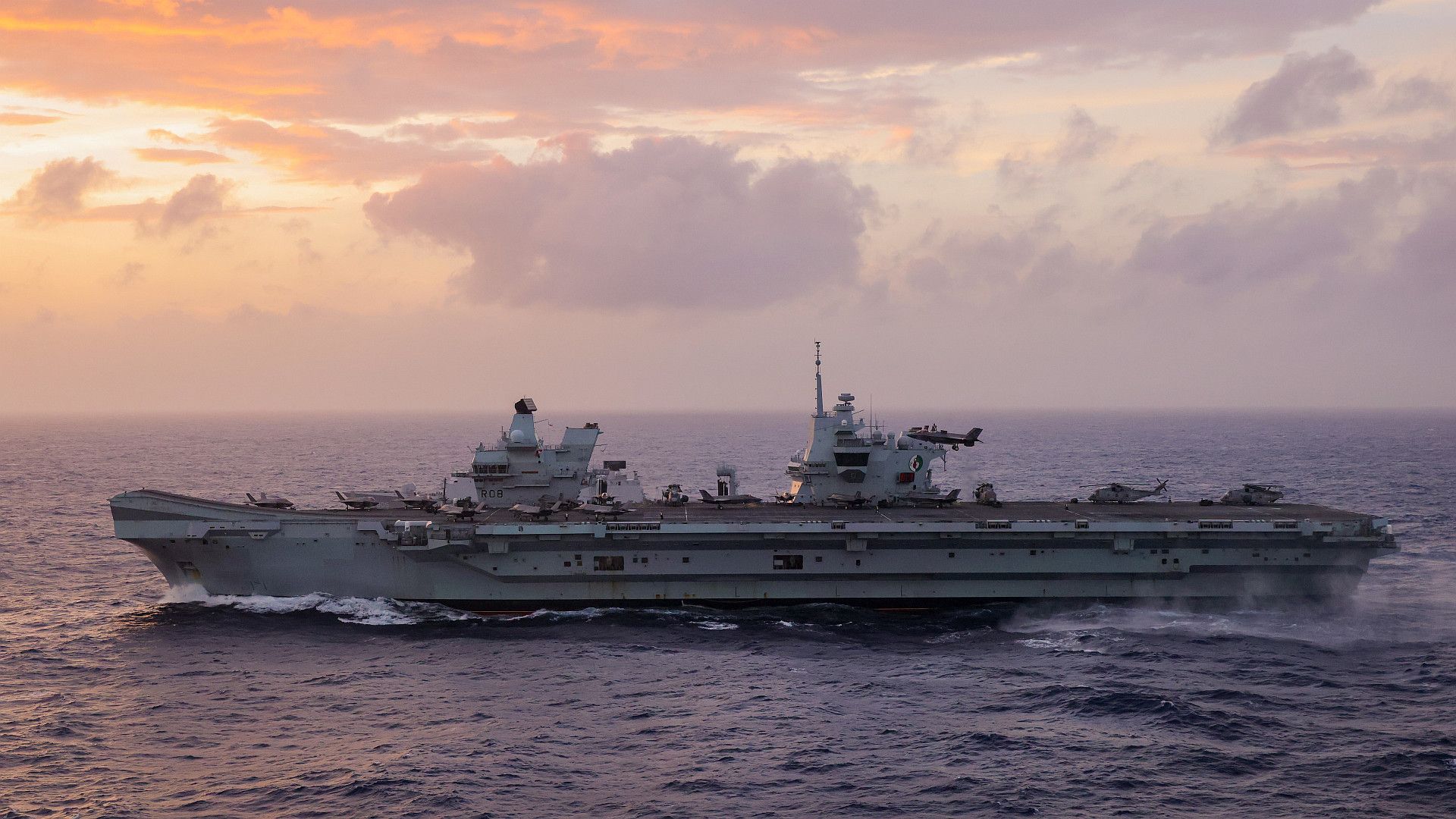
WICHITA, Kan. (August 3, 2021) – Textron Aviation today announced that AMREF Flying Doctors has added a pre-owned Cessna Citation Sovereign to its existing Cessna Citation aeromedical aircraft fleet. The aircraft is expected to arrive in Nairobi, Kenya and start lifesaving operations in September 2021.
“Continuing to be the supplier of choice for air ambulance emergency services in Africa is testament to the Cessna Citation’s performance, especially when each minute matters,” said Bob Gibbs, vice president, Special Mission Sales for Textron Aviation. “The spacious cabin of the Sovereign comfortably accommodates a multiple stretcher system and the necessary additional on-board medical staff. The Citation Sovereign’s range increases the AMREF Flying Doctor’s nonstop reach throughout Africa, Europe and Asia.”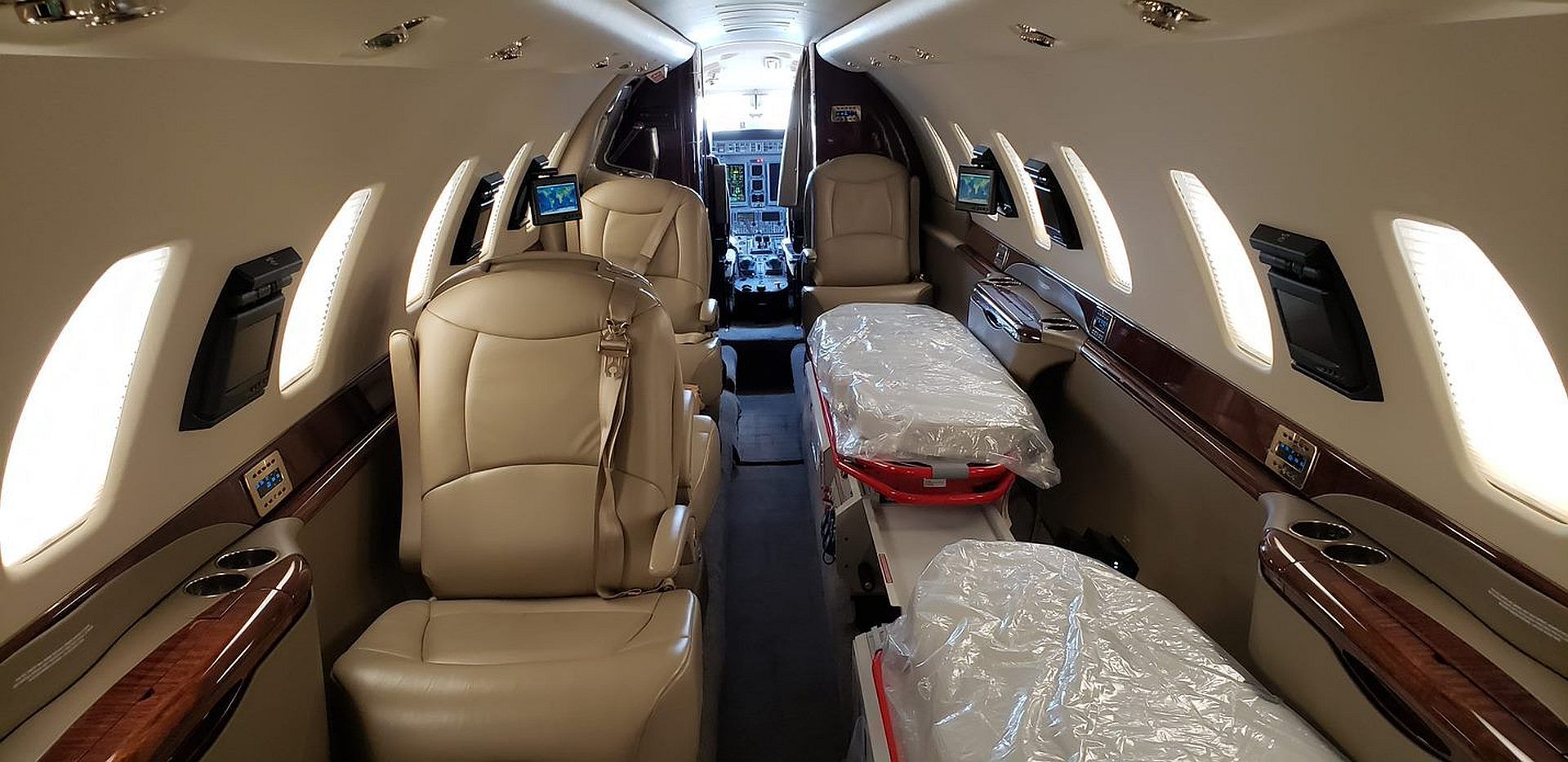
To enhance the aircraft’s low fixed costs of operation, accurately budget for maintenance costs and save with long-term aircraft value protection, AMREF Flying Doctors selected Textron Aviation’s ProParts program to cover the airframe systems and avionics parts required for line, scheduled and unscheduled maintenance.
“The Cessna Sovereign was an easy choice for AMREF Flying Doctors when looking to expand our aviation capability and capacity, so as to support our international, long distance air ambulance operations,” said Mike Black, Chief Operating Officer for AMREF Flying Doctors. He further explained, “patient care and comfort is key to maintaining AMREF Flying Doctors’ internationally recognized aeromedical service levels, which are perfectly addressed by the Cessna Sovereign’s cabin and its operating capabilities. In addition to acquiring the right aircraft, Textron Aviation did everything to assist with reconfiguring the aircraft for its dedicated air ambulance role at their Orlando, Florida Service Center as quickly and professionally as possible.”
AMREF Flying Doctors is a leading provider in fixed wing air ambulance operations in Africa, Europe and Asia. Serving the aeromedical transport industry for more than 60 years, AMREF Flying Doctors have been a long time operator of Beechcraft and Cessna fixed-wing aircraft. AMREF Flying Doctors have a worldwide reach and are based at and operate from Wilson Airport in Nairobi, Kenya.
“We are honored that AMREF Flying Doctors has selected the Citation Sovereign to add long range medevac capability to their fleet,” said Jim Evans, chief executive officer of Africair, Inc. “It was a pleasure working with the professionals at AMREF Flying Doctors and Textron Aviation to create a customized medical evacuation configured aircraft that will expand and enhance AMREF’s life saving operations. Africair and Textron Aviation are committed to providing excellent customer support and we will work diligently to ensure that the Citation Sovereign exceeds AMREF Flying Doctor’s expectations.”
-
 Main AdminGerman air force Tornado aircraft receive fuel from a U.S. Air Force KC-135 Stratotanker aircraft assigned to the 100th Air Refueling Wing, Royal Air Force Mildenhall, England, over Germany Aug. 2, 2021. The aerial refueling capabilities of the 100th ARW’s KC-135s extend the range of U.S., allied and partner-nation fighter aircraft. (U.S. Air Force photos by Senior Airman Joseph Barron)
Main AdminGerman air force Tornado aircraft receive fuel from a U.S. Air Force KC-135 Stratotanker aircraft assigned to the 100th Air Refueling Wing, Royal Air Force Mildenhall, England, over Germany Aug. 2, 2021. The aerial refueling capabilities of the 100th ARW’s KC-135s extend the range of U.S., allied and partner-nation fighter aircraft. (U.S. Air Force photos by Senior Airman Joseph Barron)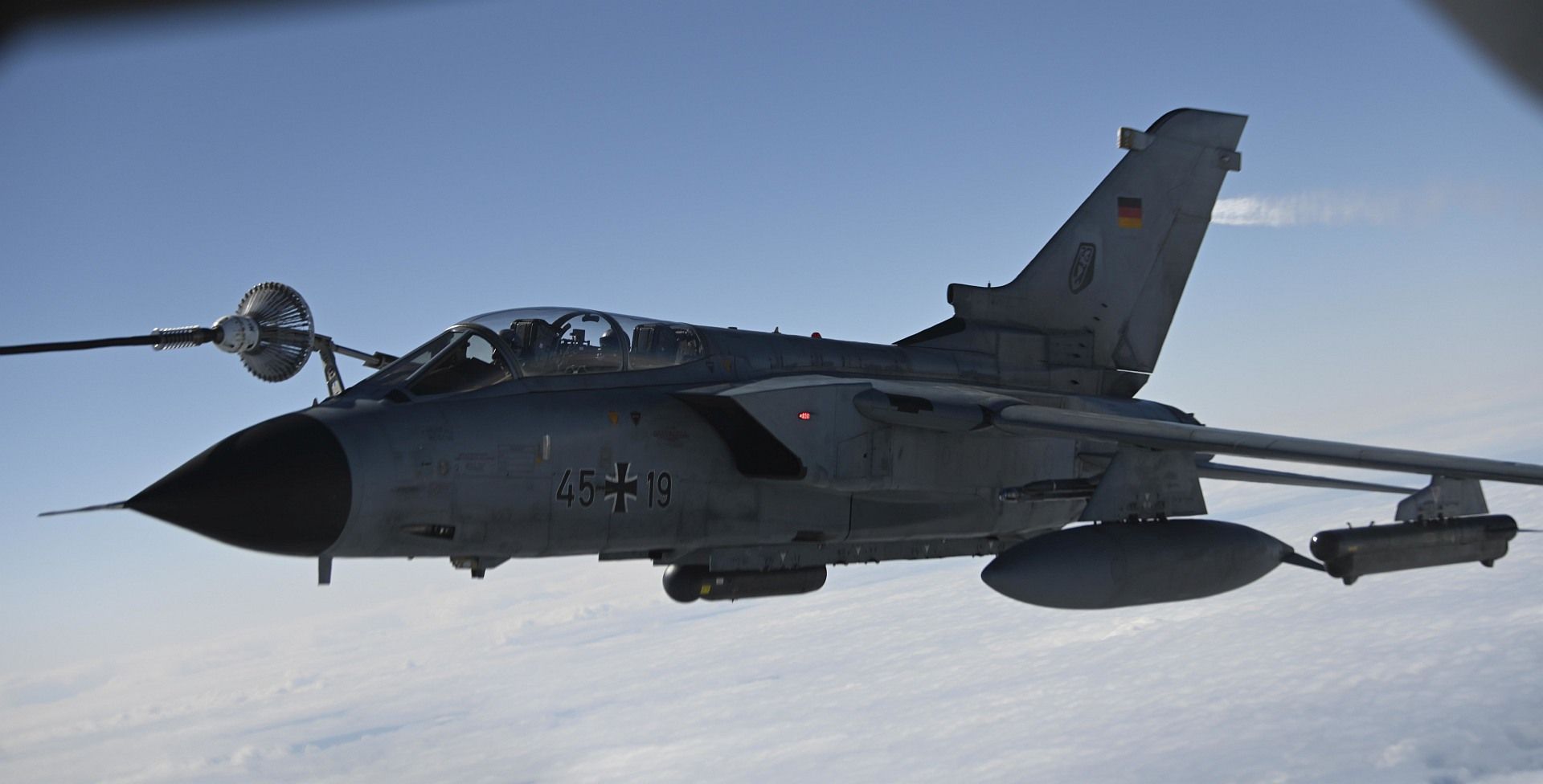
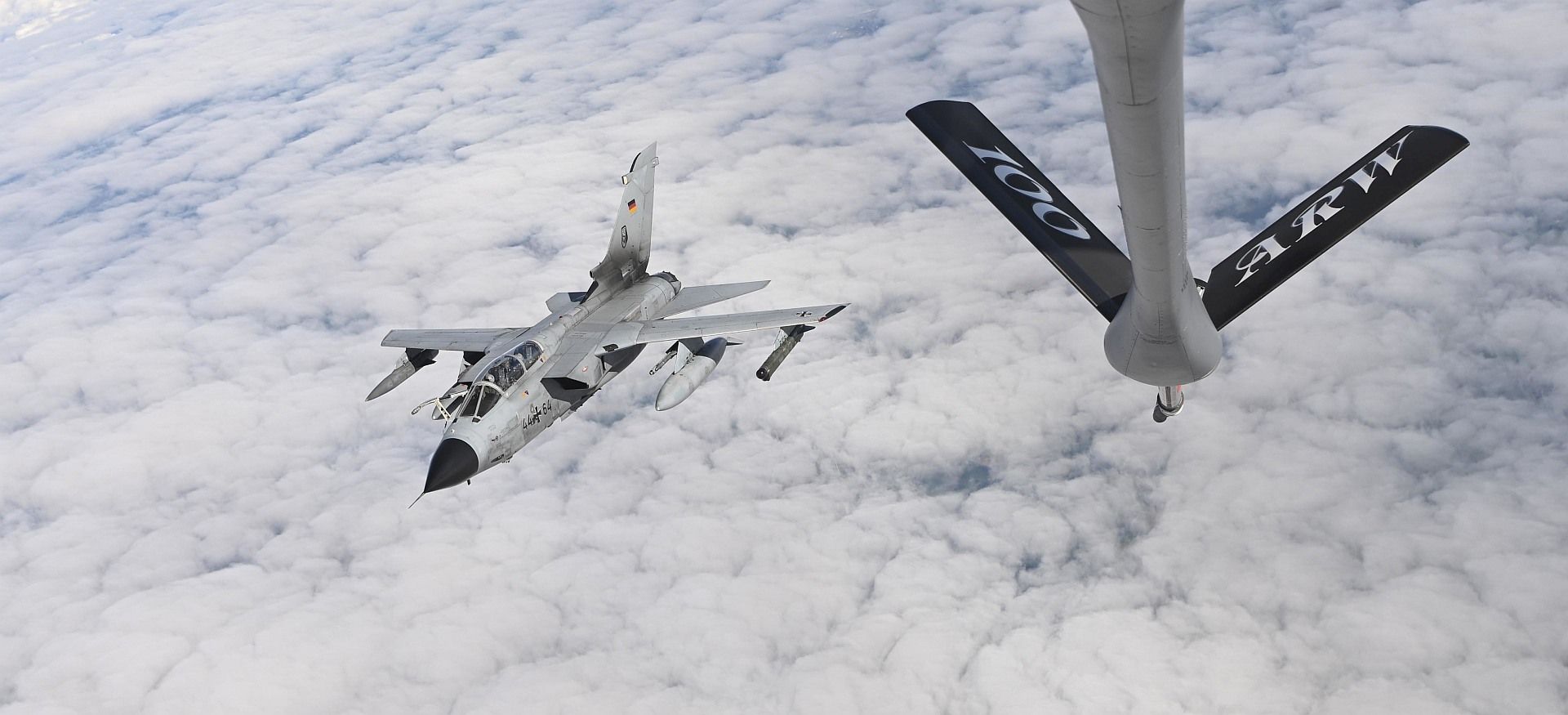
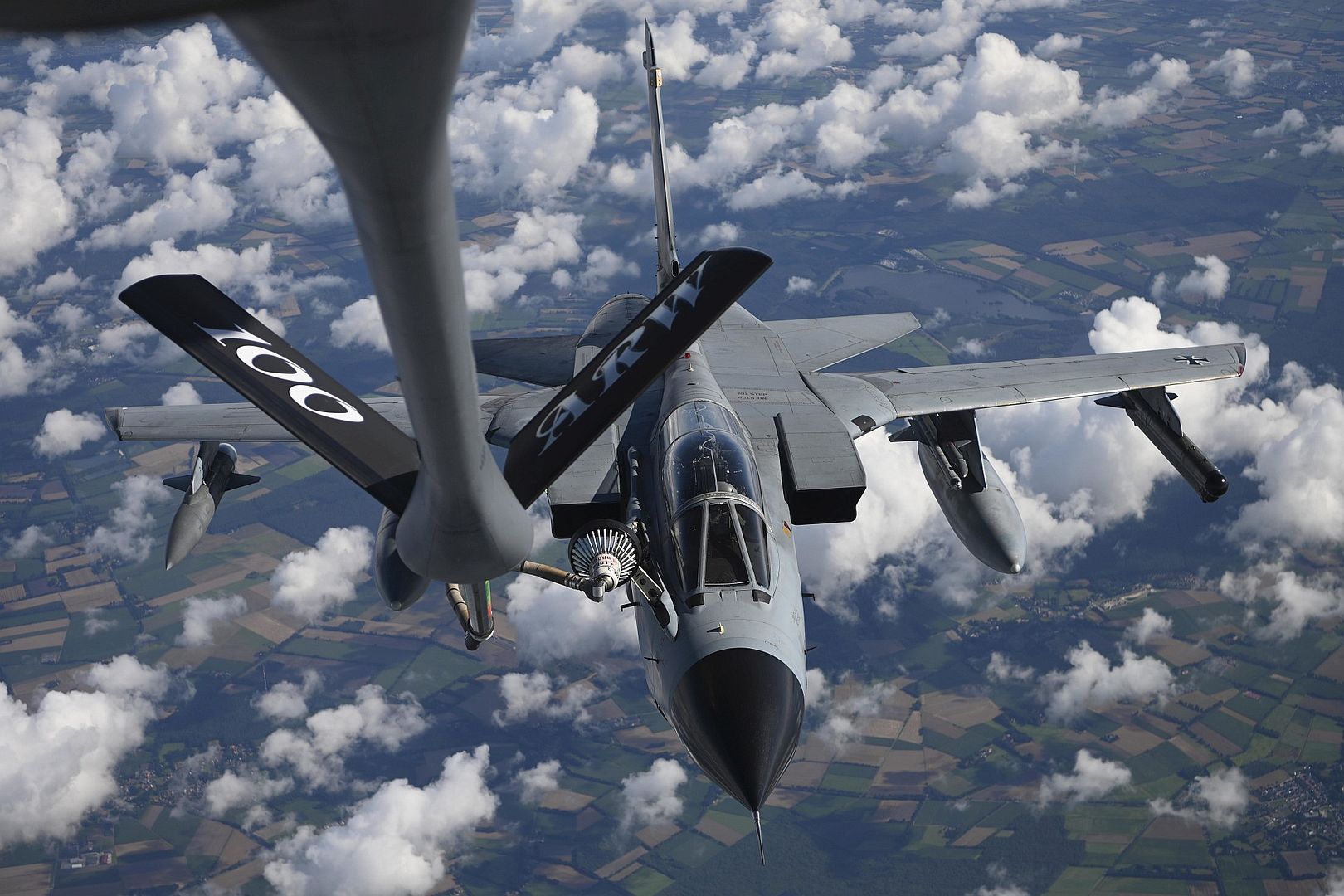
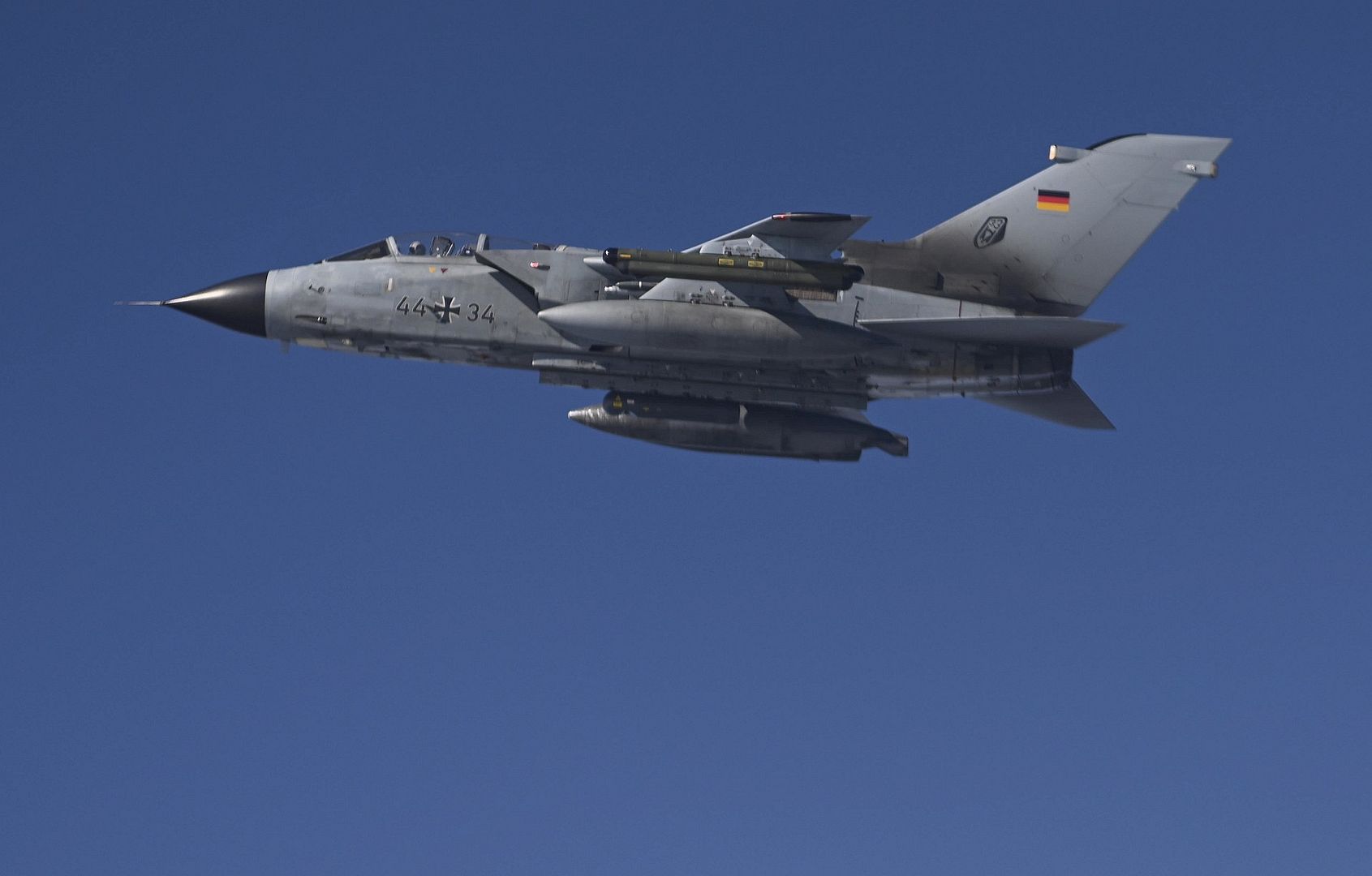
A U.S. Air Force F-16 Fighting Falcon, assigned to the 480th Expeditionary Fighter Squadron, takes off at Łask Air Base, Poland during Aviation Detachment Rotation 21.3, August 2, 2021. The ADR focuses on maintaining joint readiness while enhancing partner interoperability. (U.S. Air Force photo by Tech. Sgt. Anthony Plyler)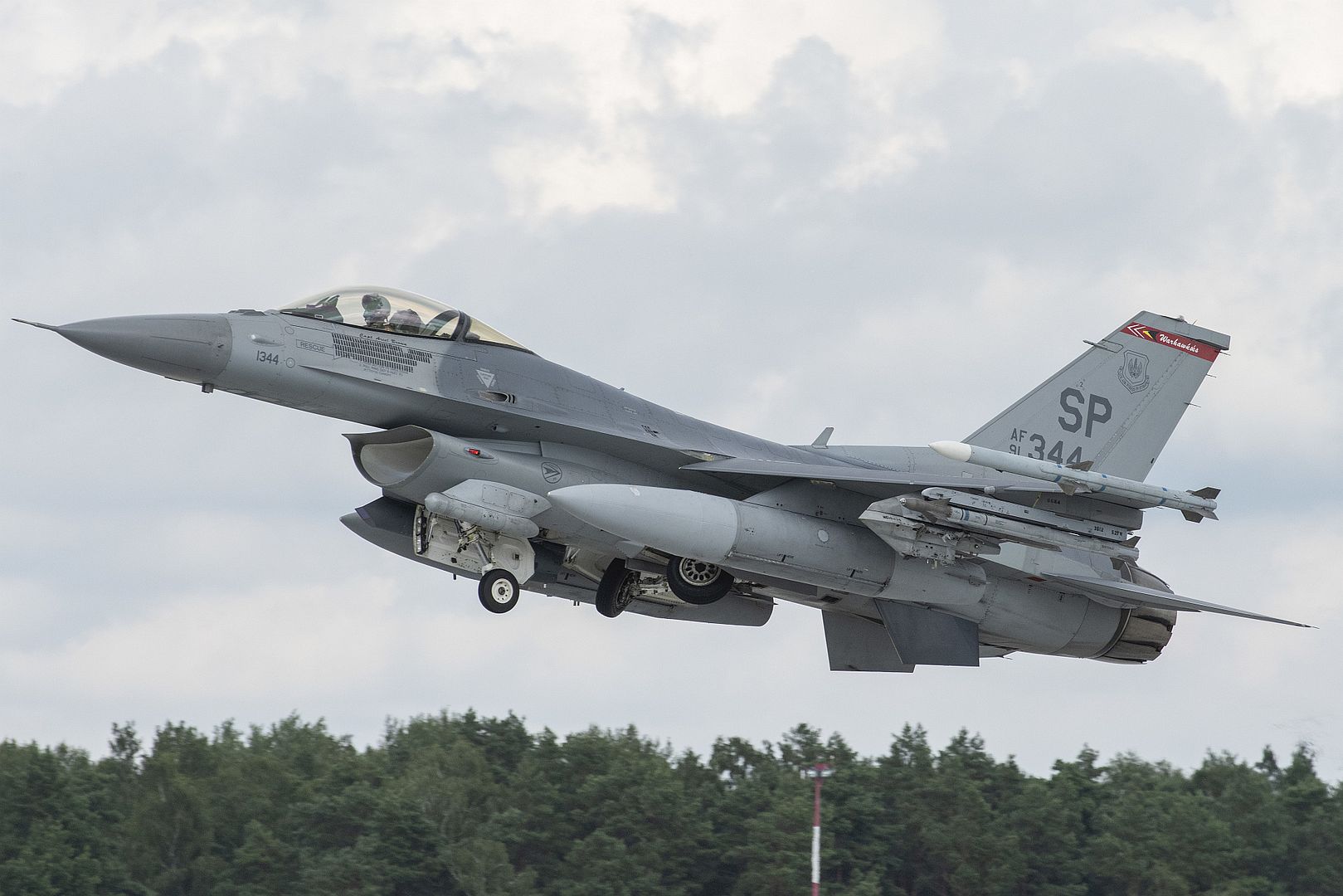
04.08.2021
The crews of the Mi-28N "Night Hunter" reconnaissance and attack helicopters of the helicopter regiment of the Leningrad Air Force and Air Defense Association of the Western Military District destroyed the armored vehicles of the conditional enemy at the Kingisepp training ground in the Leningrad Region during training flights.
The pilots made sorties from the home airfield during the day and at night. At the aviation training ground, the crews, including with the use of night vision equipment, launched unguided S-8 missiles and fired 2A42 small-gun weapons at a distance of up to 2 km. The affected targets were imitated by tanks, armored personnel carriers and engineering fortifications.
The crews worked out the tactics of helicopter ambushes and joint actions as part of helicopter search assault groups.
The Mi-28N "Night Hunter" attack helicopter is designed to search for and destroy tanks and other armored vehicles, as well as low-speed air targets and enemy manpower.
(Photo courtesy of the Ministry of Defence of the Russian Federation.)
-
 Main AdminTOWNSVILLE, QLD, AUSTRALIA --
Main AdminTOWNSVILLE, QLD, AUSTRALIA --
The edge of the B-52H Stratofortress's wing flexes upward toward the horizon as the behemoth banks westward over the vast expanse of the Pacific Ocean.
The B-52, which has been the foundation of the U.S. Air Force Global Strike bomber triad for more than 60 years, launched before dawn from Andersen AFB, Guam, and flew several thousand miles, and most of the day, to complete its mission - conducting bombing runs on a variety of targets, acquired and guided by U.S. and allied forces.
Their mission accomplished, the crew of five was relieved, yet fatigued, after hours of intense focus in the cockpit, on the navigator’s panel and in the electronic warfare officer’s seat.
While departing from the target area after their final bomb run, a sleek, light-grey jet joined up just few feet from the tip of the starboard wing; a distinctive kangaroo roundel visible below the front cockpit of the F/A-18F Super Hornet.
“Flying together with our RAAF allies sends a clear message that we can and will fight as a team,” said U.S. Air Force Lt. Col. Roy Lohse, Bomber Liaison Officer at RAAF Base Amberley.
The mission of the U.S. Bomber Task Force is multifaceted, but, as part of their BTF deployment, the crews from the 5th Bomb Wing at Minot AFB, North Dakota, flew their aircraft non-stop to Andersen AFB, Guam.
Once in Guam, the aircrews familiarize themselves with air bases and operations in different Geographic Combatant Commands, ensuring they are prepared to respond to any contingency or challenge across the globe.
In recent weeks, the aircrews from the 69th Expeditionary Bomb Squadron staged in support of Exercise Talisman Sabre 2021.
“TS21 offers a unique opportunity for our strategic bomber force to prepare for the challenges of power projection across the vast distances of the INDOPACOM area of responsibility,” said Lohse.
TS21 is a large-scale, bilateral military exercise taking place from 18-31 July 2021, between Australia and the U.S. It involves approximately 17,000 participants from seven nations.
“"Exercise Talisman Sabre 2021 provides Pacific Air Forces personnel and assets a realistic training environment where we can build trust and interoperability with our allies from across the Indo-Pacific region,” said U.S. Air Force Col. Barley Baldwin, 13th Air Expeditionary Group commander. “These relationships are vital for insuring a free and open Indo-Pacific, and it is great to come back and see so many of our hosts, our tremendous Aussie friends, that I’ve worked with over the years. The enduring relationships, mateship, and trust make building our interoperability much easier.”
The B-52H Stratofortress was just one aircraft in the dissimilar formation. Accompanying the 185,000 pound bomber from the 69th EBS was a Royal Australian Air Force EA-18G Growler from No.6 Squadron (SQN), a No.1 SQN F/A-18F Super Hornet, and a F-35A Lightning II aircraft from No.3 SQN.
Even with the complexities of flying a variety of different aircraft just feet apart, combined training over months and years and the resulting high levels of interoperability made the intricacies of the maneuver second nature to the pilots.
On top of physically training together in a shared environment, TS21 advances the Indo-Pacific Pathway’s initiative to promote a free and open Indo-Pacific and supports the shared value system of U.S. allies in the region.
The training provided to the U.S. Air Force as well as the joint and combined military forces from Australia, Japan, Canada, the Republic of Korea, the U.K. and New Zealand, allows for seamless integration in wartime and supports the U.S. National Defense Strategy by enhancing abilities to protect the homeland and addressing the full range of potential security concerns in the Indo-Pacific.
“TS21 showcases our ability to deliver capable, combat-ready, lethal airpower on short notice to any corner of the world alongside our tremendously capable partners and allies,” said Baldwin.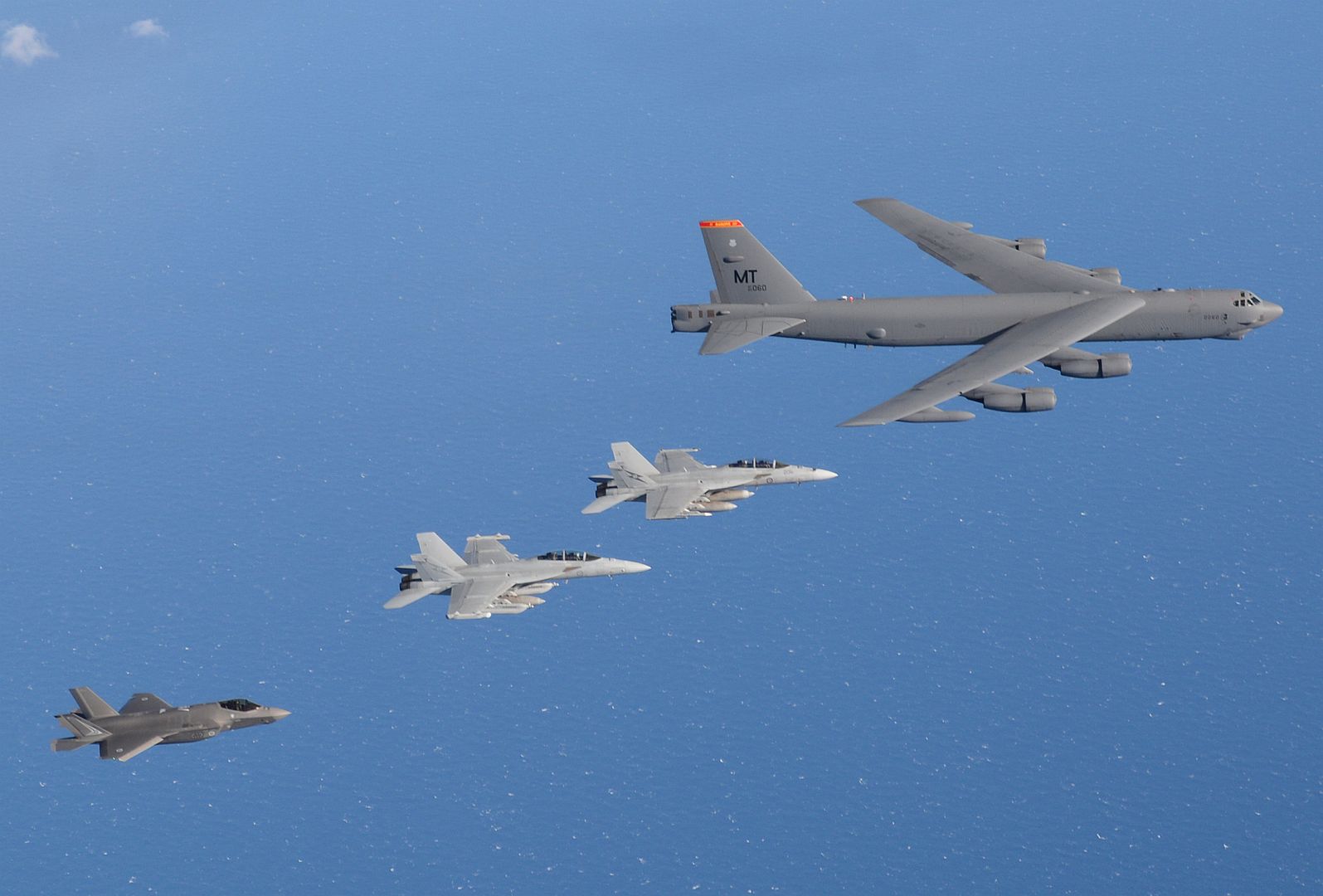
A U.S. Air Force A-10 Thunderbolt II lands on a Michigan State Highway in Alpena, Michigan, Aug. 5, 2021. Two A-10 Thunderbolt IIs from the 354th Fighter Squadron and two A-10s from the Michigan Air National Guard’s 127th Wing landed on a state highway as part of Northern Strike 21, a large-scale training exercise. This is the first time in history that the Air Force has purposely landed modern aircraft on a civilian roadway in the U.S. (U.S. Air Force photos by Senior Airman Alex M. Miller)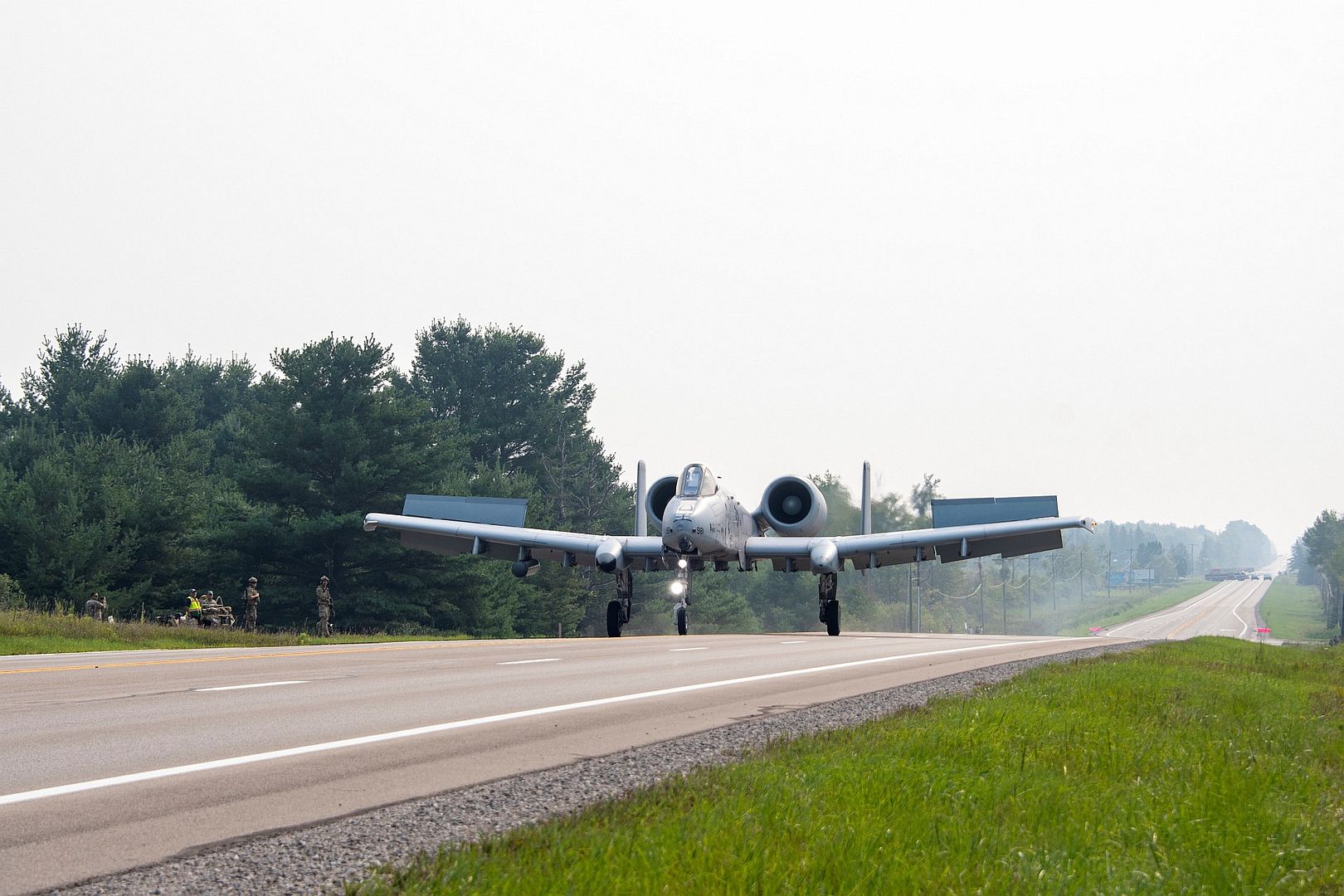
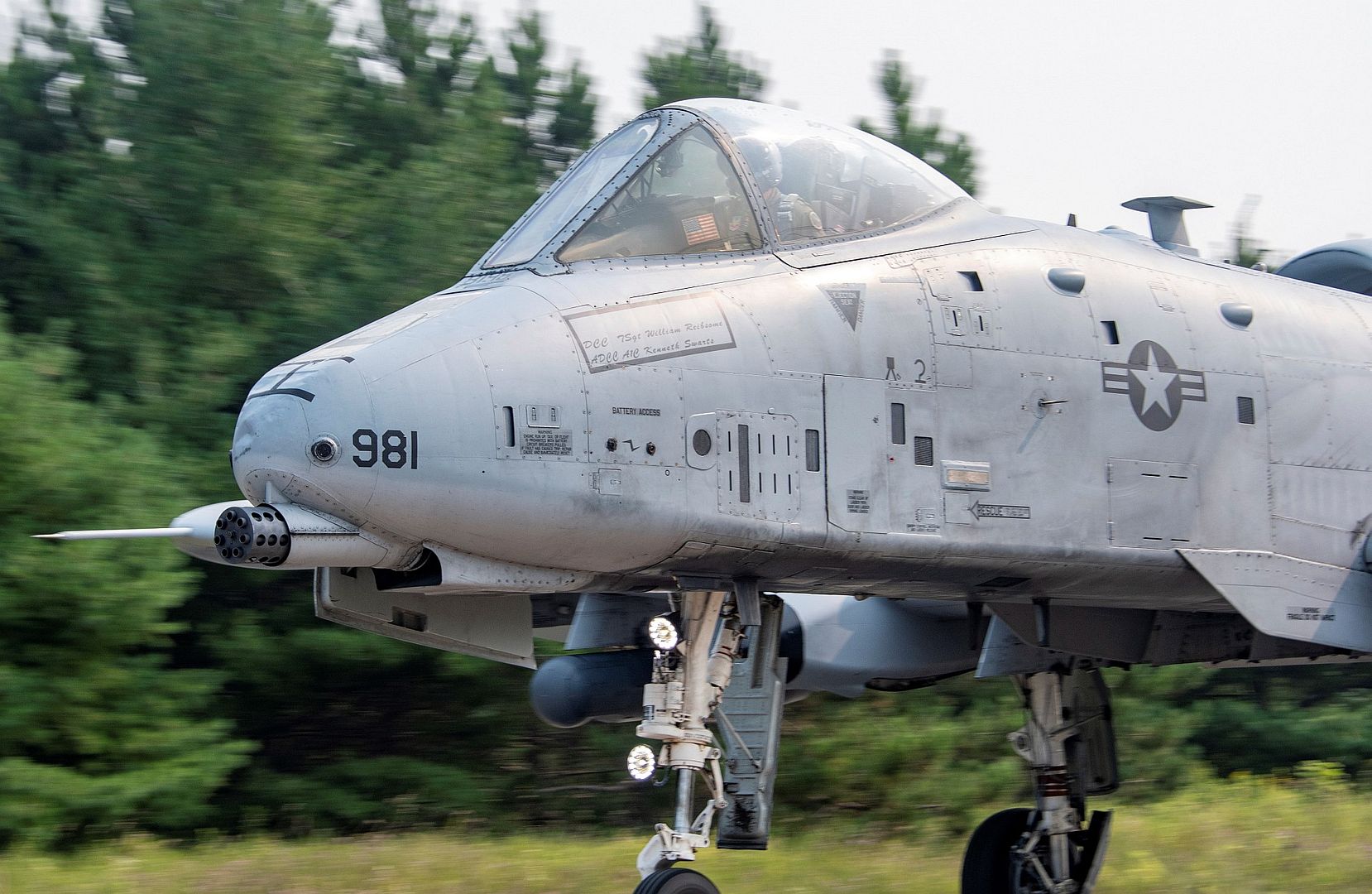
São José dos Campos, Brazil, August 5th, 2021 – After unveiling plans for a major expansion in North America with a firm order for 30 E195-E2 jets, with purchase rights for a further 50 aircraft, Porter Airlines has signed a major aftermarket support package contract with Embraer. The Total Support Program (TSP) agreement includes airframe heavy maintenance checks, technical solutions, and access to the Pool Program, which includes component exchanges and repair services for hundreds of reparable items for Porter’s E2 fleet of commercial aircraft, for up to 20 years. Currently, the Pool Program supports more than 50 airlines worldwide.
“This service agreement with Embraer is fundamental to Porter’s operational success. During this very important moment in Porter's history, Embraer's expertise and support is crucial as we start operations with the E-Jets E2, since no one knows these planes better than the manufacturer,” said Michael Deluce, President & CEO, Porter Airlines.
The Pool Program services will be provided by Embraer Aircraft Customer Services (EACS) in Fort Lauderdale, Florida, while the heavy maintenance services will be performed by Embraer Aircraft Maintenance Services (EAMS) in Nashville, Tennessee. In the coming months, Embraer will work with Porter in order to provide services related to the aircraft entry into service (EIS) process, which includes technical training, spare parts recommendations, and provisioning services.
“With this agreement, we will broaden and deepen our relationship with Porter. Embraer will provide all necessary support, long before the airline starts operations with the most efficient single-aisle aircraft in the world, the E195-E2. We are very proud of the trust and confidence that Porter has placed in Embraer's services and we’re eager to start our work together,” said Johann Bordais, President & CEO, Embraer Services & Support.
Porter Airlines will be the North American launch customer for Embraer’s E-Jets E2 family of commercial aircraft. Porter’s investment is set to disrupt the Canadian aviation landscape by enhancing competition, elevating passenger service levels and creating as many as 6,000 new jobs. Porter intends to deploy the E195-E2s to popular business and leisure destinations throughout Canada, the United States, Mexico and the Caribbean, from Ottawa, Montreal, Halifax and Toronto Pearson International Airport.
Porter’s first delivery and entry into service is scheduled to start in the second half of 2022. The E195-E2 accommodates between 120 and 146 passengers. Configuration plans for Porter’s E2s will be revealed in due course.
About Porter Airlines
Porter Airlines provides a warm and effortless approach to hospitality, restoring glamour and refinement to air travel. Porter is an Official 4 Star Airline® in the World Airline Star Rating®. The airline currently offers flights to Toronto, Ottawa, Montreal, Quebec City, Fredericton, Saint John, Moncton, Halifax, St. John’s, Thunder Bay, Sault Ste. Marie, Sudbury, Timmins, Windsor, New York (Newark), Chicago (Midway), Boston and Washington (Dulles), and has seasonal flights to Mt. Tremblant, Que., Muskoka, Ont., Myrtle Beach, S.C., and Stephenville, N.L. Visit www.flyporter.com or follow @porterairlines on Instagram, Facebook and Twitter. Details of growth plans to provide North America-wide service are available at flyporter.com.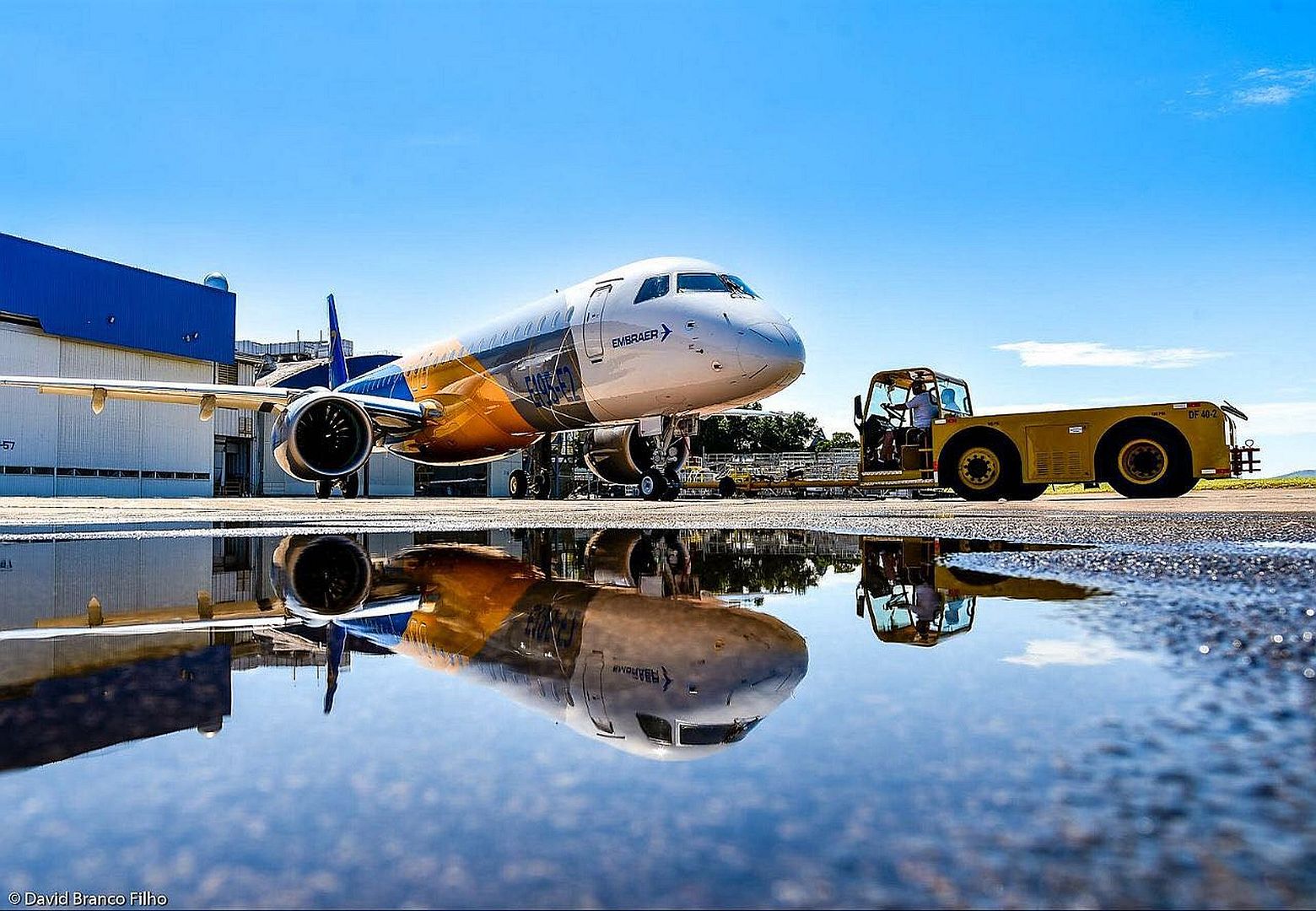
An E-3D Sentry has returned to its home base at RAF Waddington following its final mission on Operation Shader, bringing to a close 30 years of operational service. On arrival the aircraft and crew were met by Air Vice-Marshal Al Marshall, Air Officer Commanding 1 Group, and also Major General Thomas Kunkel USAF, the Commanding officer of the NATO Airborne Early Warning and Sea Control Force.
The Sentry had previously flown the final operational sortie on the 30th July over Iraq as part of the counter-Daesh Op Shader.
The aircraft from No.8 Squadron had been deployed to RAF Akrotiri in Cyprus and was the latest and last deployment since 2015.
The E-3D Sentry will be retired later this year and will be replaced in 2023 by a fleet of three Boeing E-7 Wedgetails that will operate from RAF Lossiemouth in Scotland.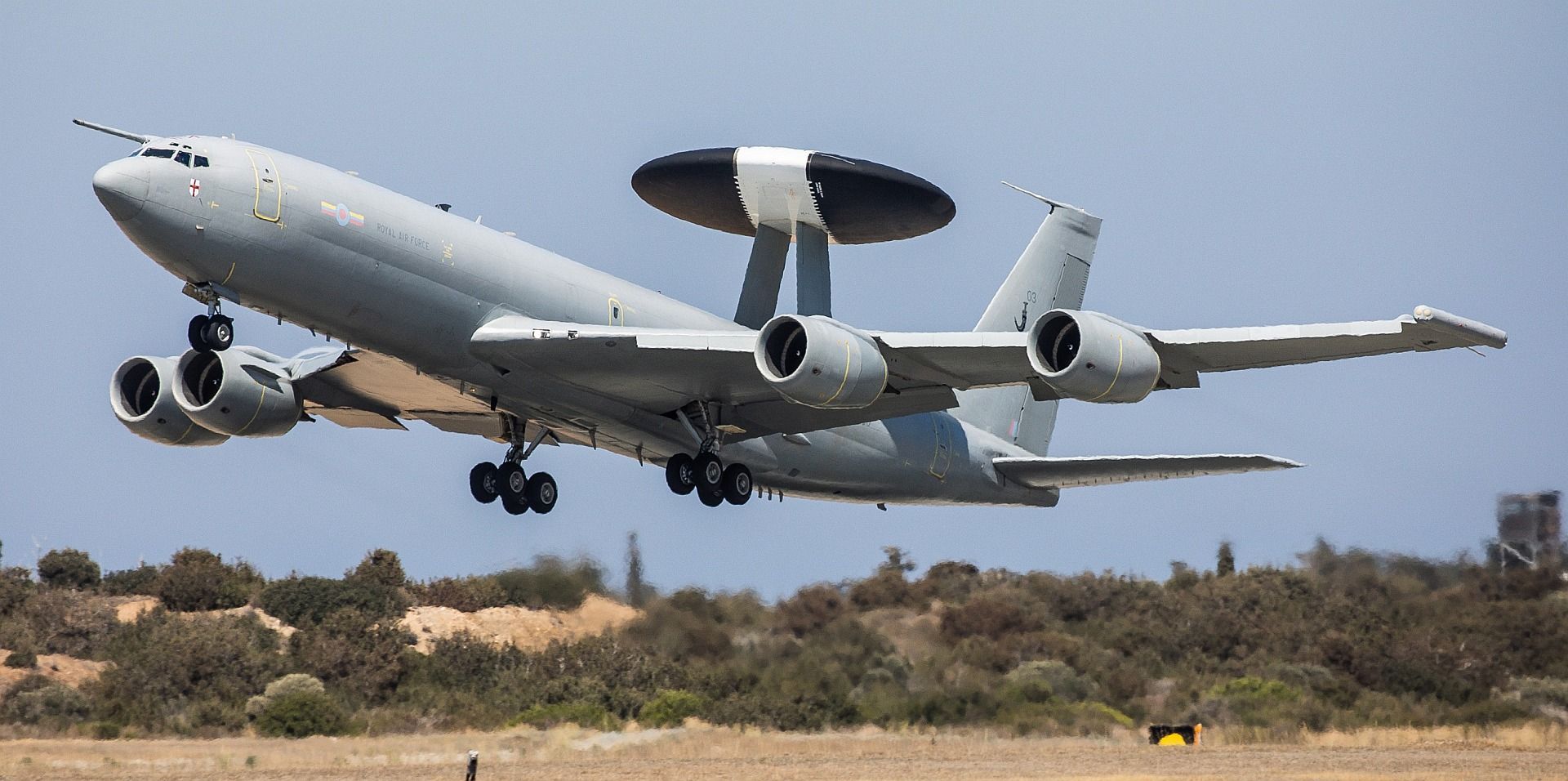
During the period between retirement and the Wedgetail becoming operational, the ISTAR requirements will be covered by a combination of other aircraft and E-3s from our NATO partners.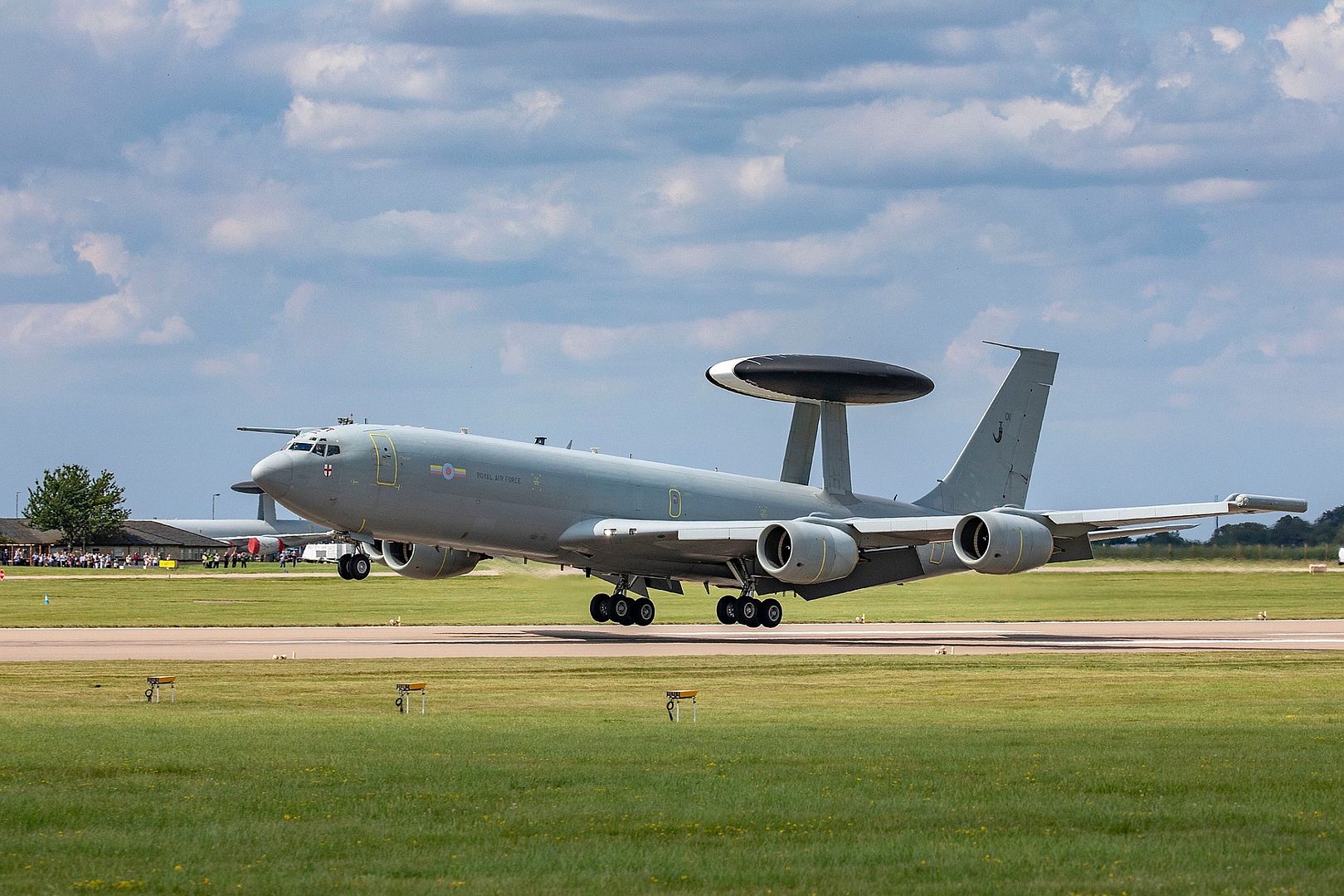
The aircraft that returned on 4th August was the second of two aircraft from No. 8 Squadron that had been conducting Operations in the Eastern Mediterranean region, the other aircraft returned earlier to RAF Waddington where it was greeted by a traditional water arch.
(Photos courtesy of the RAF)
-
 Main AdminNELLIS AIR FORCE BASE, Nevada --
Main AdminNELLIS AIR FORCE BASE, Nevada --
Red Flag exercises have been around for 46 years, and the concept was created to tactically train fighter pilots. Through these exercises, multiple coalition forces and joint sister services come together three times a year to train in a simulated, safe environment with threat-replicating aircraft.
The uniqueness of Red Flag-Nellis 21-3 is that the training only involves U.S. personnel, allowing the joint participants from other services and major commands to focus on details and sharpen their skillsets at a high classification and high tactical level.
Alongside the U.S. Air Force, Red Flag-Nellis 21-3 included the U.S. Navy, U.S. Marine Corps, Space Force, Air National Guard and the U.S. Air Force Reserves.
“When you can bring joint units along with the Air Force in an environment like this, it’s no longer part-task training,” said Lt. Col. Tyler Stef, Red Flag commander. “It is full integration… We will better know and understand their service culture. Red Flag is the opportunity people get to come and start to build those relationships that will ultimately last a career.”
Joint military training and exercises are designed to train commanders and staff in joint operations that consist of tasks as important as collecting, disseminating and analyzing intelligence data.
“Having multiple major commands participating makes this an even more unique exercise,” said Stef. “They bring a different focus for different problem sets and gain unique perspectives, because they are well-versed in that specific region. For this one, we are focusing on a pacific region threat, allowing our Pacific Air Forces to give us that insight.”
U.S. Marine Corps Lt. Col. Tim Miller, VMFA-115 Marine Fighting Squadron commanding officer, placed emphasis on the importance of joint participation and the airpower components that have been involved, allowing integration amongst one another to achieve a successful Red Flag.
“Joint interoperability is important,” said Miller. “It allows us to practice how we are going to operate in the event that some real-world combat operation was to arise. That’s kind of where the Department of Defense is focusing now, which has put some additional emphasis on exercises such as Red Flag. It’s all about integration, and we’re still able to get that done in an extremely professional environment. For our maintainers to understand how the airfield operates and functions is a huge combat readiness enabler for us”
The great power competition continues to be a major talking point within the Department of Defense. Red Flag is another way to prepare and allow participants to experience situations similar to those possible in the real-world.
Both commanding officers prioritized the importance of bringing together the common perspectives against shared threats merges the different organizations together to understand their processes. While the aircrew tends to the aircraft, whether it be Navy, Marines or Air Force, they have the responsibility of ensuring the integrity of the aircraft does not shift. However, they are relying heavily on the space and intelligence aspect to ensure the airspace is clear and prepared.
“The relationships that are built here, will afford them challenging problem sets that may evolve,” said Stef. “The unique opportunity is when you can get together for three weeks and build strong relationships and eventually see them again in the future. We will continue to sustain a warfighting culture and provide more advanced threat training while also continuing to know and understand each other’s culture.”
(U.S. Air Force photo by Airman 1st Class Zachary Rufus)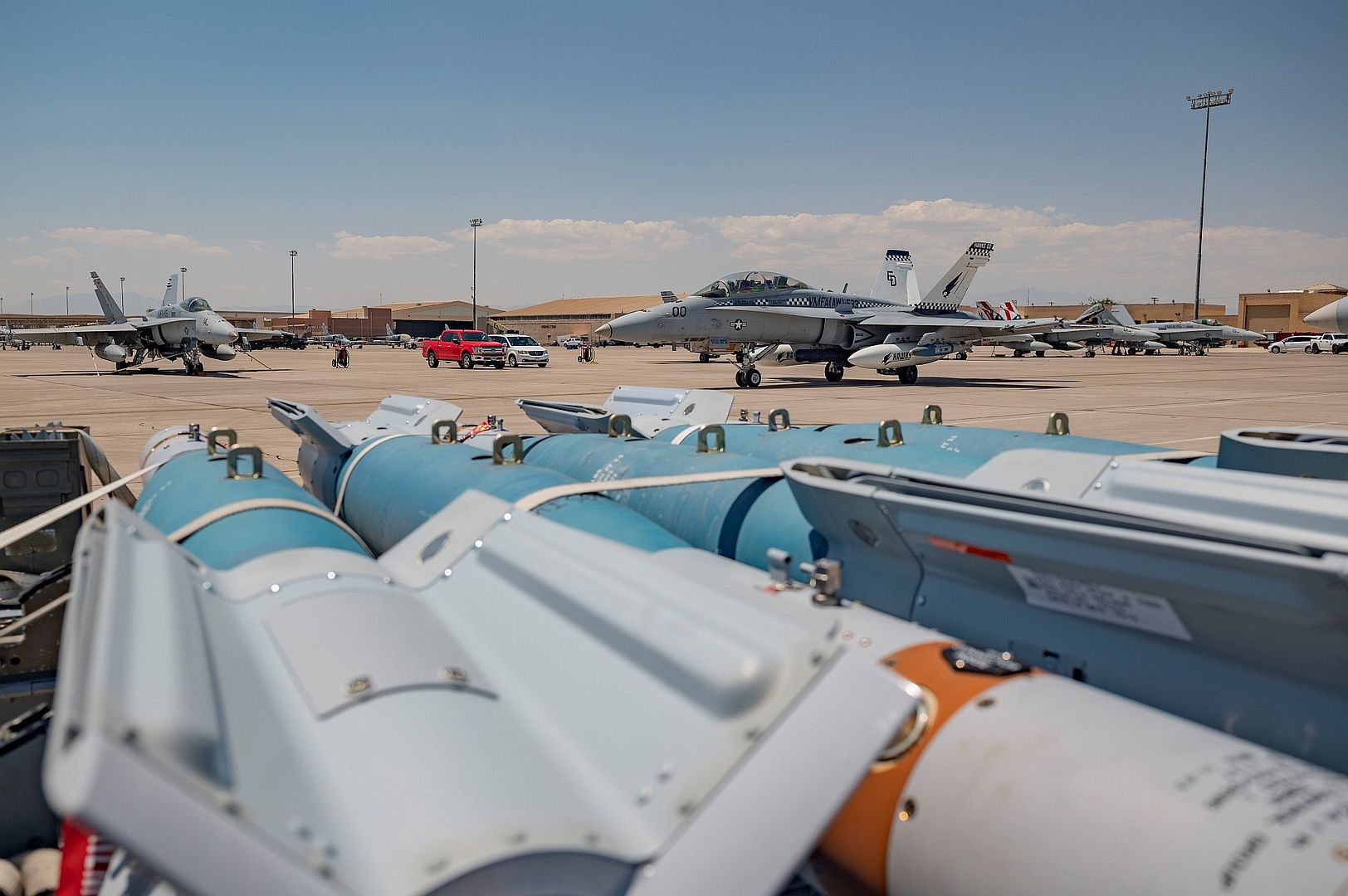
A B-2 Spirit assigned to the 509th Bomb Wing at Whiteman Air Force Base, Missouri, flew to Tinker for a static aircraft tour for 350 civilians and contractors at Tinker Air Force Base, Oklahoma, July 30, 2021. More than 700 personnel support the operational mission of the aircraft and the tour allowed them to see the jet in real life and meet the pilots and maintenance crew of the aircraft they sustain and improve until its eventual sunset. (U.S. Air Force photos by Lauren Kelly and Paul Shirk)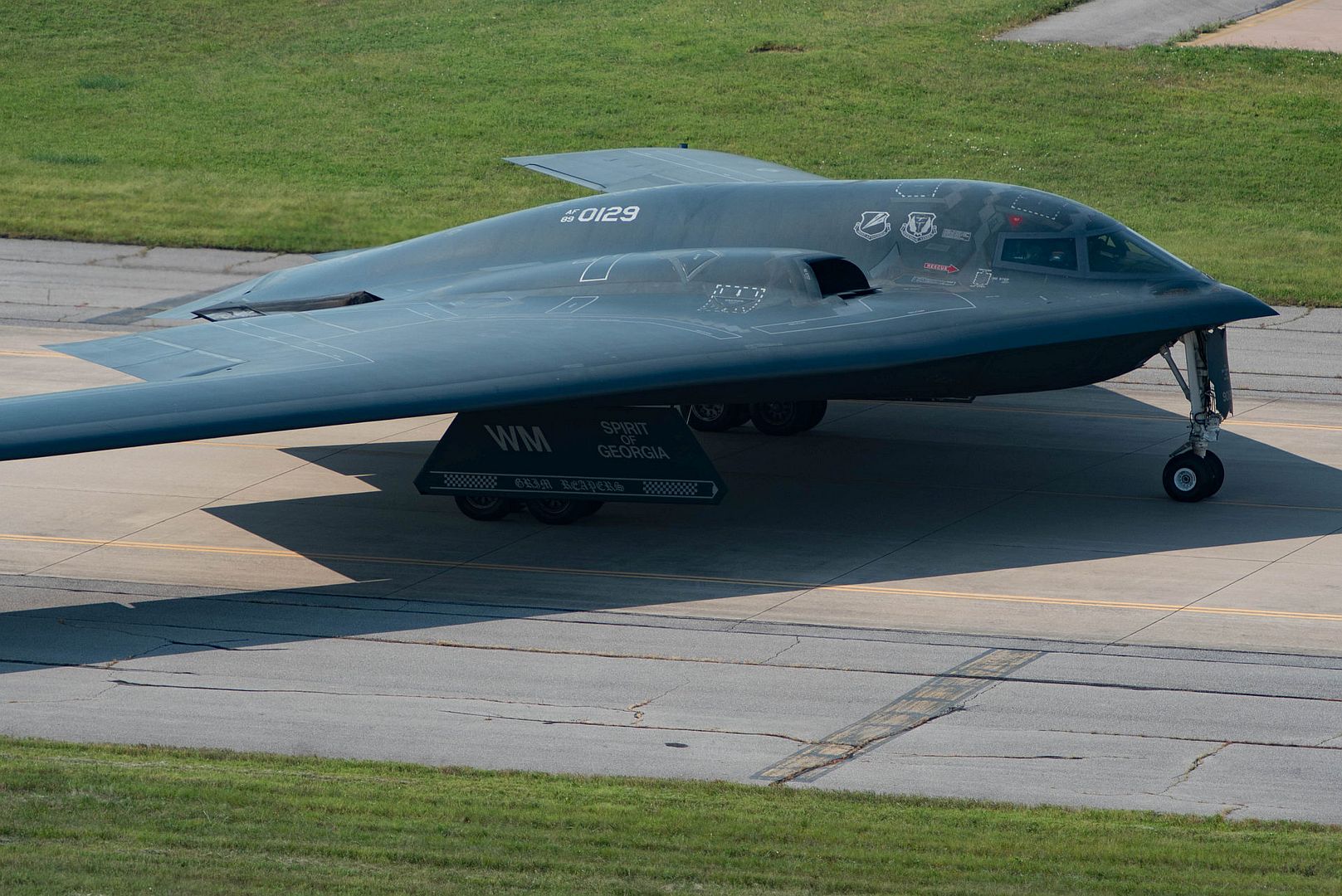
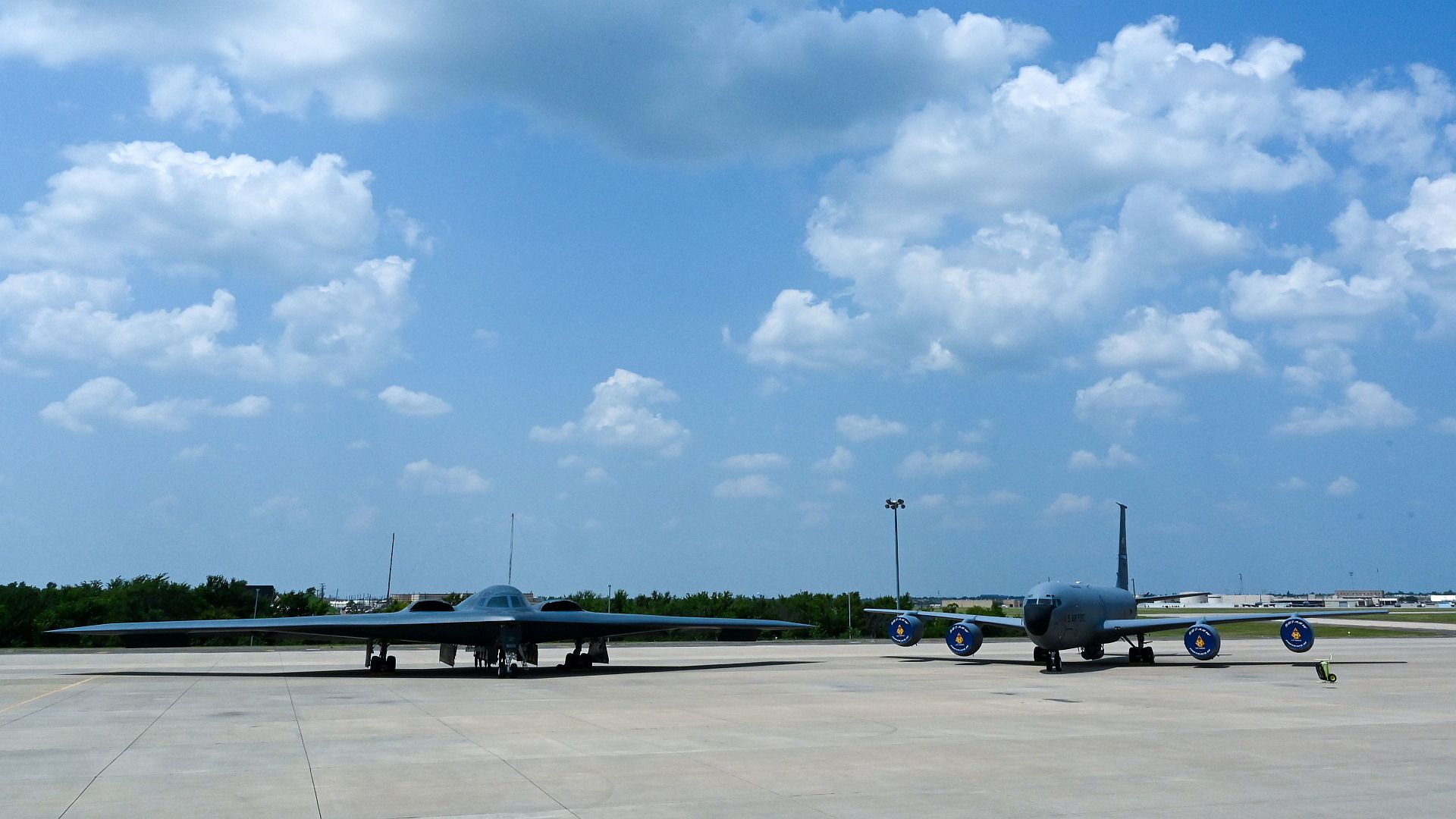
SAN DIEGO – Aug. 6, 2021 – (PHOTO RELEASE) Northrop Grumman Corporation’s (NYSE: NOC) RQ-4 Global Hawk Ground Segment Modernization Program (GSMP), currently in integration and testing following a successful first flight in 2020, provides new cockpit displays that enhance situational awareness for the pilot and sensor operator while improving overall mission capabilities. GSMP is part of a series of Global Hawk modernization efforts that will enhance the ability of the system to monitor and deter near-peer and peer threats around the globe. The system is on schedule to complete operational test and evaluation in October 2022.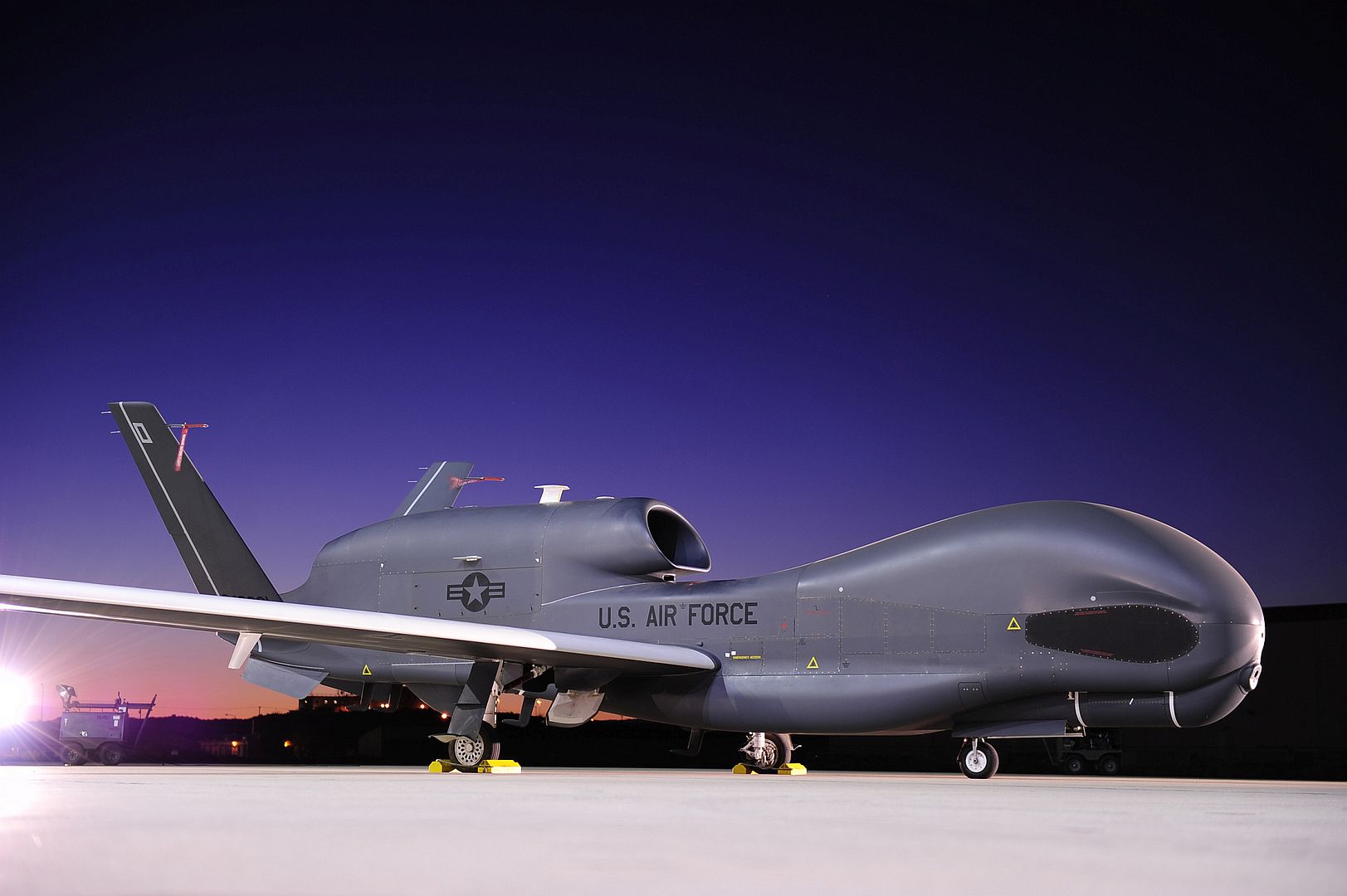
06 Aug 2021.
Royal Air Force Typhoons have been scrambled to intercept and monitor Russian aircraft flying into UK controlled airspace.
Quick Reaction Alert Typhoons were scrambled from RAF Lossiemouth in the north of Scotland and were joined by an RAF Voyager from RAF Brize Norton to provide air-to-air refuelling to the Typhoons.
A pair of TU-142 ‘Bear-F’ Maritime Reconnaissance and Anti-submarine warfare aircraft were tracked by NATO as they transited within NATO’s northern air policing area.
As they continued to fly towards UK airspace, RAF Typhoons were launched. Intercepting the two Russian aircraft over the North Sea, the RAF Typhoons remained nearby to monitor the aircraft within the UK controlled Flight Information Region.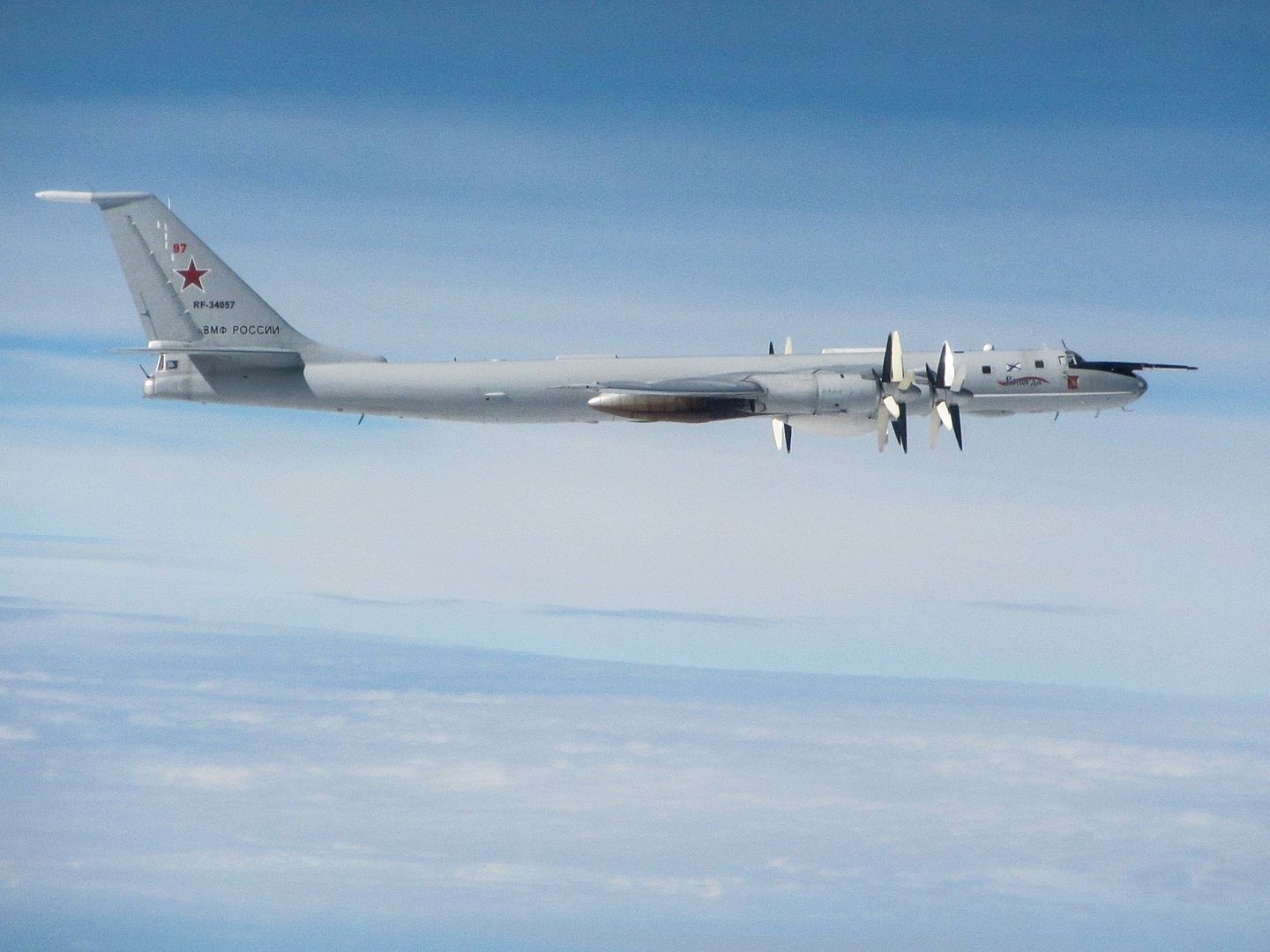
To ensure the RAF was able to respond to any potential threats, the Voyager tanker also remained on station to provide air-to-air refuelling for the live-armed Typhoons. This provides additional flexibility should the situation change, such as the aircraft turning back towards UK airspace.
RAF Typhoons are scrambled during these incidents to secure and safeguard the skies of the United Kingdom. Russian military aircraft entering the UK Flight Information Region, the UK’s policed zone of international airspace, can pose a hazard to other air users. These Russian aircraft often do not talk to air traffic control or ‘squawk’, broadcasting a code ensuring they are visible to other air users and air traffic controllers on the ground.
Once the incident concluded, the Typhoons and Voyager returned to their bases and have returned to a state of readiness which ensures that they can respond to any potential threats to the United Kingdom, 24/7/365.
(Photos courtesy of the RAF)
-
 Main AdminSANTA RITA, Guam (Aug. 6, 2021) - HMS Queen Elizabeth pulled into Apra Harbor as part of the United Kingdom Carrier Strike Group (CSG) 21 deployment to the Indo-Pacific Region. Local media representatives were invited onboard the ship for a press conference with CSG21 Commodore Steve Moorhouse, U.S. Naval Base Guam Commanding Officer Capt. Michael Luckett, Guam Governor Lourdes Leon Guerrero and Lt. Governor Josh Tenorio.
Main AdminSANTA RITA, Guam (Aug. 6, 2021) - HMS Queen Elizabeth pulled into Apra Harbor as part of the United Kingdom Carrier Strike Group (CSG) 21 deployment to the Indo-Pacific Region. Local media representatives were invited onboard the ship for a press conference with CSG21 Commodore Steve Moorhouse, U.S. Naval Base Guam Commanding Officer Capt. Michael Luckett, Guam Governor Lourdes Leon Guerrero and Lt. Governor Josh Tenorio.
HMS Queen Elizabeth is the largest and most powerful vessel ever constructed for the Royal Navy and is capable of carrying up to 40 aircraft. Aside from its state-of-the-art weaponry and communications systems, HMS Queen Elizabeth boasts five gyms, a chapel and a medical center. The flight deck of HMS Queen Elizabeth measures at approximately four acres.
The deployment is the U.K.’s first by a carrier strike group in the Indo-Pacific for almost 25 years and marks a historic achievement in the bilateral partnership between the U.S. and U.K. The Arleigh Burke-class guided missile destroyer USS The Sullivans (DDG-68) is deployed with the strike group, as are F-35B Lightning II Joint Strike Fighters of Marine Fighter Attack Squadron 211 and Royal Netherlands Navy frigate HNLMS Evertsen (F805).
(Photos by Valerie Maigue)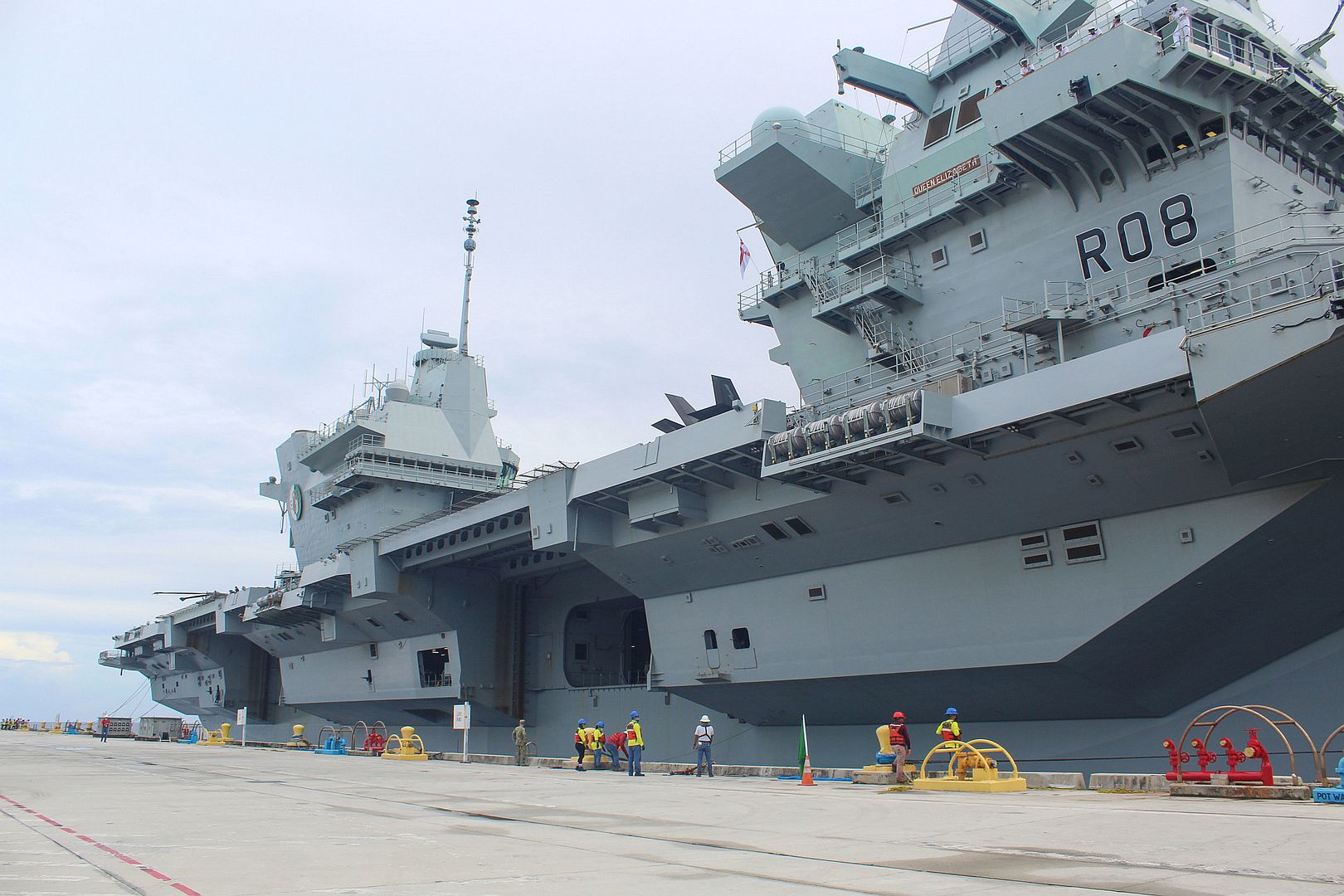

The aircraft carrier USS Gerald R. Ford (CVN 78) successfully completes the third and final scheduled explosive event of Full Ship Shock Trials while underway in the Atlantic Ocean, Aug. 8, 2021. The U.S. Navy conducts shock trials of new ship designs using live explosives to confirm that our warships can continue to meet demanding mission requirements under harsh conditions they might encounter in battle. (U.S. Navy photos by Mass Communication Specialist 3rd Class Novalee Manzella)_successfully_completes_the_third_and_final_scheduled_explosive_event_of_Full_Ship_Shock_Trials_while_underway_in_the_Atlantic_Ocean_Aug._8_2021..jpg?width=1920&height=1080&fit=bounds)
_successfully_completes_the_third_and_final_scheduled_explosive_event_of_Full_Ship_Shock_Trials_while_underway_in_the_Atlantic_Ocean_Aug._8_2021.-1.jpg?width=1920&height=1080&fit=bounds)
A U.S. Coast Guard MH-65D Dolphin helicopter crew from Air Station Savannah, Georgia, transits over the Savannah River en route to Charleston, South Carolina, Aug. 7, 2021. Air Station Savannah is responsible for over 450,000 square miles of water from the border between North and South Carolina south to Melbourne, Florida and out to sea approximately 100 nautical miles. (U.S. Coast Guard photo by Petty Officer 2nd Class Barry Bena)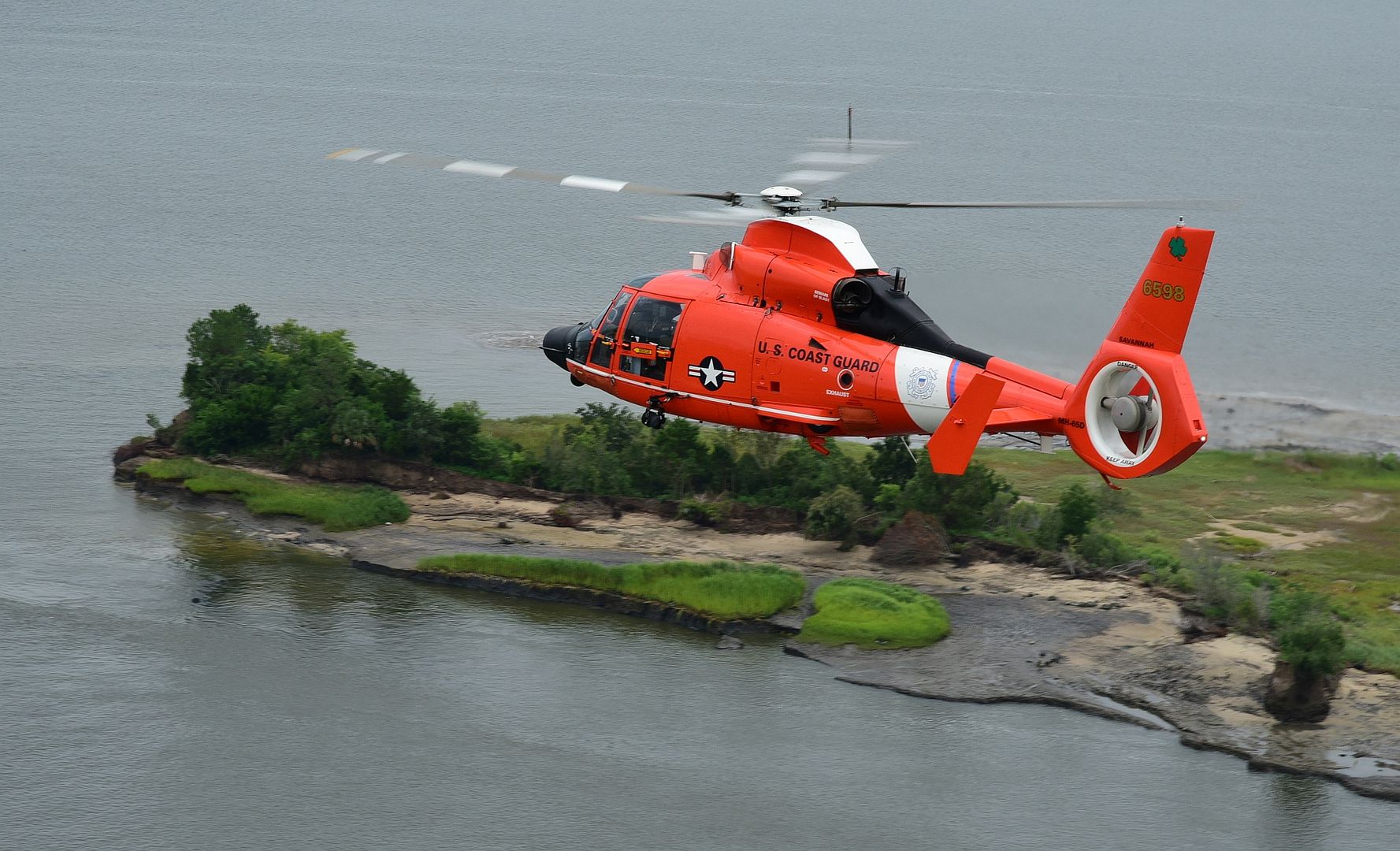
GULF OF OMAN (Aug. 8, 2021) An AV-8 Harrier, attached to Marine Medium Tiltrotor Squadron (VMM) 162 (Reinforced), takes off from the flight deck of the Wasp-class amphibious assault ship USS Iwo Jima (LHD 7), Aug. 8. Iwo Jima is deployed to the U.S. 5th Fleet area of operations in support of naval operations to ensure maritime stability and security in the Central Region, connecting the Mediterranean and Pacific through the western Indian Ocean and three strategic choke points. (U.S. Navy photo by Mass Communication Specialist Seaman Isaac A. Rodriguez)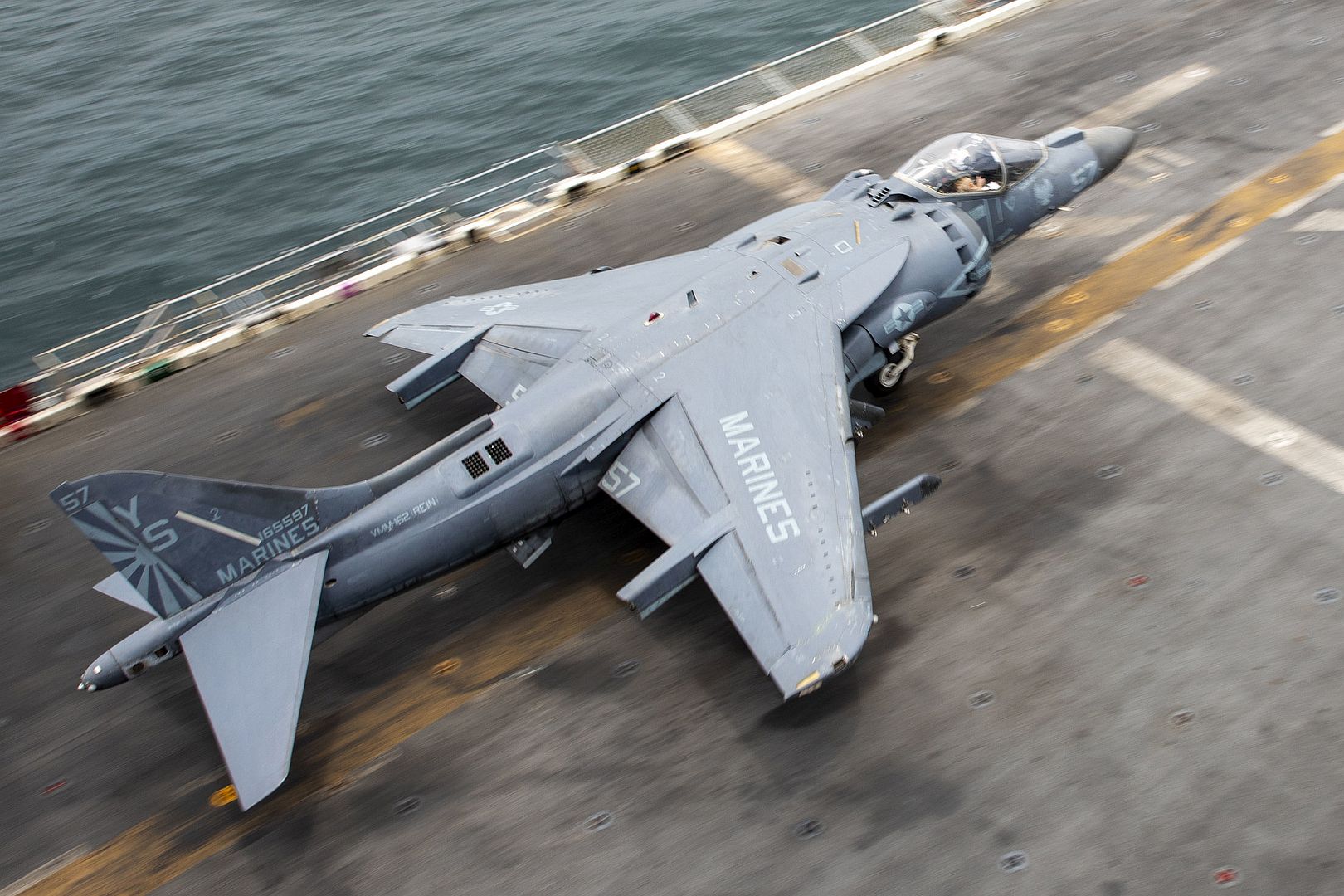
SOUTH CHINA SEA (July 29, 2021) An MH-60R from the "Pit Vipers" of Helicopter Support Maritime 75 conducted a cross deck operation to HMS Queen Elizabeth on 29 July, 2021. HMS Queen Elizabeth is the fleet flagship for the Royal Navy and the United Kingdom Carrier Strike Group which includes support from U.S. Navy Arleigh Burke guided-missile destroyer USS The Sullivans (DDG 68) and Marine Fighter Attack Squadron 21. This deployment highlights the global reach of the U.S. and UK armed forces and their interoperability and enhances both nations deterrence and defense capabilities. (U.S. Marine Corps photo by 1st Lt. Zachary Bodner)
-
 Main Admin08.09.2021.
Main Admin08.09.2021.
An F-16 Fighting Falcon assigned to the 148th Fighter Wing, Minnesota Air National Guard taxis at Volk Field Air National Guard Base, Wisconsin after a Northern Lightning 2021 training sortie. Northern Lightning is a tactical-level joint training exercise featuring 4th and 5th generation assets from the Air National Guard, U.S. Air Force, Navy and Marines. (U.S. Air National Guard photo by Audra Flanagan)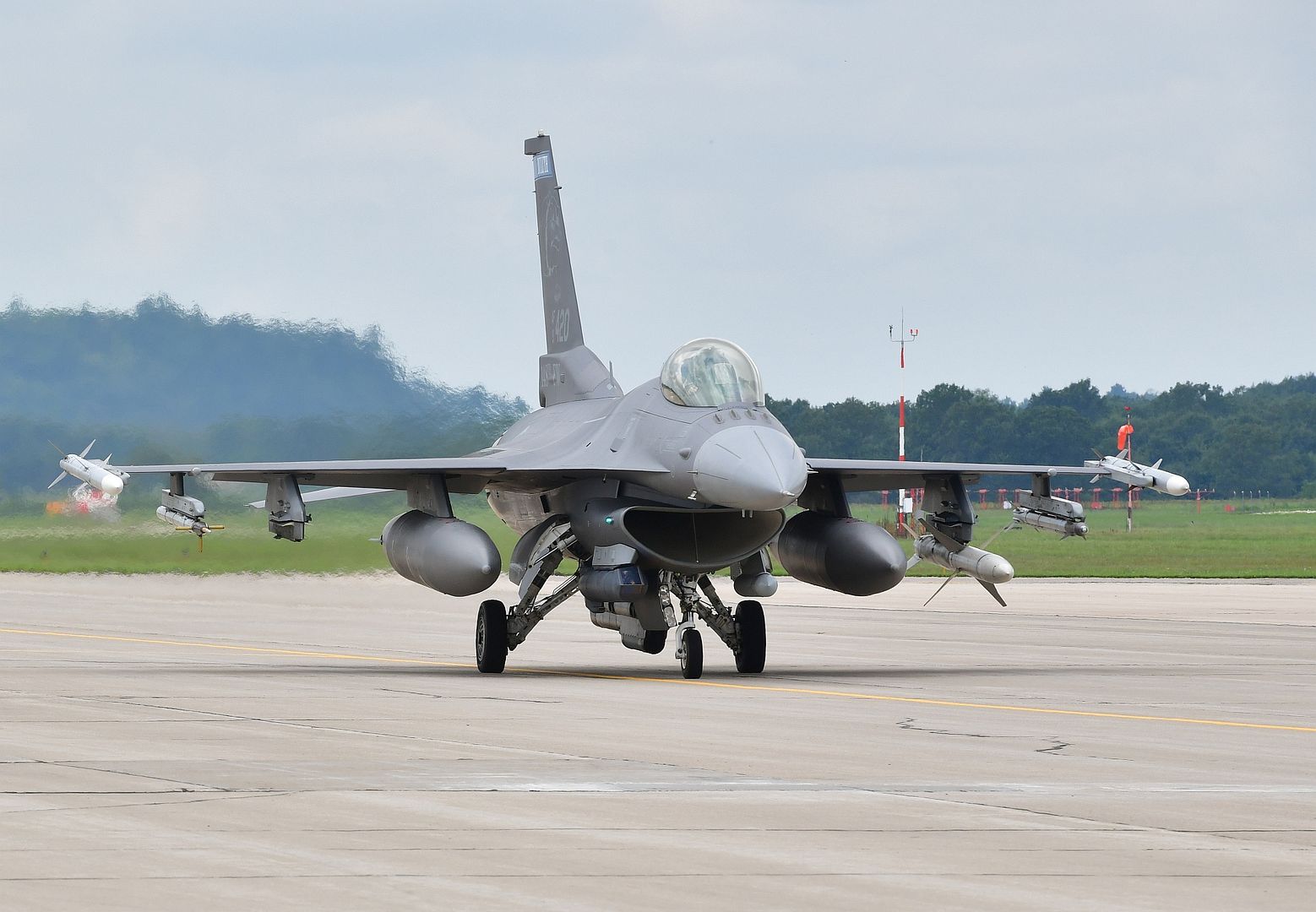
114th Aircraft Maintenance crew chiefs and 114th Fighter Wing pilots go through launch procedures during the readiness exercise Aug. 9, 2021, Joe Foss Field, S.D. The readiness exercise is designed to enhance the warfighter ethos of mission-type orders, independent decision making, and risk management at the lowest competent level by testing the 114th Fighter Wing’s ability to set up an alert sight and generate combat airpower on short notice. (U.S. Air National Guard photo by Tech. Sgt. Duane Duimstra)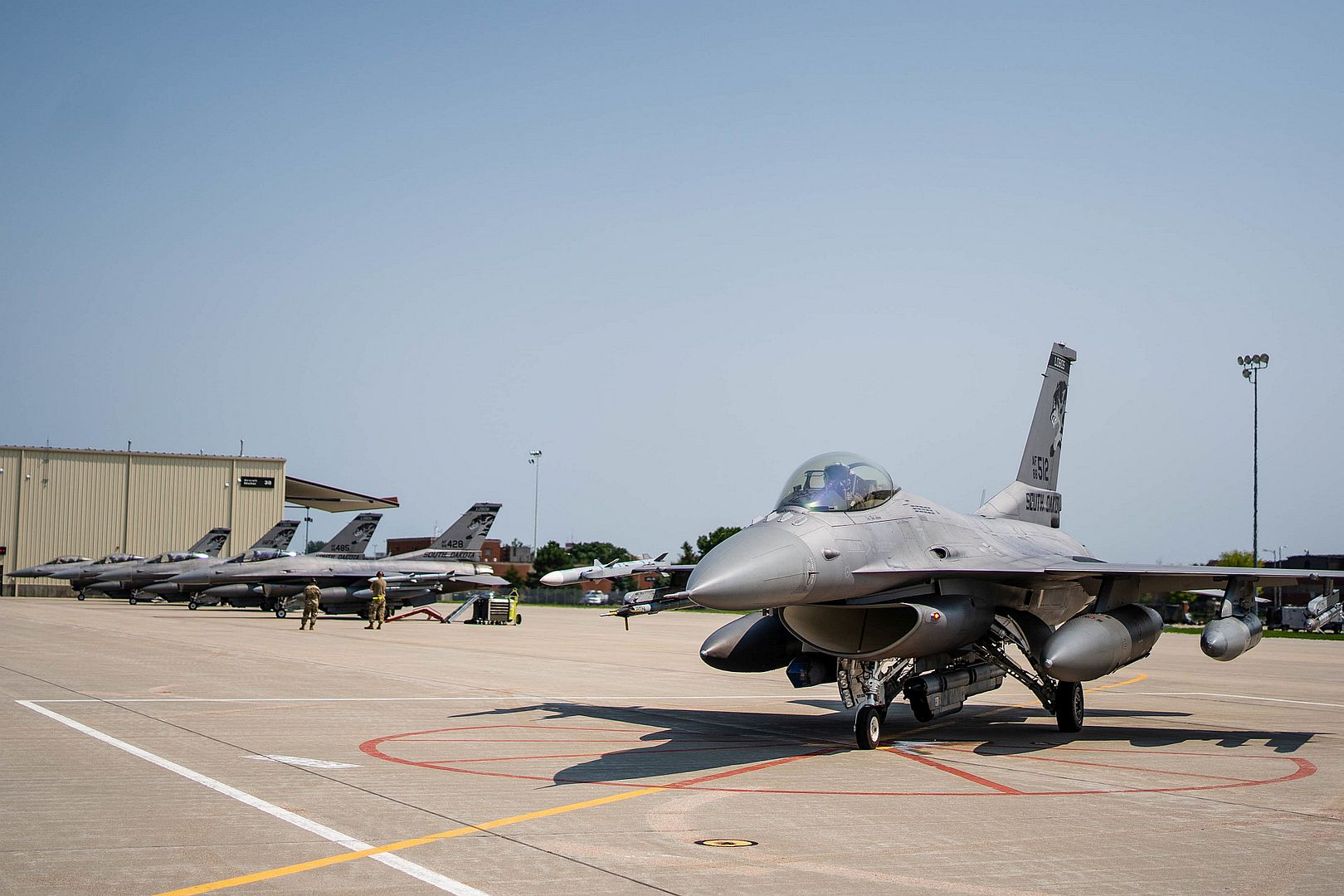
ARABIAN SEA (Aug. 9, 2021) – An F/A-18F Super Hornet fighter jet, attached to the “Diamondbacks” of Strike Fighter Squadron (VFA) 102, prepares to land on the flight deck of aircraft carrier USS Ronald Reagan (CVN 76) in the Arabian Sea, Aug. 9. Ronald Reagan is deployed to the U.S. 5th Fleet area of operations in support of naval operations to ensure maritime stability and security in the Central Region, connecting the Mediterranean and Pacific through the western Indian Ocean and three strategic choke points. (U.S. Navy photo by Mass Communication Specialist 2nd Class Quinton A. Lee)_102_prepares_to_land_on_the_flight_deck_of_aircraft_carrier_USS_Ronald_Reagan.jpg?width=1920&height=1080&fit=bounds)
Sniper competitors prepare to fire from a UH-72 Lakota helicopter during the Mogadishu event of the 2021 European Best Sniper Team Competition August 9, 2021 on Hohenfels Training Area, Hohenfels, Germany. The 2021 EBSTC is a U.S. Army Europe and Africa-directed, 7th Army Training Command hosted contest of skill that includes 14 participating NATO allies and partner nations at 7th ATC's Hohenfels Training Area, August 8-14. The EBSTC is designed to improve professionalism and enhance esprit de corps. (U.S. Army photos by Master Sgt. Ryan C. Matson)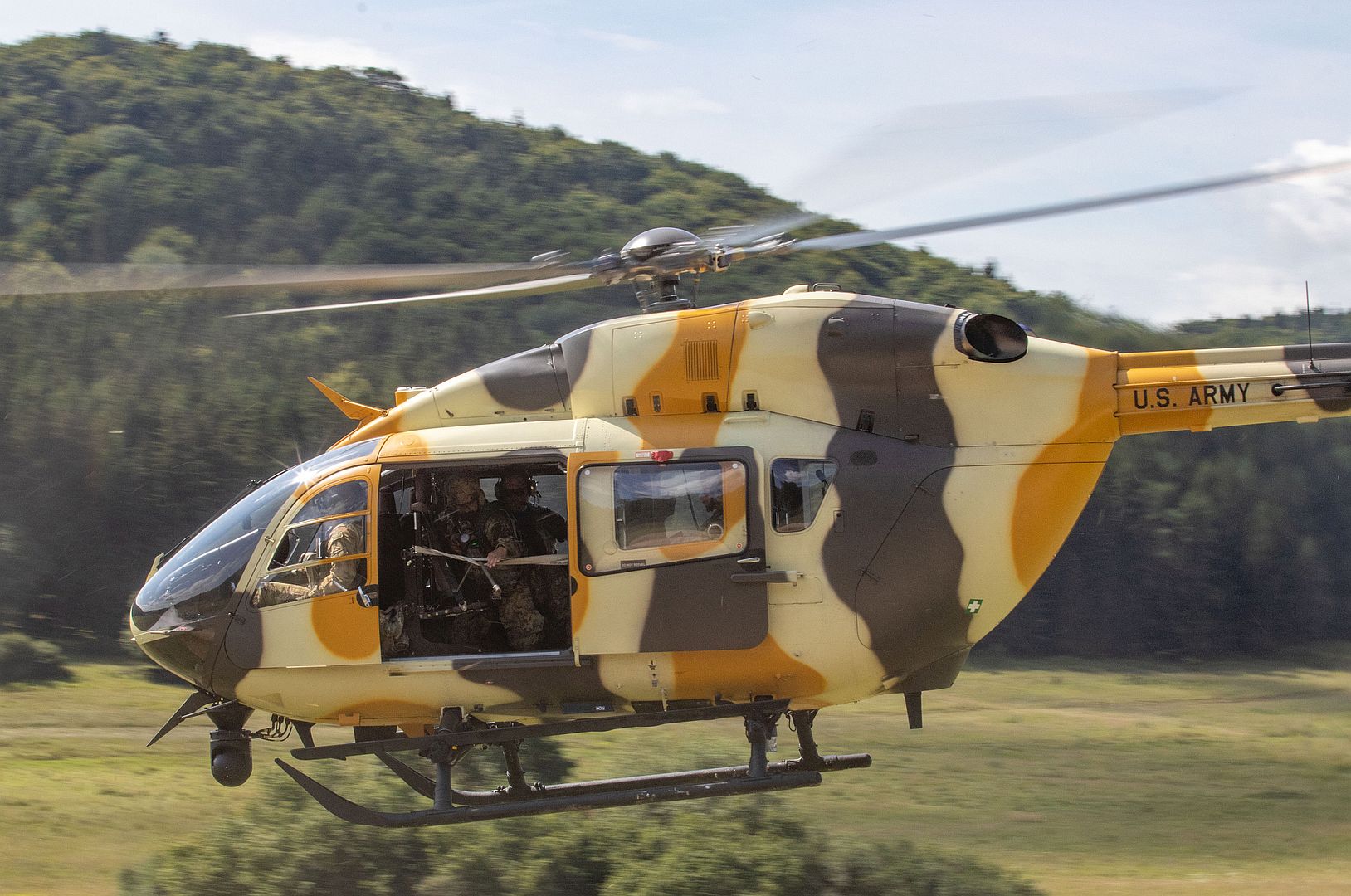
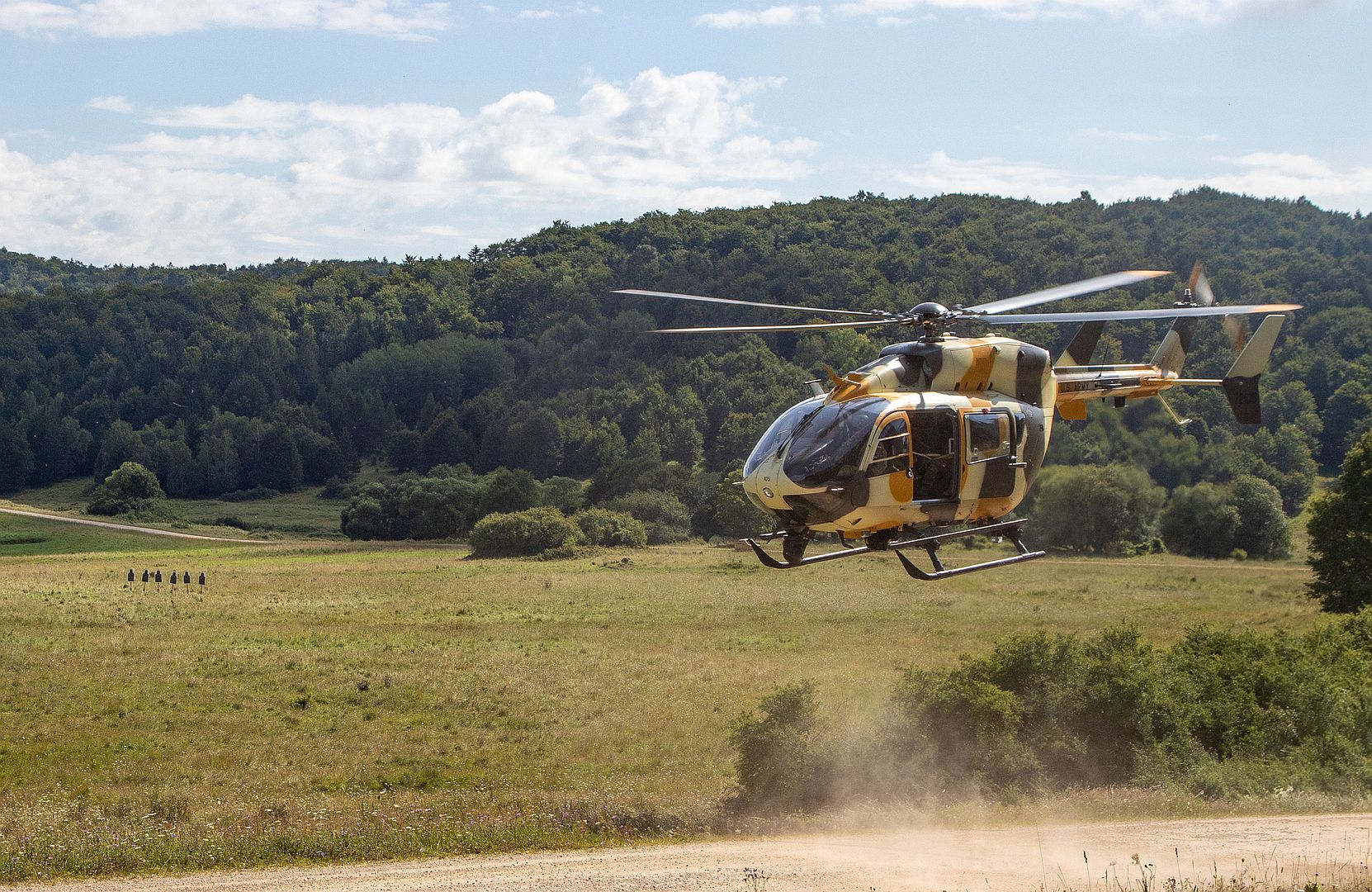
B-52H Stratofortress assigned to the 2nd Bomb Wing at Barksdale, Louisiana taxis prior to take-off for a night training mission during Red Flag-Nellis 21-3 at Nellis Air Force Base, Nevada, Aug. 2, 2021. During RF 21-3, the 414th Combat Training Squadron works hand-in-hand with the 64th AGRS to create agile problem-solvers, who are capable of correct decision-making under incredible pressure from joint partners from the U.S. Air Force, Navy, Marines, Space Force, Air National Guard and U.S. Air Force Reserves. (U.S. Air Force photo by Tech. Sgt. Alexandre Montes)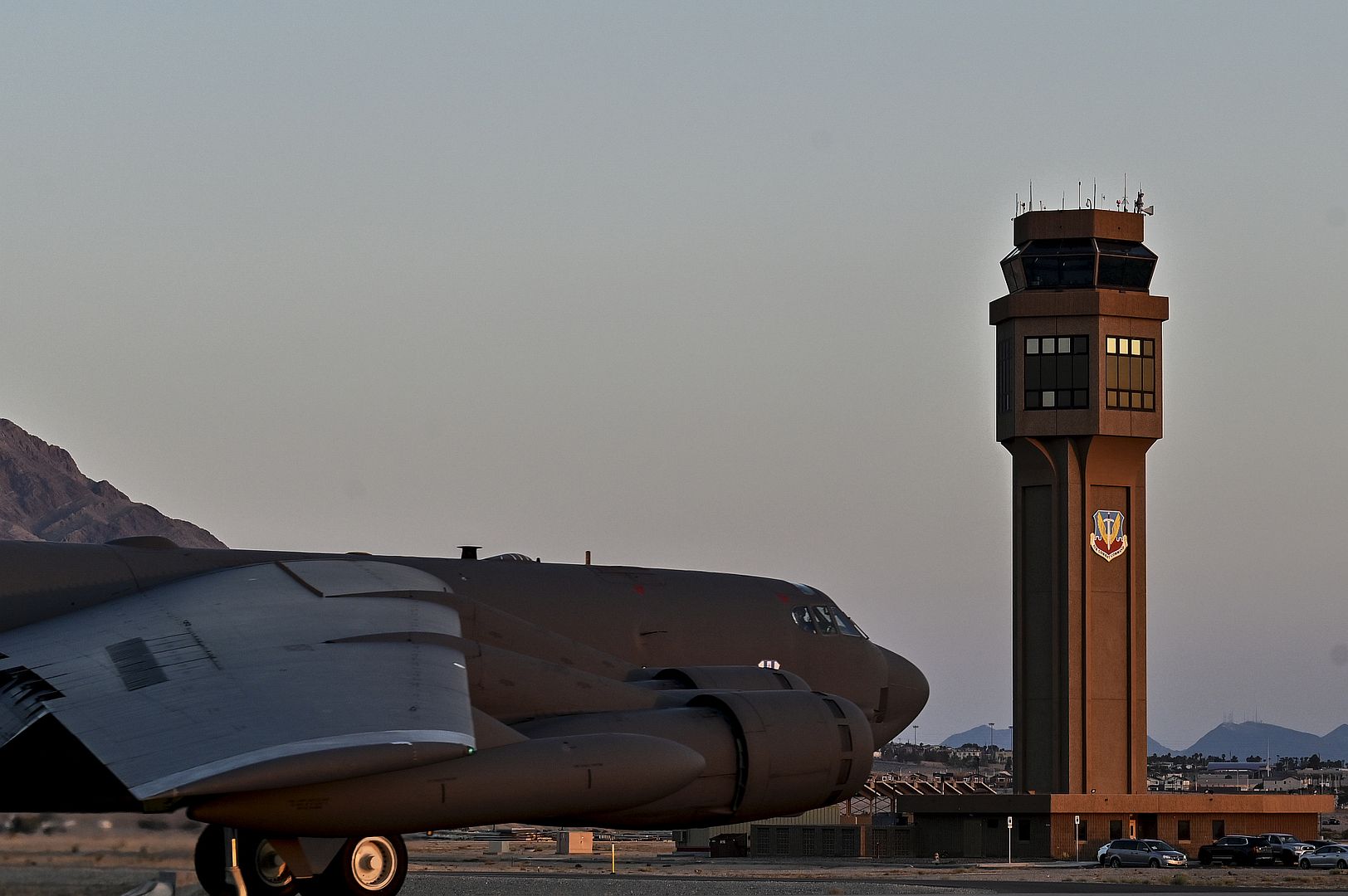
A B-52H Stratofortress begins to taxi for take-off during Red Flag 21-3 at Nellis Air Force Base, Nevada, Aug. 4, 2021. There are typically three iterations of Red Flag annually, to include U.S. only and with Allies and Partners. The training occurs at Nellis Air Force Base, Nevada on the Nevada Test and Training Range, the U.S. Air Force’s premier military training area with more than 12,000 square miles of airspace and 2.9 million acres of land. Nellis is the last stop before warfighters meet adversaries on the battlefield. (U.S. Air Force photos by Tech. Sgt. Alexandre Montes)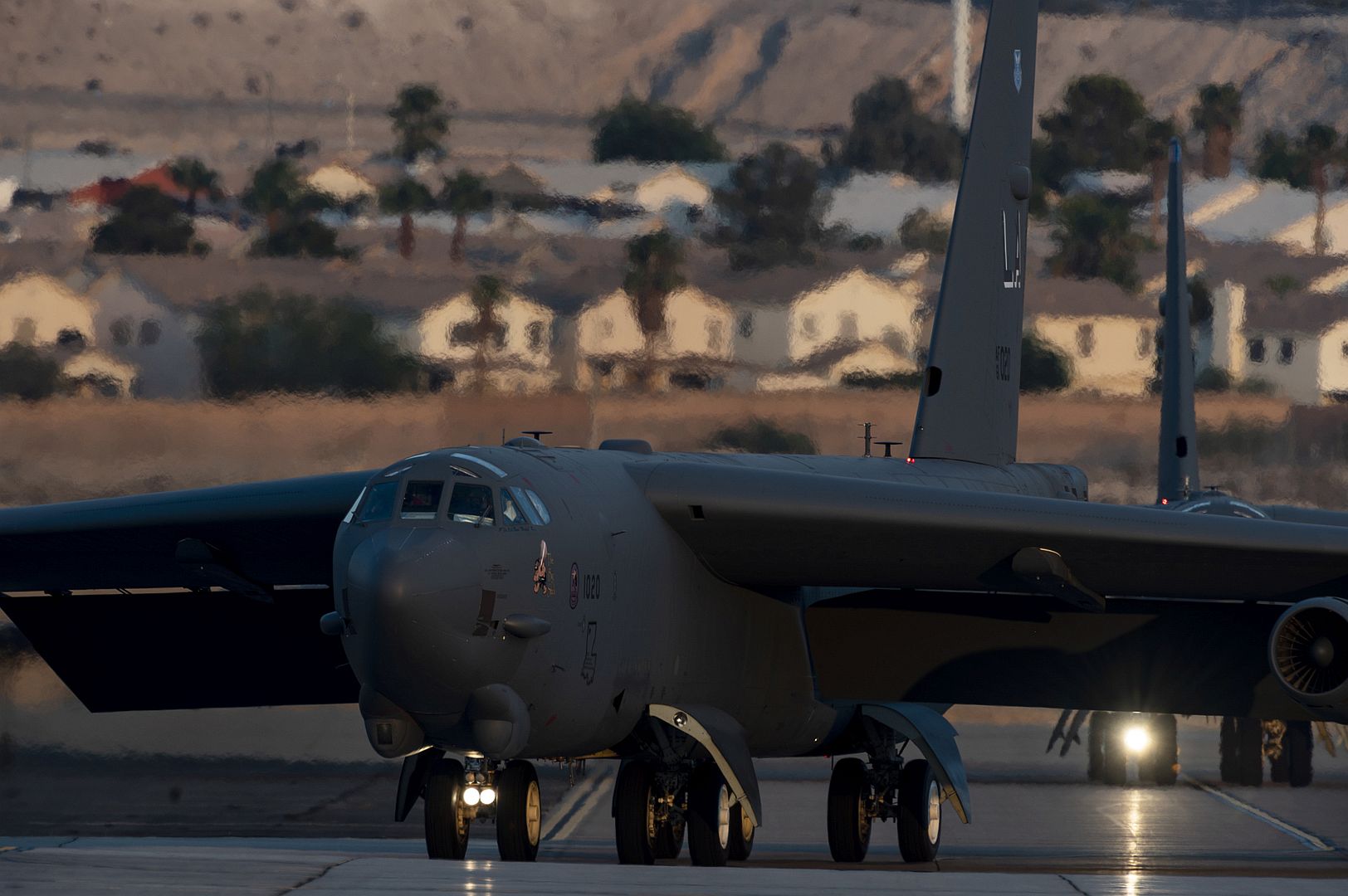
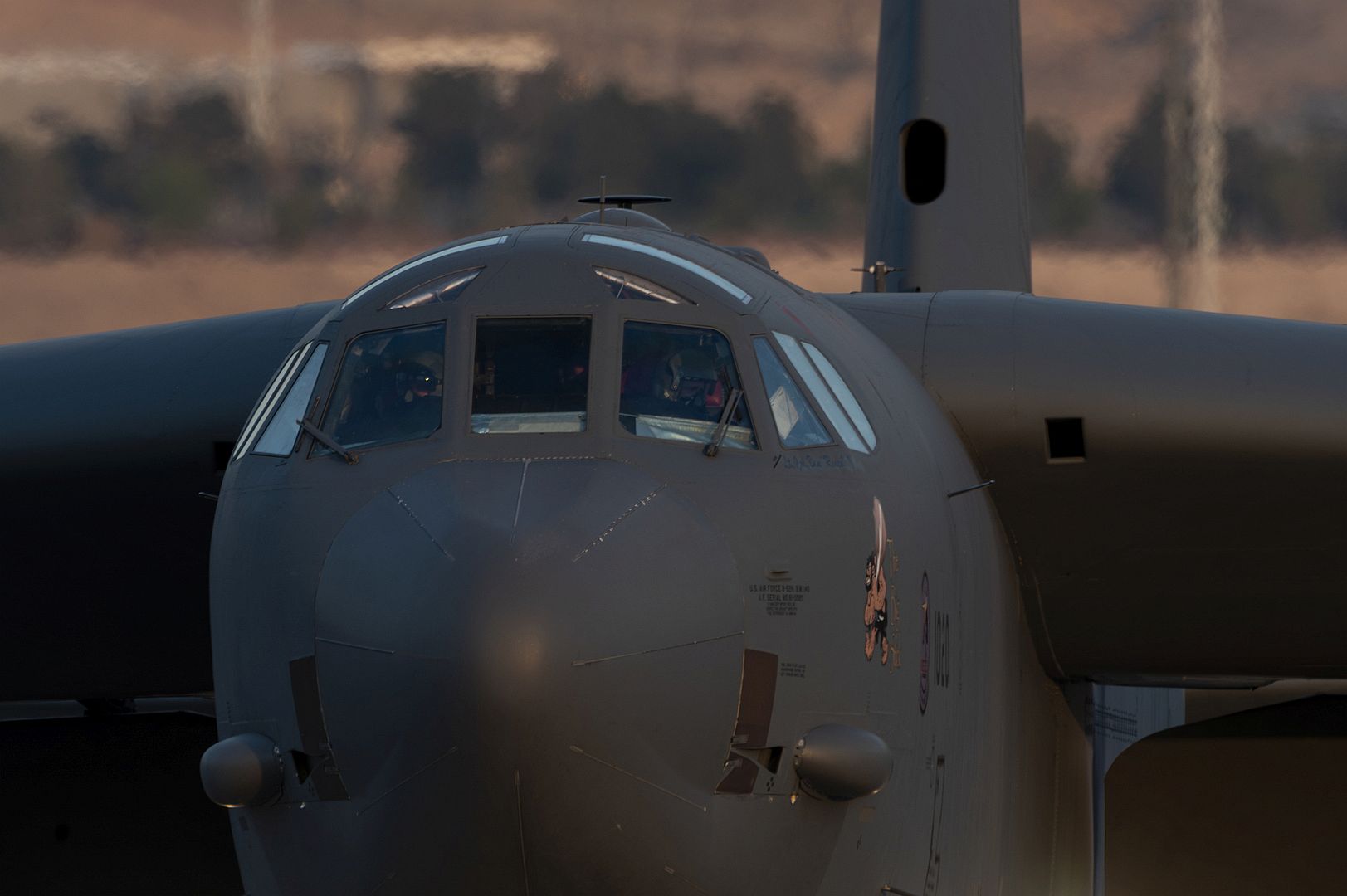
Pilots inside a E/A-18G Growler assigned to the Electronic Attack Squadron (VAQ) 138 at Naval Air Station Whidbey Island, Washington, perform pre-flight inspections before participating in night-training missions during Red Flag-Nellis 21-3 at Nellis Air Force Base, Nevada, Aug. 4, 2021. (U.S. Air Force photo by Tech. Sgt. Alexandre Montes)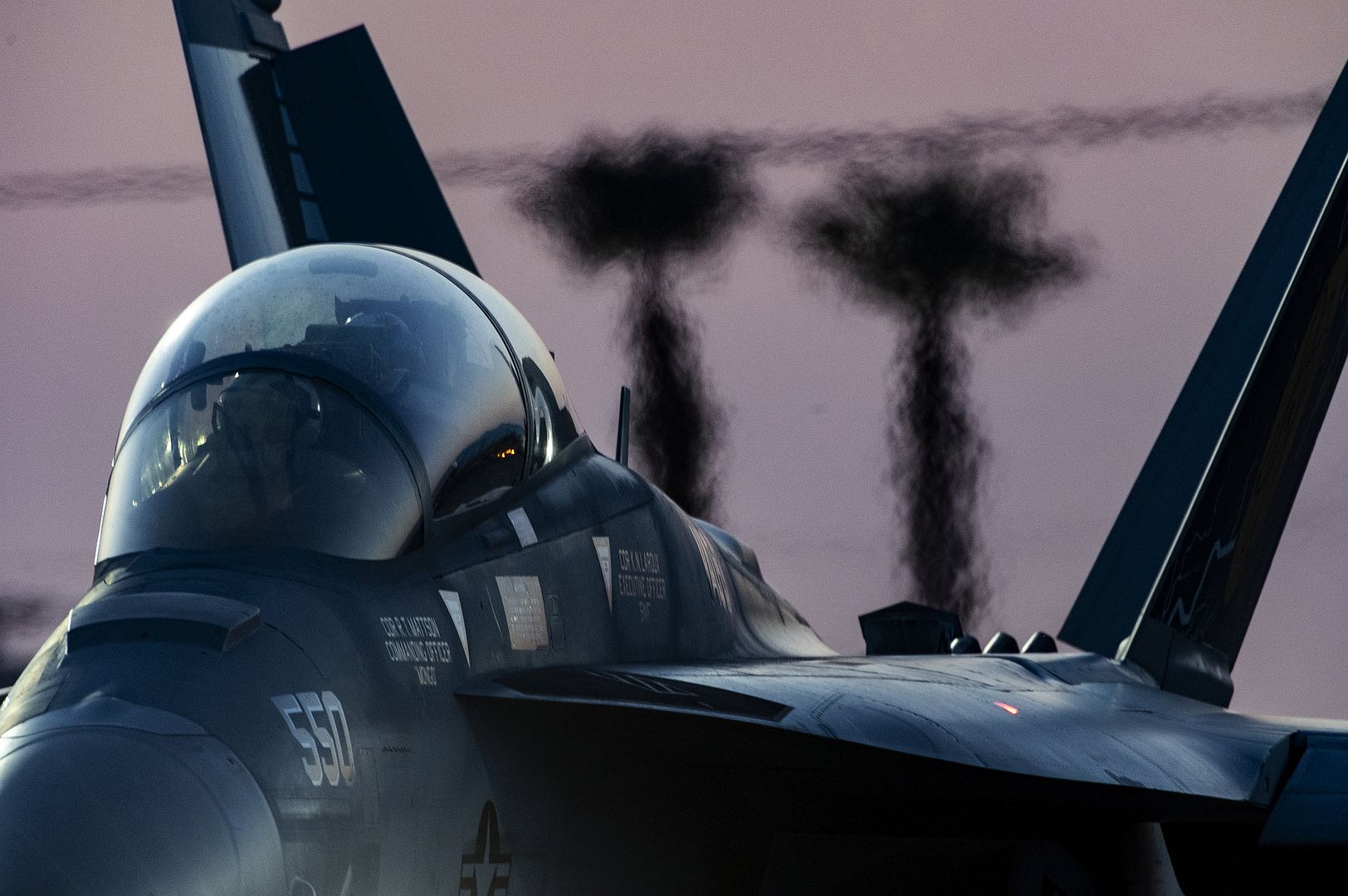
An F-22 Raptor assigned to the U.S. Air Force Weapons School is taxied for take-off to participate in night training missions during Red Flag-Nellis 21-3 at Nellis Air Force Base, Nevada Aug. 4, 2021. The 414th Combat Training Squadron conducts Red Flag exercises to provide aircrews the experience of multiple, intensive air combat sorties in the safety of a training environment. There are typically three iterations of Red Flag annually, to include U.S. only and with Allies and Partners. (U.S. Air Force photo by Tech. Sgt. Alexandre Montes)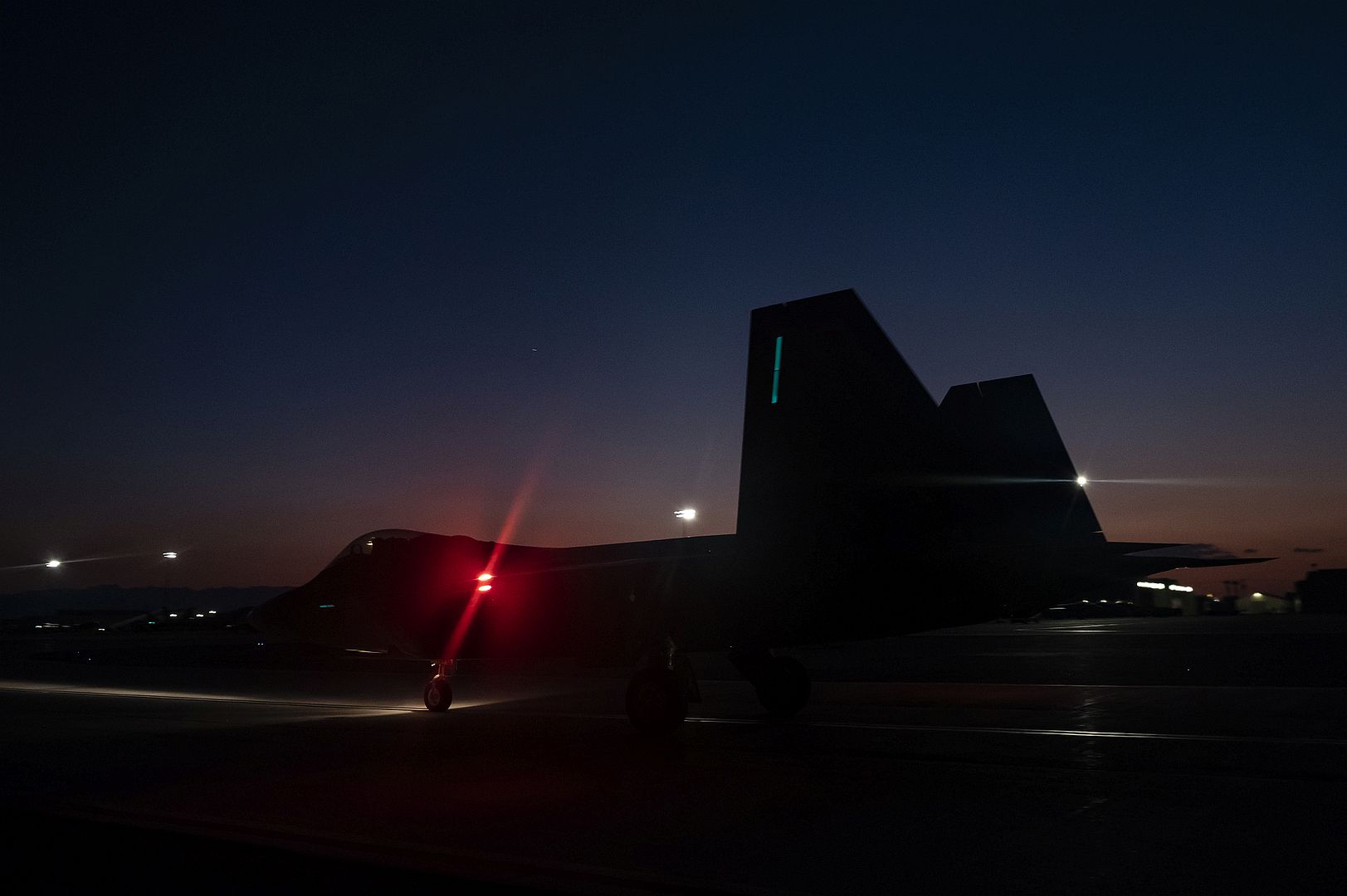
Two F-22 Raptors assigned to the 1st Fighter Wing, Langley Air Force Base, Virginia, line up prior to take-off for a night-training mission during Red Flag-Nellis 21-3 at Nellis Air Force Base, Nevada, Aug. 4, 2021. The 1st FW hosted RF-Nellis 21-3 as the lead wing with nearly 100 aircraft, such as the F-35, F-35, F-22, F-16CJ, F-16C, EC-130H, EA-18G, B-52, B-2, F/A-18 C/D, MQ-9, E-3, E-8, RC-135, RQ-4B30, RQ-4B40, U-2, HH-60, HC-130, KC-135 and KC-46, that participated in complex-mission scenarios against aggressor forces. (U.S. Air Force photo by Tech. Sgt. Alexandre Montes)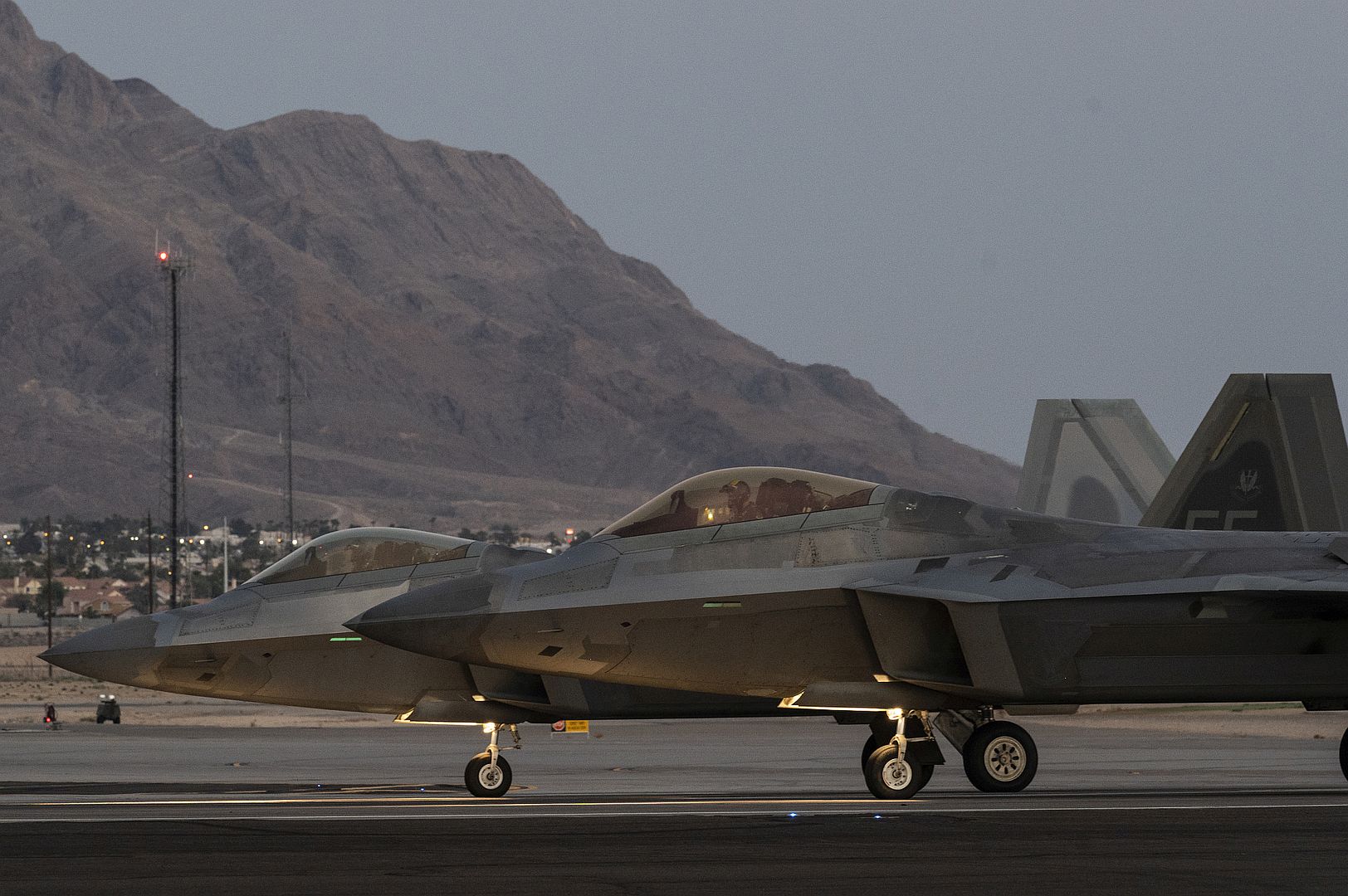
PACIFIC OCEAN (Aug. 4, 2021) An F/A-18E Super Hornet assigned to the "Stingers" of Strike Fighter Squadron (VFA) 113 conducts night flight operations aboard the aircraft carrier USS Carl Vinson (CVN 70) in the Pacific Ocean, Aug. 4, 2021. The Carl Vinson Carrier Strike Group, led by Carrier Strike Group 1, is deployed in support of global maritime security operations. (U.S. Navy photo by Mass Communication Specialist 3rd Class Tyler Wheaton)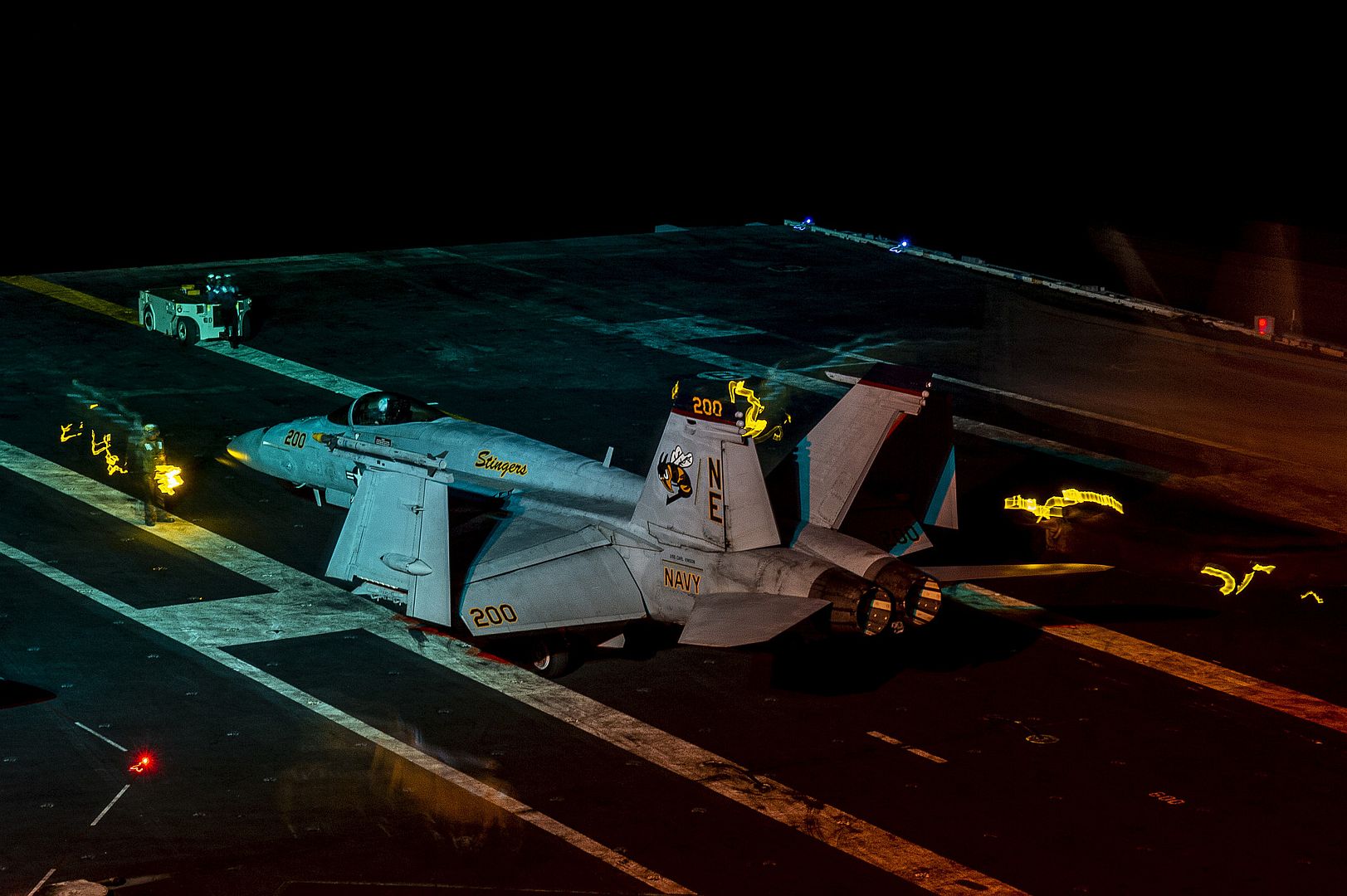
10.08.2021
At the end of the main stage of the exercise, servicemen of motorized rifle units of Russia, Tajikistan and Uzbekistan, with the support of artillery and aviation, defeated mock illegal armed formation that crossed the state border in southern Tajikistan.
The participants of the exercise practiced joint maneuvering actions on difficult terrain, deploying a communications and command system, and interaction of subunits in a single operational environment.
More than 2.5 thousand servicemen and about 500 units of military equipment of the armed forces of Russia, Tajikistan and Uzbekistan are involved in the joint exercise.
The basis of the Russian military contingent will be the units of the 201st military base, including mountain motorized rifle, tank, artillery units, as well as groups of a special separate special purpose unit of the Central Military District. In total, about 1.8 thousand servicemen and more than 420 pieces of weapons and military equipment were involved in the exercises.
(Photo courtesy of the Ministry of Defence of the Russian Federation)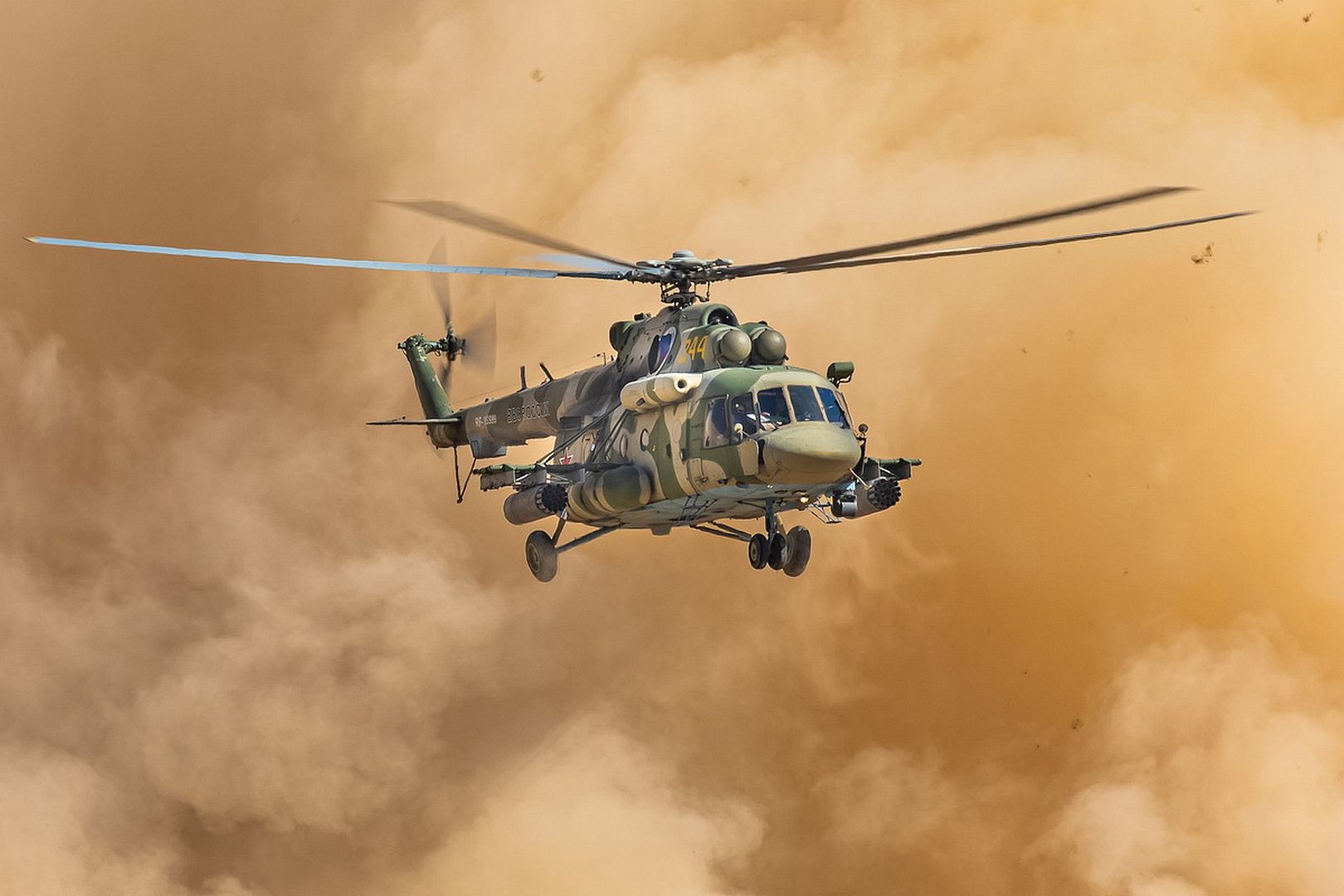
08.05.2021
85 TES F-15C fires first IRST-cued AMRAAM
An F-15C Eagle from the 85th Test and Evaluation Squadron, showcasing Lockheed Martin’s Legion Pod IRST Block 1.5 system. The legion pod equips the aircraft with the ability to collaborate with the AIM-120 missile to successfully intercept a target and close kill chains. (U.S. Air Force photos by 1st Lt Lindsey Heflin)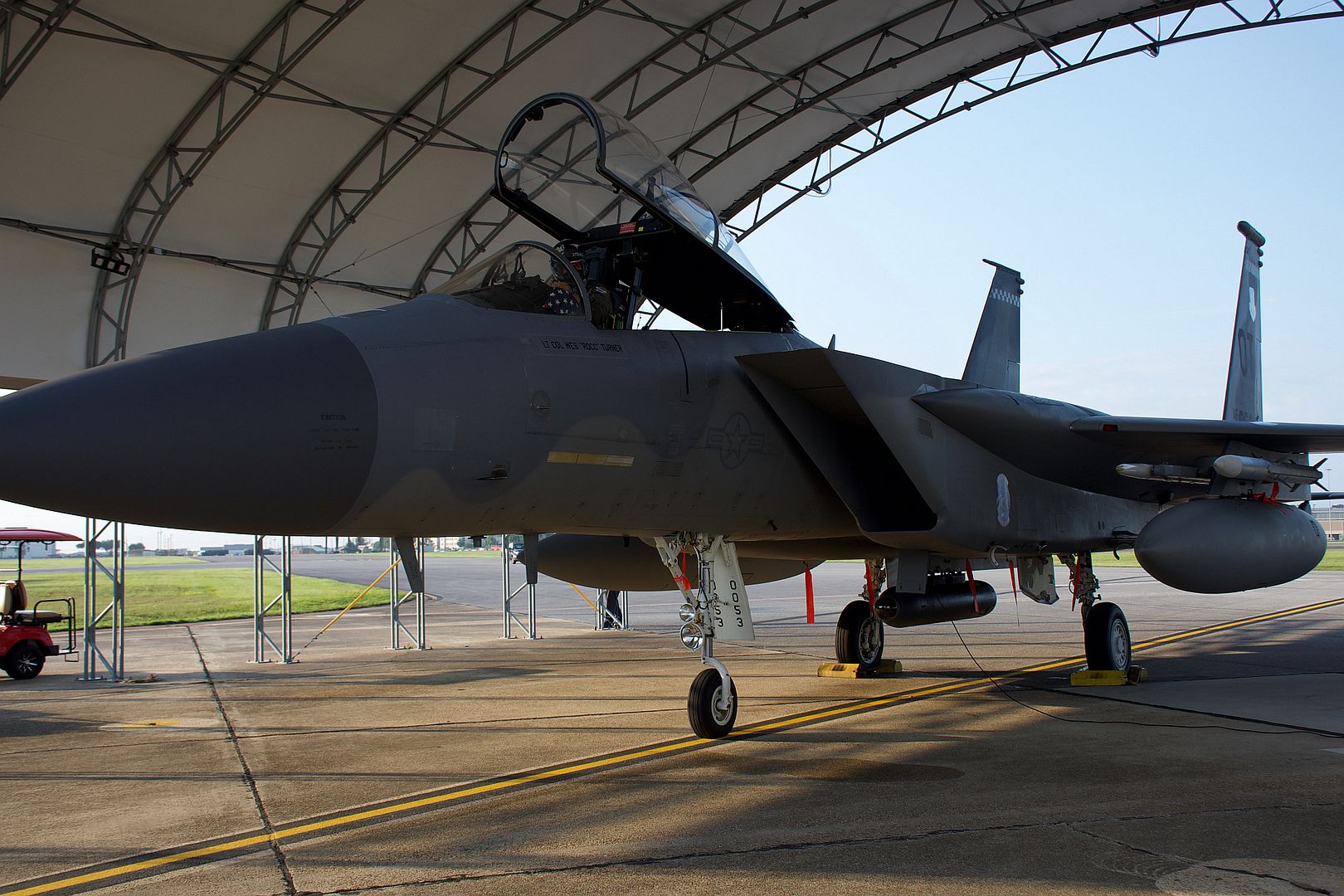
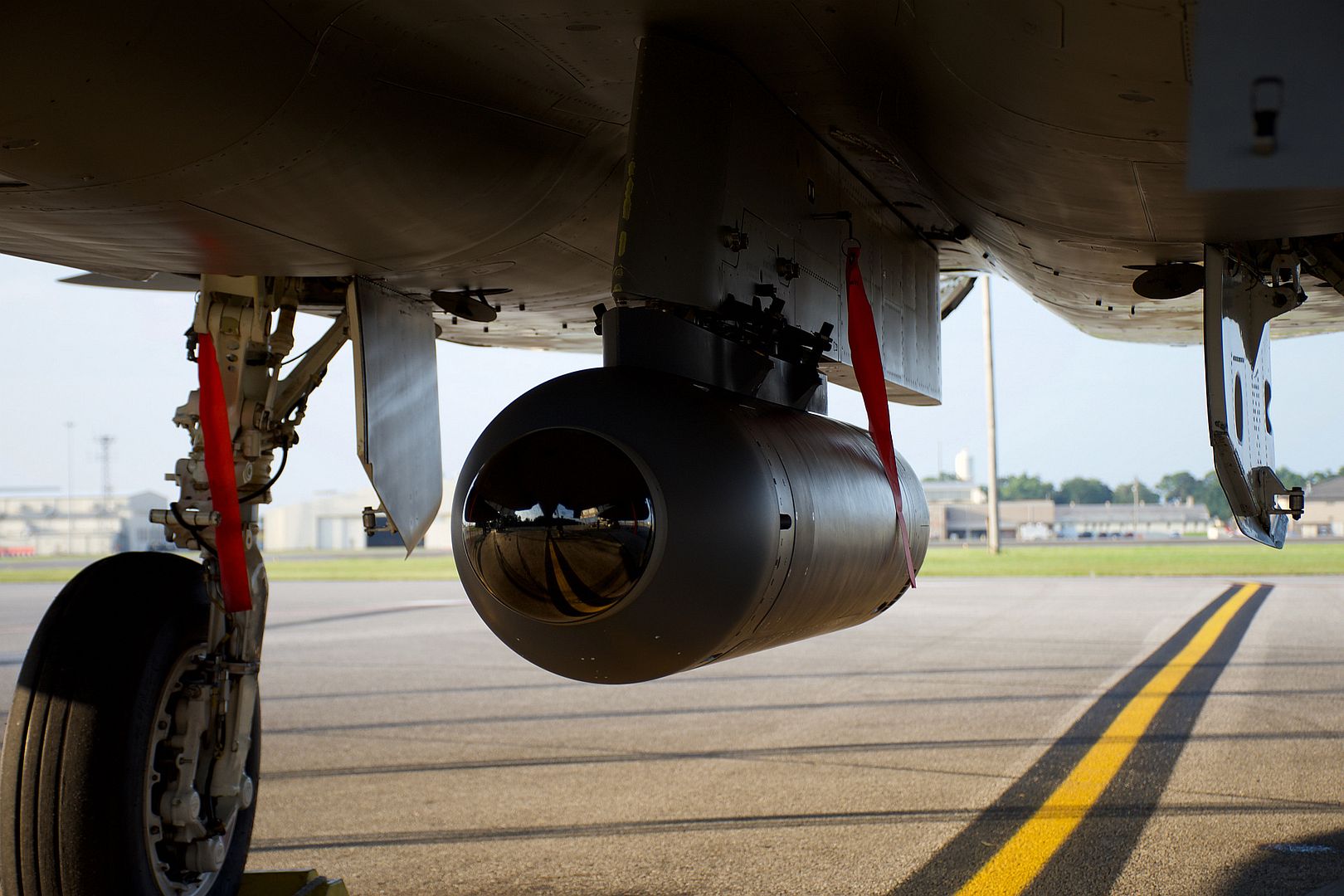
RENTON, Wash., Aug. 10, 2021 – The first of five Boeing [NYSE: BA] P-8A Poseidon aircraft for Norway performed its maiden flight yesterday, Aug. 9. The aircraft took off at 10:03 a.m. Pacific time and flew for 2 hours, 24 minutes, reaching a maximum altitude of 41,000 feet during the flight from Renton Municipal Airport to Boeing Field in Seattle.
The first flight marks the next phase of the production cycle of this aircraft as it is moved to the Installation and Checkout facility, where mission systems will be installed and additional testing will take place before final delivery to the Norwegian Defence Materiel Agency (NDMA) later this year.
“This inaugural flight is an important milestone for Norway, and the Boeing team remains committed to delivering the P-8 fleet to the NDMA on schedule,” said Christian Thomsen, P-8 Europe program manager. “The P-8 is a capability that will help Norway improve anti-submarine warfare, anti-surface warfare, intelligence, surveillance and reconnaissance, and search-and-rescue missions, in addition to fostering valuable regional collaboration and interoperability with NATO nations.”
The five P-8As will eventually replace Norway’s current fleet of six P-3 Orions and three DA-20 Jet Falcons. The Royal Norwegian Air Force currently operates its P-3s from Andoya Air Station. With the introduction of the P-8s, flight operations will move to new facilities at Evenes Air Station.
To date, Boeing has delivered 136 P-8 aircraft to the U.S. Navy, the Royal Australian Air Force, the Indian Navy and the United Kingdom’s Royal Air Force. Norway is one of eight nations that have selected the P-8A as their maritime patrol aircraft, along with the United States, India, Australia, the United Kingdom, Korea, New Zealand and Germany.
SkyWest Airlines Orders 16 New E175 Aircraft for Operation with Delta Air Lines
São José dos Campos, Brazil, August 9, 2021 – Embraer has agreed the sale of 16 new E175 jets to SkyWest, Inc. (NASDAQ: SKYW) for operation in the Delta Air Lines (NYSE: DAL) network, adding to the 71 E175 jets SkyWest already operates for Delta. The E175 aircraft will fly exclusively with Delta under a Capacity Purchase Agreement (CPA). The value of the contract, which will be included in Embraer’s third quarter backlog, is USD 798.4 million, based on list price.
The 76-seat aircraft will be delivered in Delta’s livery and will have a three-class configuration. Deliveries start in mid-2022.
President and CEO of SkyWest, Chip Childs, said, “SkyWest operates more E175s than any other carrier in the world. With these aircraft, we will have nearly 240 E175s operating with airlines in North America. This month we are proud to reach two million flight hours in the E175. Our customers love the E175, and we have great confidence in and appreciate our partnership with Embraer.”
Mark Neely, VP Sales and Marketing, The Americas, Embraer Commercial Aviation, said, “Our superb partnership with SkyWest continues with this new provision for Delta. The E175 is the backbone of the North American regional market, and as the industry begins to emerge from the pandemic we are seeing growing long-term demand for rightsized aircraft to deliver profitable domestic connectivity. The E175 has been a lifeline for carriers as they are perfectly suited to rebuild routes, add frequencies, and add incremental capacity to meet rebounding domestic demand.”
-
 Main AdminA U.S. Air Force F-22 Raptor assigned to the 525th Fighter Squadron, 3rd Wing, Joint Base Elmendorf-Richardson, Alaska, takes off at Andersen Air Force Base, Guam, Aug. 9, 2021. Approximately 800 Airmen and 35 aircraft participated in Pacific Air Forces’ Dynamic Force Employment operation in Guam and Tinian. The operation focused on projecting forces into the U.S. Indo-Pacific Command’s area of responsibility in support of the 2018 National Defense Strategy, calling on the military to be a more lethal, adaptive and resilient force. (U.S. Air Force photo by Master Sgt. Richard P. Ebensberger)
Main AdminA U.S. Air Force F-22 Raptor assigned to the 525th Fighter Squadron, 3rd Wing, Joint Base Elmendorf-Richardson, Alaska, takes off at Andersen Air Force Base, Guam, Aug. 9, 2021. Approximately 800 Airmen and 35 aircraft participated in Pacific Air Forces’ Dynamic Force Employment operation in Guam and Tinian. The operation focused on projecting forces into the U.S. Indo-Pacific Command’s area of responsibility in support of the 2018 National Defense Strategy, calling on the military to be a more lethal, adaptive and resilient force. (U.S. Air Force photo by Master Sgt. Richard P. Ebensberger)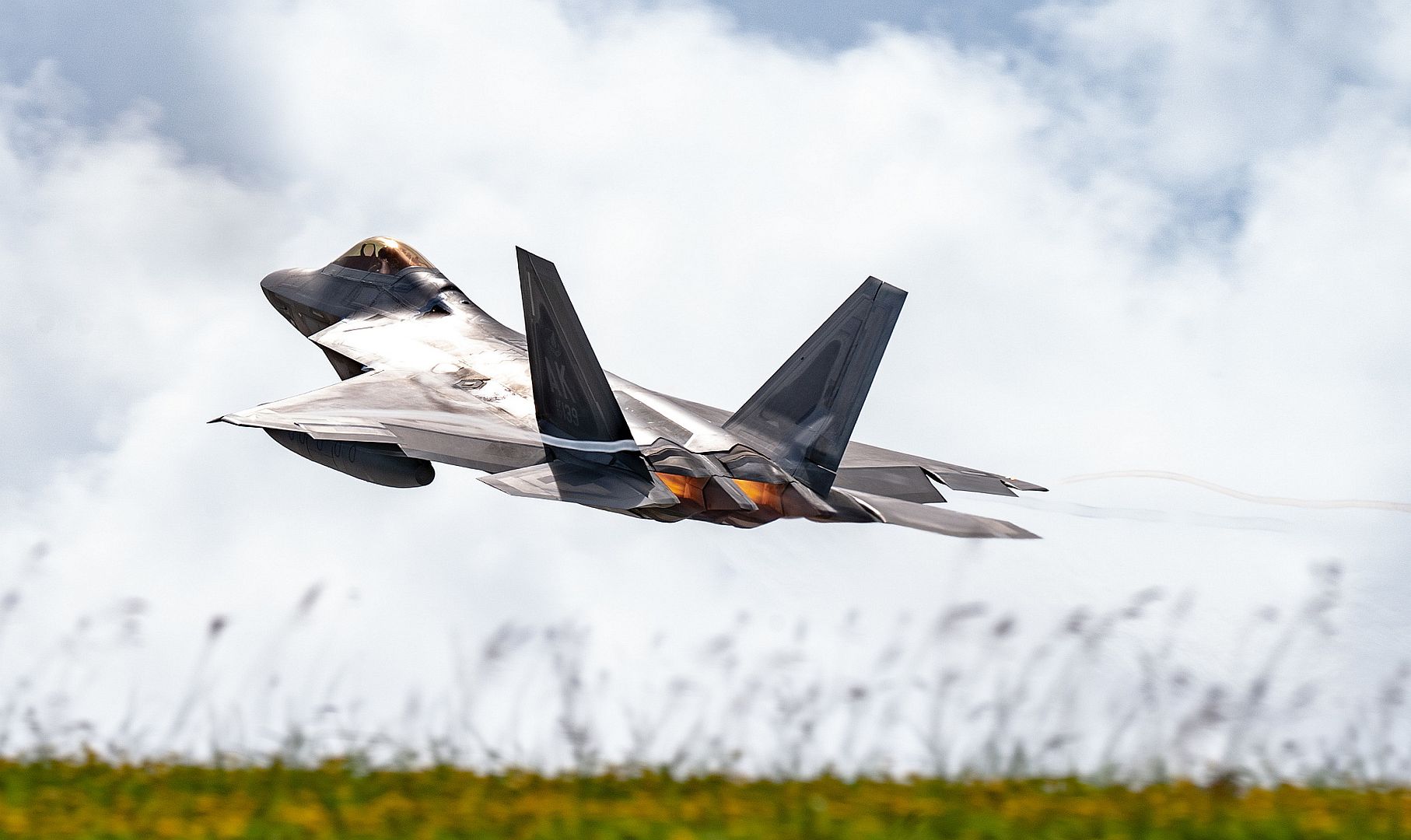
U.S. Marine Corps members of Marine Attack Squadron 542 from Marine Corps Air Station Cherry Point, North Carolina, quickly remove munitions from a Harrier jet during Northern Strike (NS) at the Alpena Combat Readiness Training Center, Michigan on Aug. 9, 2021. NS is an opportunity to build readiness and interoperability with many different units and multinational partners while training in realistic multi-domain environments. (U.S. Air National Guard photos by Senior Airman Ryan Bishop)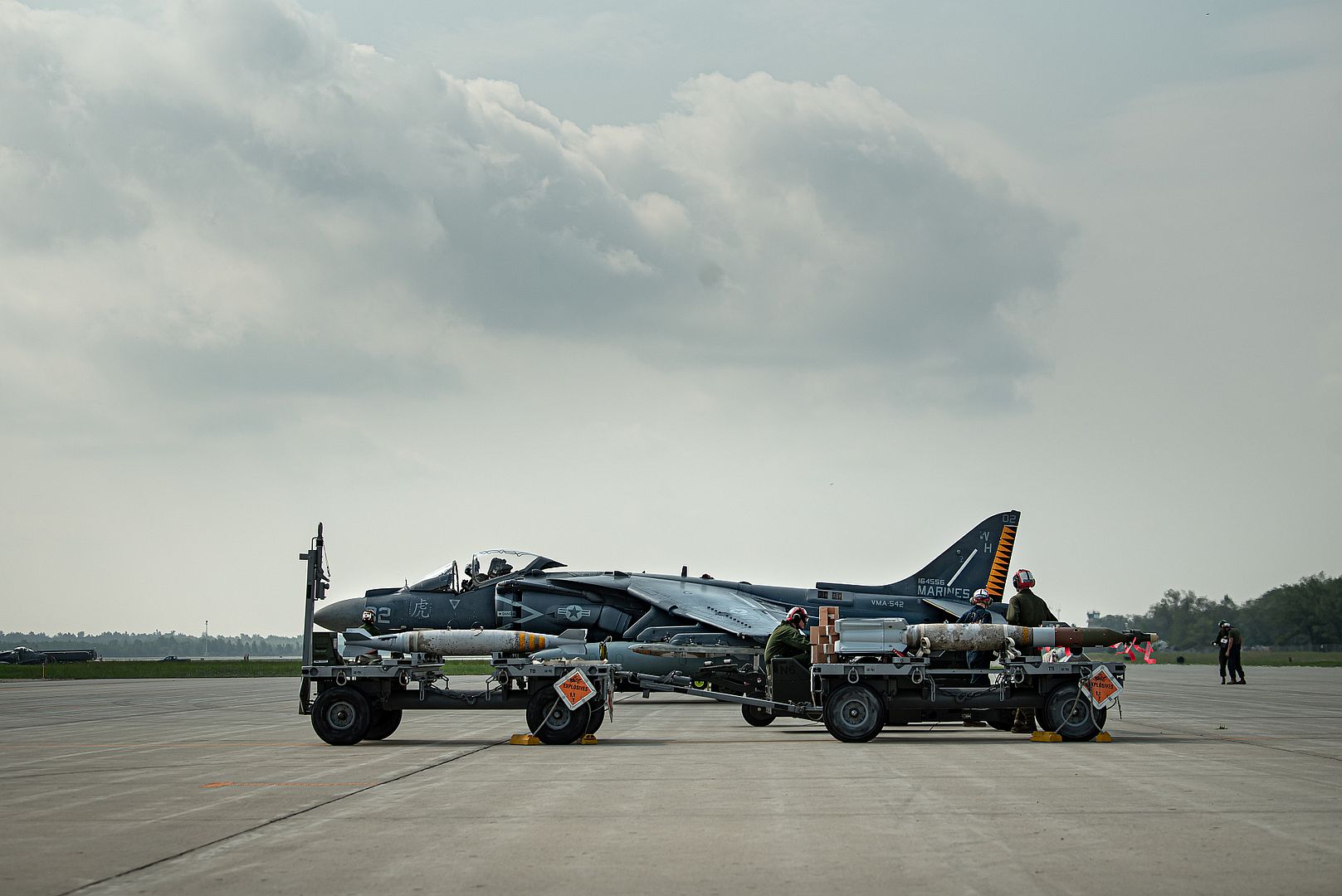
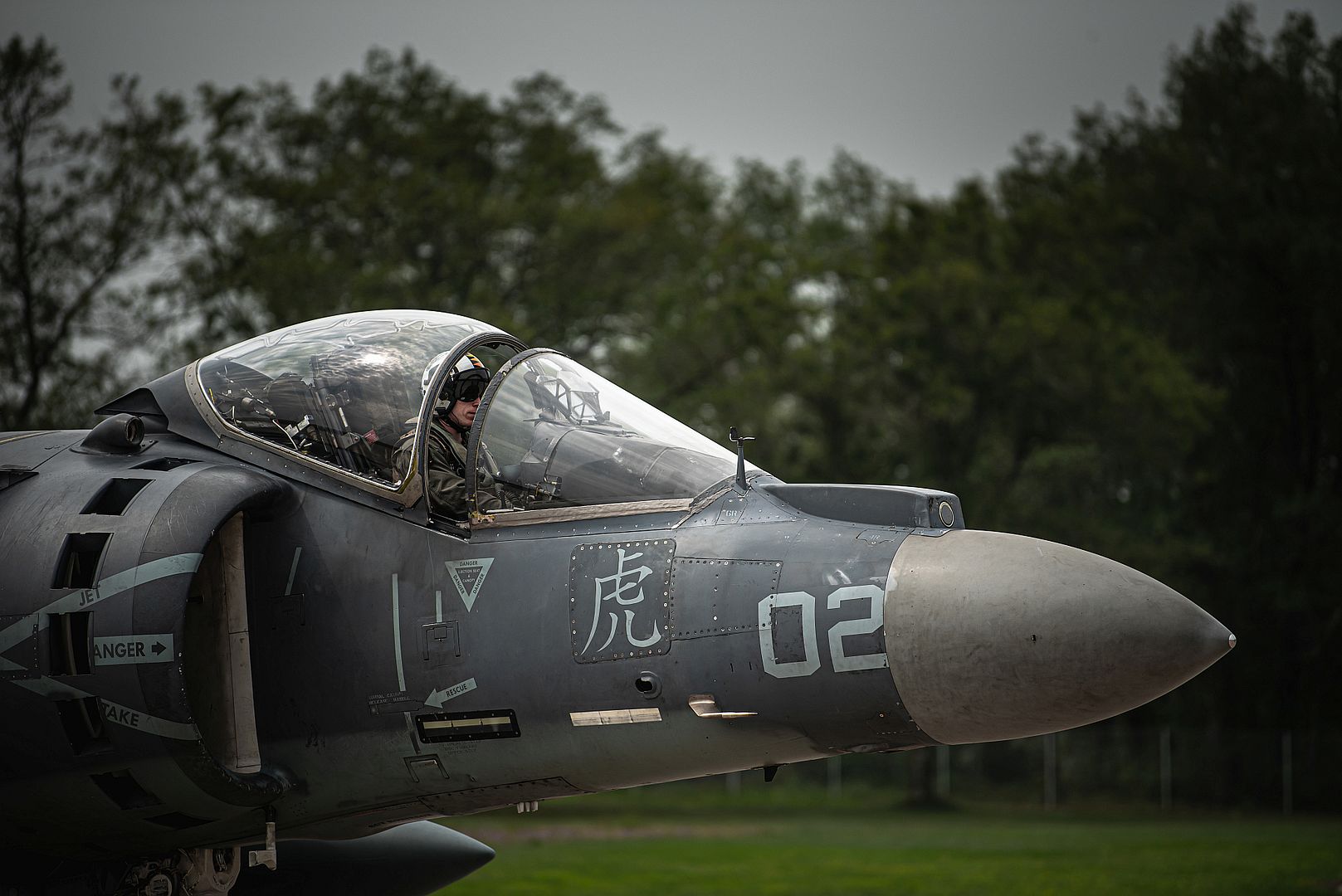
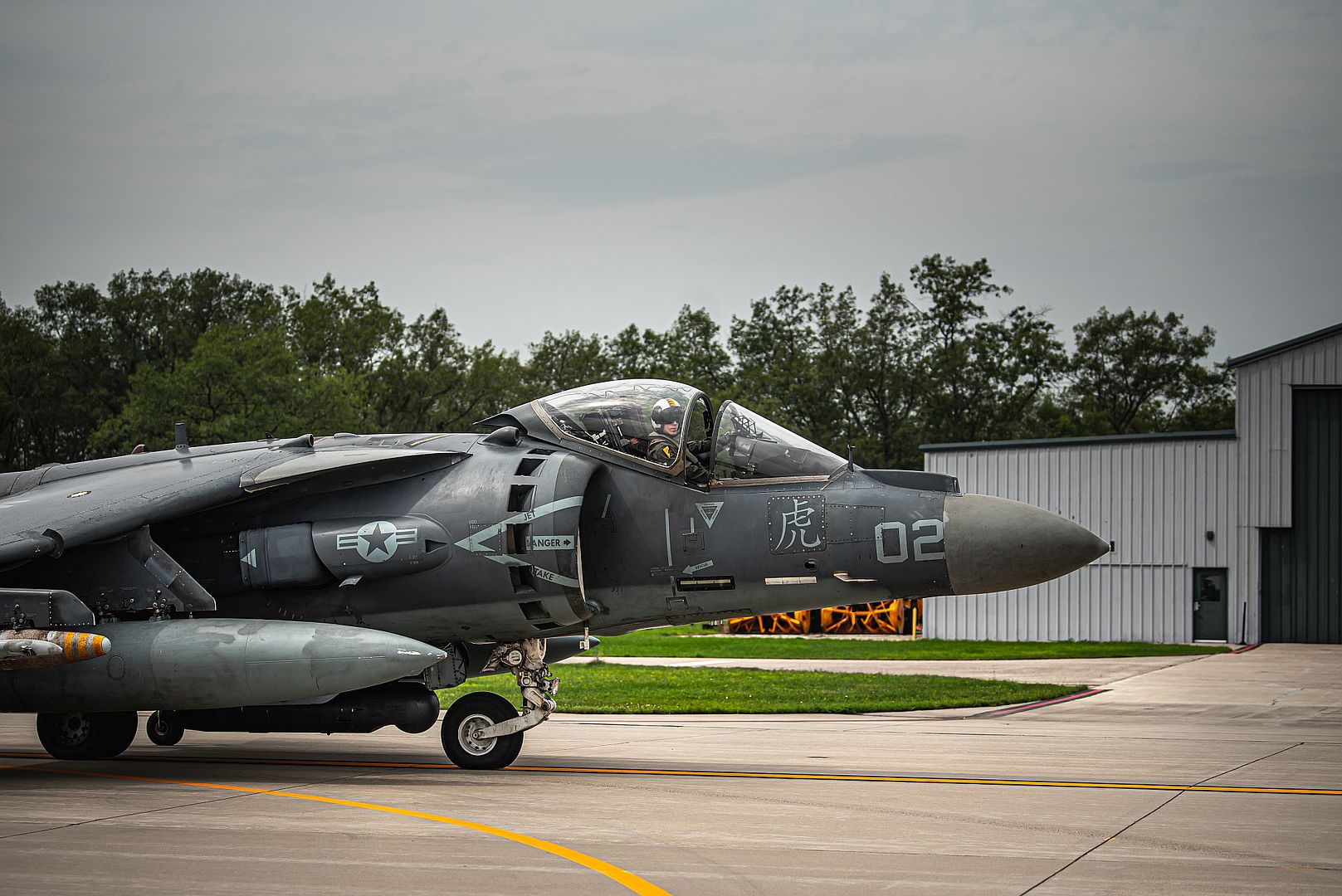
The sun rises at Volk Field Air National Guard Base, Wisconsin on August 10, 2021. Volk Field is hosting Northern Lightning, a tactical-level joint training exercise featuring the integration of 4th and 5th generation assets from the Air National Guard, U.S. Air Force, Navy and Marines. (U.S. Air National Guard photos by Audra Flanagan)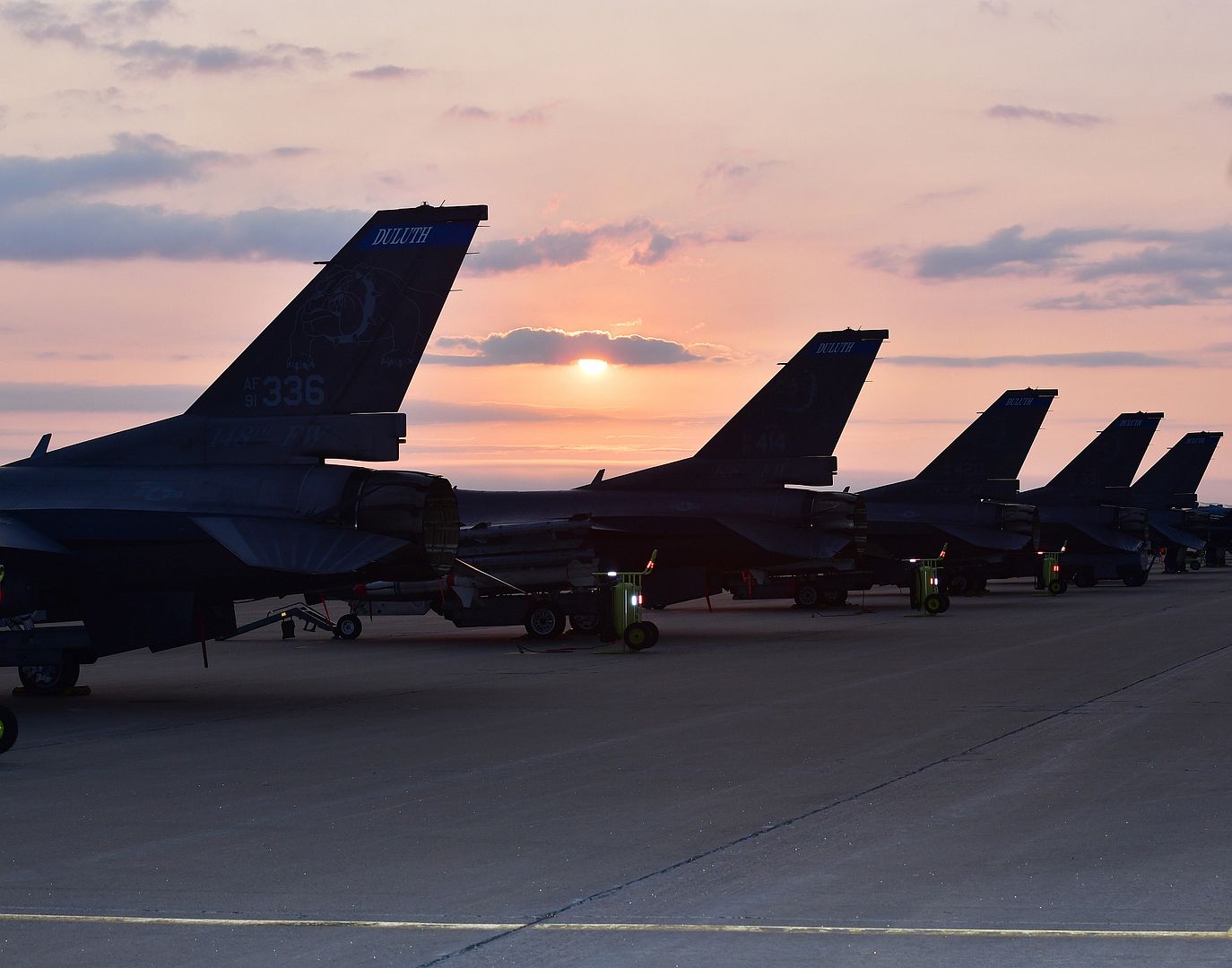
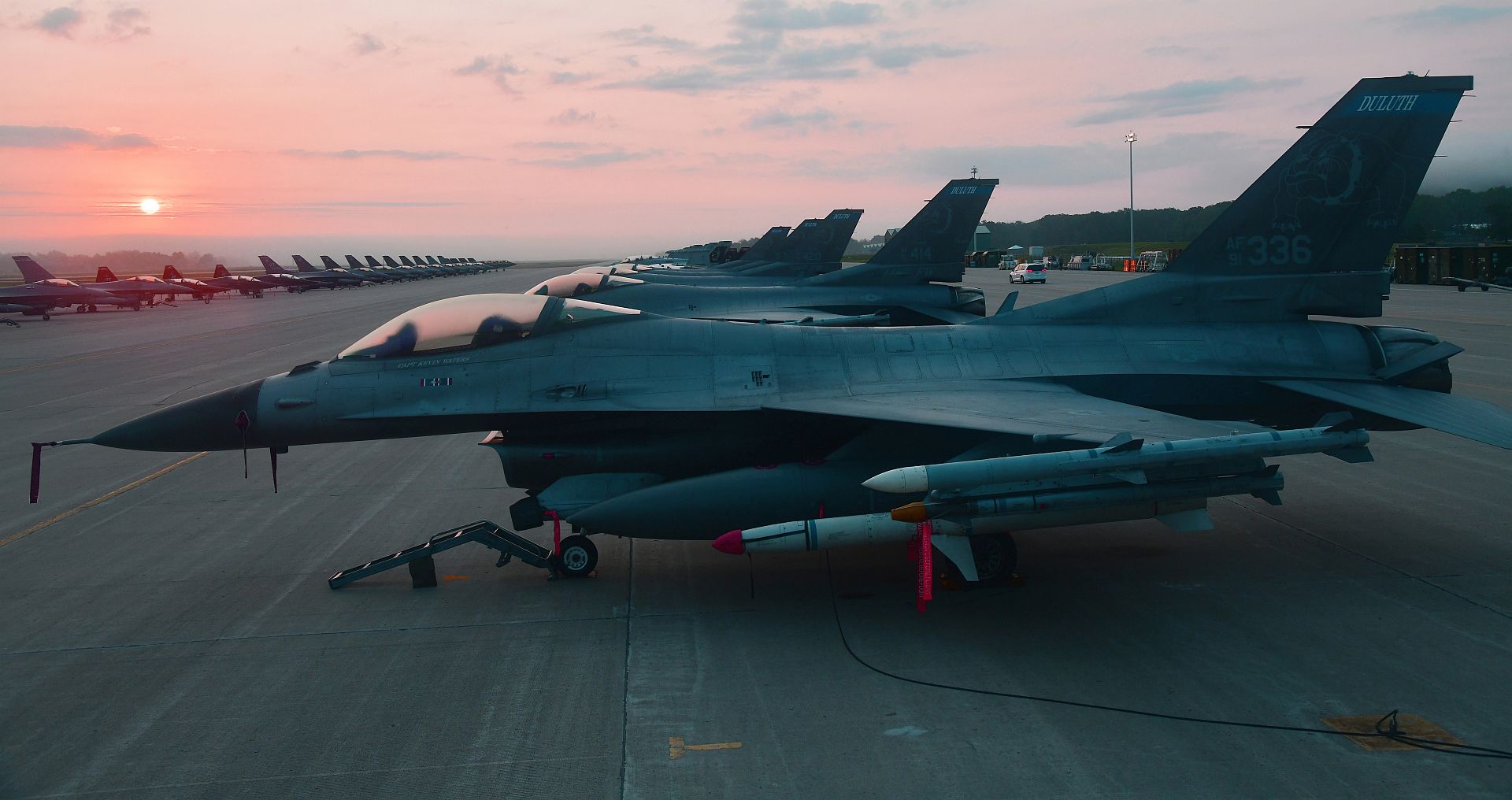
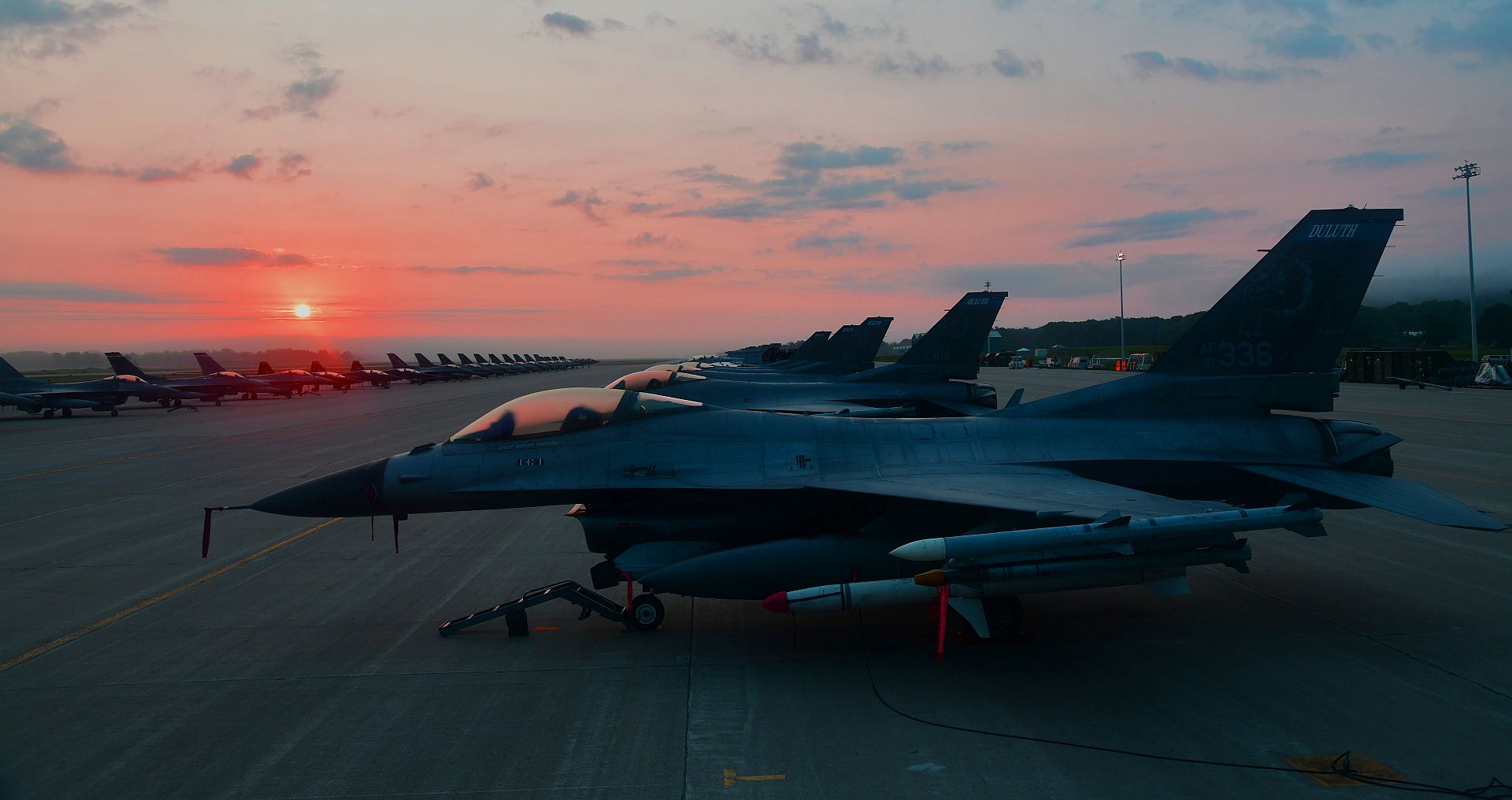
A U.S. Air Force Boeing C-17 Globemaster III assigned to Joint Base Pearl Harbor-Hickam, Hawaii, carrying U.S. Army Paratroopers assigned to the 82nd Airborne Division takes off from Andersen Air Force Base, Guam, to conduct a joint forcible entry operation at the Baturaja Training Area, Indonesia, during Exercise Garuda Shield 21 on Aug. 4, 2021. Garuda Shield 21 is a two-week joint-exercise between the United States Army and Tentara Nasional Indonesia (TNI-AD Indonesia Armed Forces). The purpose of this joint-exercise is to enhance and enrich the jungle warfare ability of both the U.S. Army and Indonesian Army. (U.S. Air Force photo by Airman Breanna Gossett)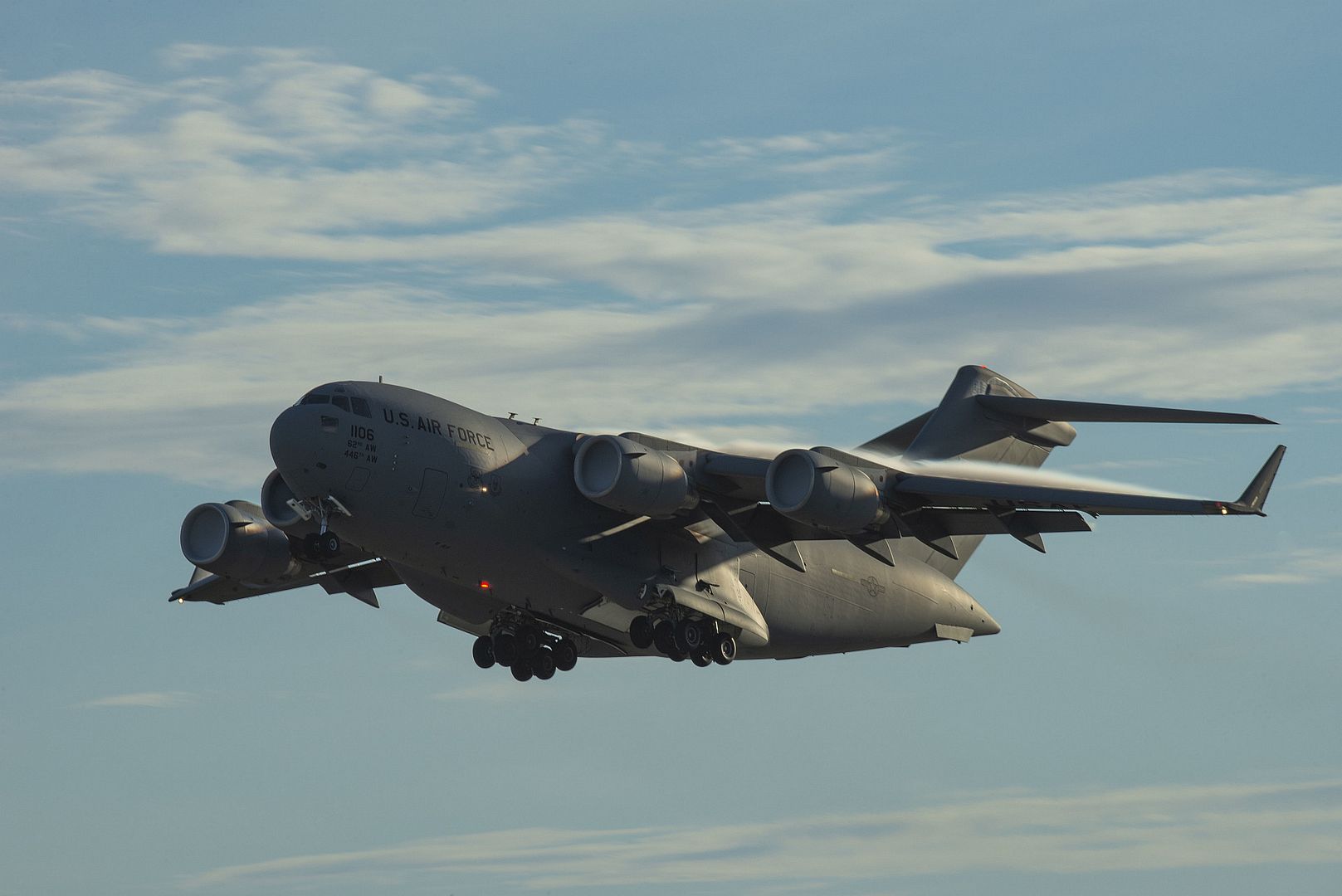
ARABIAN SEA (Aug. 9, 2021) Lt. Derrick Petett and Lt. Melissa Deardorff, pilots assigned to the Shadowhawks of Electronic Attack Squadron (VAQ) 141, fly an EA-18G Growler above the aircraft carrier USS Ronald Reagan (CVN 76) over the Arabian Sea, Aug. 9, 2021. VAQ-141 is attached to Carrier Air Wing 5, the air wing of Commander, Task Force 50, deployed to the U.S. 5th Fleet area of operations in support of naval operations to ensure maritime stability and security in the Central Region, connecting the Mediterranean and Pacific through the western Indian Ocean and three strategic choke points. (U.S. Navy photo)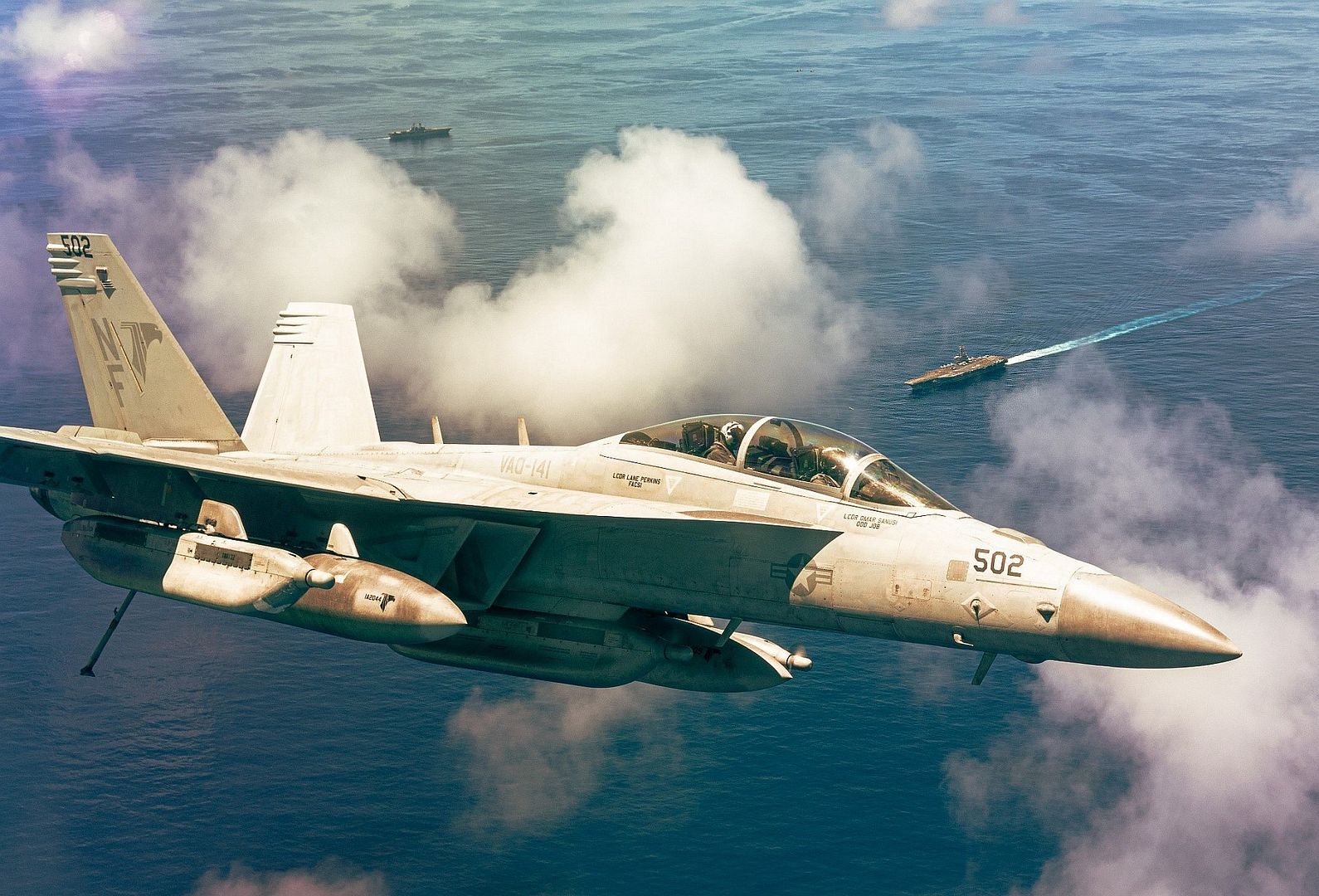
SIGONELLA AIR BASE, SIGONELLA, Italy – Aug. 11, 2021 – Northrop Grumman Corporation (NYSE: NOC) has been awarded a five-year, multimillion-dollar contract from the NATO Support and Procurement Agency (NSPA) in support of the NATO Alliance Ground Surveillance (AGS) Force (NAGSF). The contract, designed to support fleet readiness, covers operations, maintenance and lifecycle sustainment of NATO’s fleet of unmanned aerial vehicles, air vehicle mission command and control stations, and trainer.
“We have a long legacy of partnering with the NATO AGS Force,” said Kenn Todorov, sector vice president, global sustainment and modernization, Northrop Grumman. “We will continue to deliver capabilities and services that optimize aircraft availability and fleet readiness while supporting the uninterrupted execution of the Alliance’s mission of persistent regional defense and deterrence.”
Under this contract, Northrop Grumman will provide full lifecycle sustainment including repairs, onsite maintenance and operations support to NAGSF at Sigonella Air Base, Sigonella, Italy. From the U.S., the team will provide program management, software sustainment, configuration management and technical support including sustaining engineering, technical documentation updates, integrated logistics support data analysis, reach back, airworthiness and system design responsibilities.
“The signature of this contract with Northrop Grumman marks another major milestone towards the In-Service Support Phase of the NATO AGS Core System. It will enable NSPA, in its role as Life Cycle Manager of the system, to sustain this key capability on behalf of the Alliance,” said NSPA General Manager, Mr. Peter Dohmen.
The NATO AGS system of systems, which recently achieved initial operating capability, is comprised of five RQ-4D aircraft, which is based on Northrop Grumman’s wide area surveillance Global Hawk, ground and support segments, and advanced sensor technologies. The wide area surveillance of the RQ-4D Global Hawk and the fixed, mobile and transportable ground stations provide cutting-edge intelligence, surveillance and reconnaissance capability around the clock, and support a full range of missions, including protection of ground troops and civilian populations, border control, crisis management and humanitarian assistance in natural disasters. Northrop Grumman also supports NAGSF with flight mission planning, spares and post design services.
Northrop Grumman solves the toughest problems in space, aeronautics, defense and cyberspace to meet the ever evolving needs of our customers worldwide. Our 90,000 employees define possible every day using science, technology and engineering to create and deliver advanced systems, products and services.
WOODLAND HILLS, Calif. – Aug. 11, 2021 – The UH-60V Black Hawk helicopter, enabled by the Northrop Grumman Corporation (NYSE: NOC) integrated avionics suite, has entered service with the Pennsylvania National Guard’s unit at Fort Indiantown Gap. This First Unit Equipped milestone marks the entry into service of the Army’s first helicopter with a modular, open architecture systems design, Northrop Grumman’s OpenLift.
“The UH-60V’s entry into service is a capstone achievement that speaks to the whole team’s dedication, commitment and longtime partnership with the Army and the National Guard. We’ve now brought a transformational aircraft to fruition,” said James Conroy, vice president, navigation, targeting & survivability, Northrop Grumman.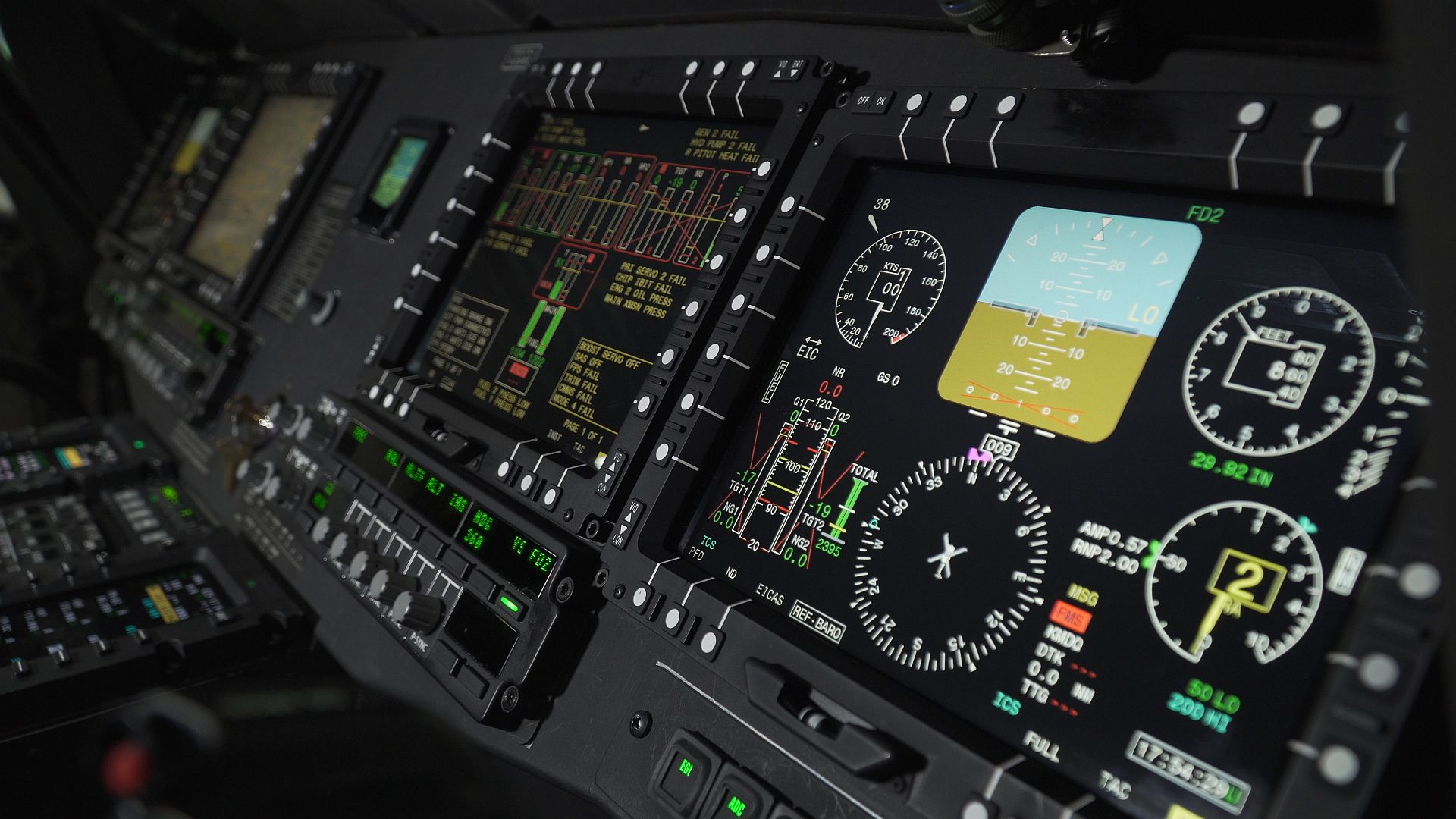
The UH-60V enhances aircrew situational understanding and mission safety while reducing pilot workload. The pilot-vehicle interface is nearly identical to that of the UH-60M, enabling common training and operational employment. The system has been certified by the U.S. Army Combat Capabilities Development Command Aviation Missile Center for operation under Visual Flight Rules.
“The OpenLift modular, open systems architecture gives the Army a highly survivable UH-60 that can be upgraded over time to meet changing mission requirements, and it bridges the enduring and Future Vertical Lift fleets,” said Conroy.
OpenLift, Northrop Grumman’s modular open systems architecture for the UH-60V, can be adapted to numerous aircraft and is approved for export.
Northrop Grumman solves the toughest problems in space, aeronautics, defense and cyberspace to meet the ever evolving needs of our customers worldwide. Our 90,000 employees define possible every day using science, technology and engineering to create and deliver advanced systems, products and services.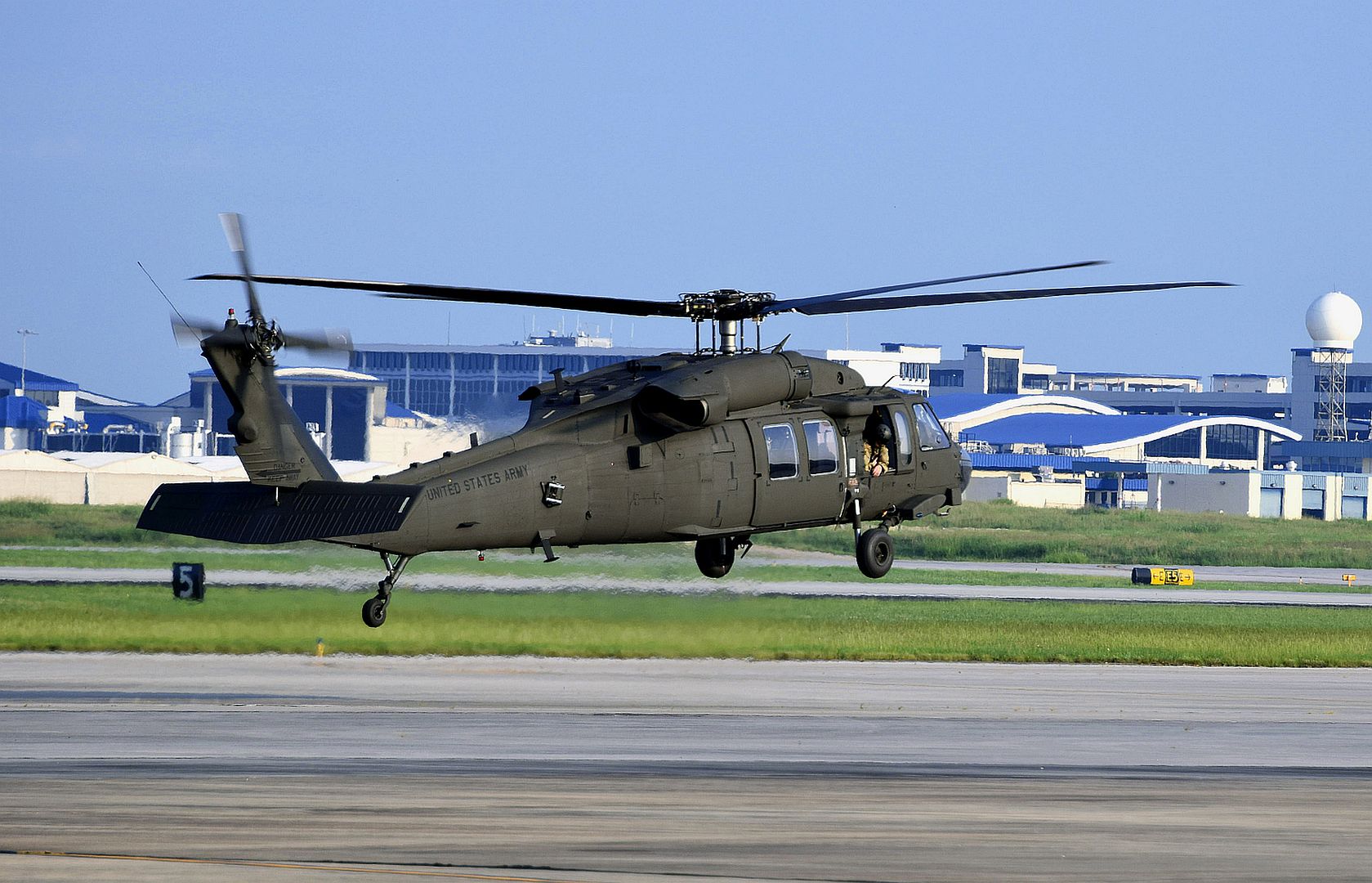
SAN DIEGO – 11 August 2021 – For the first time ever, over the high desert of southern California on July 2, 2021, General Atomics Aeronautical Systems, Inc. (GA-ASI) used an Avenger® Unmanned Aircraft System equipped with a Lockheed Martin Legion Pod® to autonomously track and follow targets of interest. This industry-funded demonstration brings military aviators one step closer to gaining autonomous systems that support manned-unmanned teaming (MUM-T) in joint all-domain operations.
“GA-ASI is committed to developing persistent and affordable solutions to meet the challenges of air domain awareness and defensive counter air against near-peer threats,” said GA-ASI Vice President of Special Programs Chris Pehrson. “The success of this Avenger/Legion Pod demonstration represents an important step toward more sophisticated autonomous missions for unmanned aircraft and MUM-T in a complex battlespace.”
During the flight, Legion Pod’s infrared search and track system, IRST21®, detected multiple fast-moving aircraft operating in the area and fed target tracking information to the Avenger’s autonomy engine. The autonomyprioritized the targets informing Avenger maneuvers for target engagement.
“This flight demonstrates a critical sensor capability that enables unmanned combat air vehicles like the Avenger to operate autonomously in Joint All-Domain Operations,” said Dave Belvin, vice president of Sensors and Global Sustainment at Lockheed Martin. “We designed Legion Pod to passively detect and track targets for tactical fighter pilots in radar-denied environments. This capability provides the data necessary to enable unmanned vehicles to track and engage hostile airborne targets without human intervention.”
This flight builds on GA-ASI’s autonomy flight test series that started in December 2020 to demonstrate next generation air-to-air Unmanned Aerial Vehicle functionality. Integrating Legion Pod software into the Avenger Mission Management System (MMS) took less than three months and was enabled though the Open Mission Systems (OMS) message standards. This OMS demonstration proves that existing operational systems can be rapidly integrated across platforms with minimal cost.
About GA-ASI
General Atomics-Aeronautical Systems, Inc. (GA-ASI), an affiliate of General Atomics, is a leading designer and manufacturer of proven, reliable remotely piloted aircraft (RPA) systems, radars, and electro-optic and related mission systems, including the Predator® RPA series and the Lynx® Multi-mode Radar. With more than six million flight hours, GA-ASI provides long-endurance, mission-capable aircraft with integrated sensor and data link systems required to deliver persistent flight that enables situational awareness and rapid strike. The company also produces a variety of ground control stations and sensor control/image analysis software, offers pilot training and support services, and develops meta-material antennas. For more information, visit www.ga-asi.com.
Avenger, Lynx, Predator, SeaGuardian and SkyGuardian are registered trademarks of General Atomics Aeronautical Systems, Inc. Legion Pod is a registered trademark of Lockheed Martin.
Post a reply
- Go to Next topic
- Go to Welcome
- Go to Introduce Yourself
- Go to General Discussion
- Go to Screenshots, Images and Videos
- Go to Off topic
- Go to Works in Progress
- Go to Skinning Tips / Tutorials
- Go to Skin Requests
- Go to IJAAF Library
- Go to Luftwaffe Library
- Go to RAF Library
- Go to USAAF / USN Library
- Go to Misc Library
- Go to The Ops Room
- Go to Made in Germany
- Go to Campaigns and Missions
- Go to Works in Progress
- Go to Juri's Air-Raid Shelter
- Go to Campaigns and Missions
- Go to Works in Progress
- Go to Skinpacks
- Go to External Projects Discussion
- Go to Books & Resources
